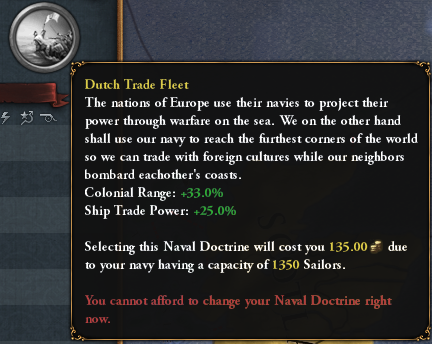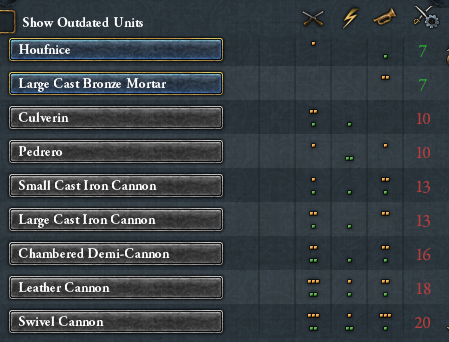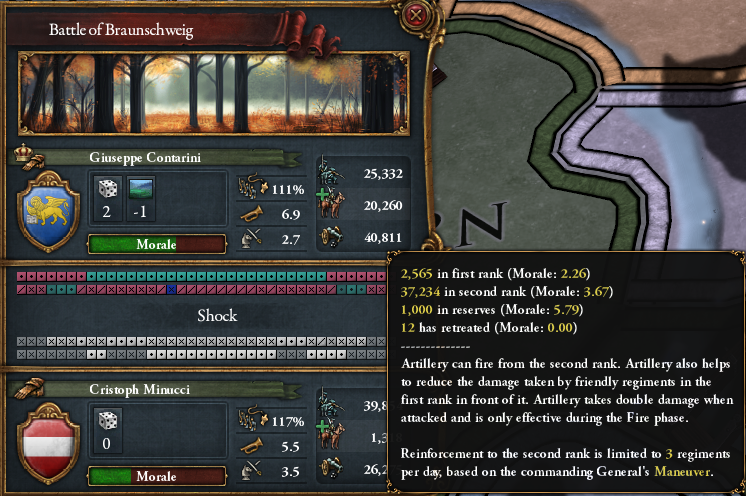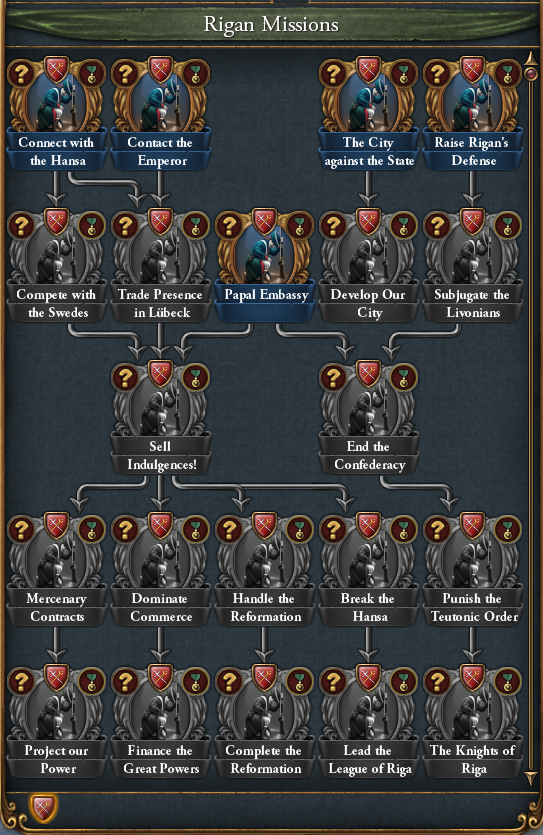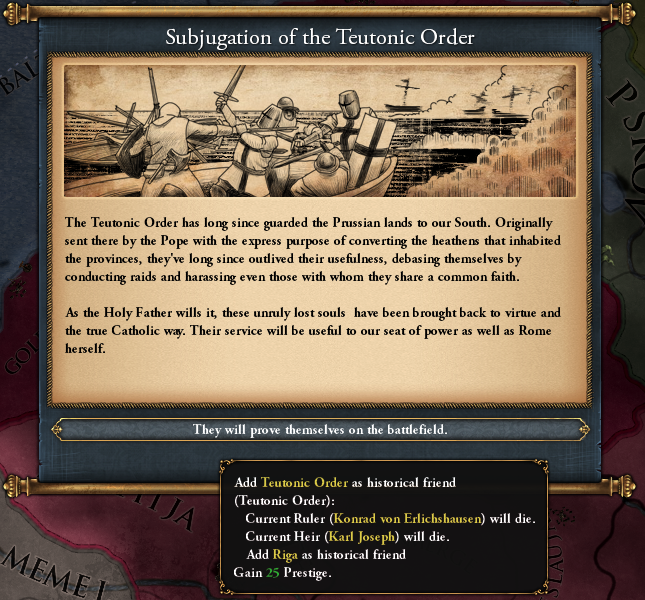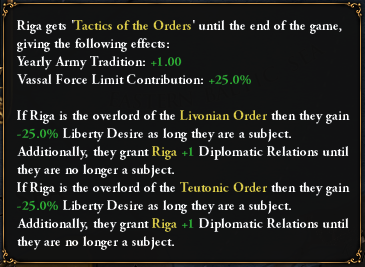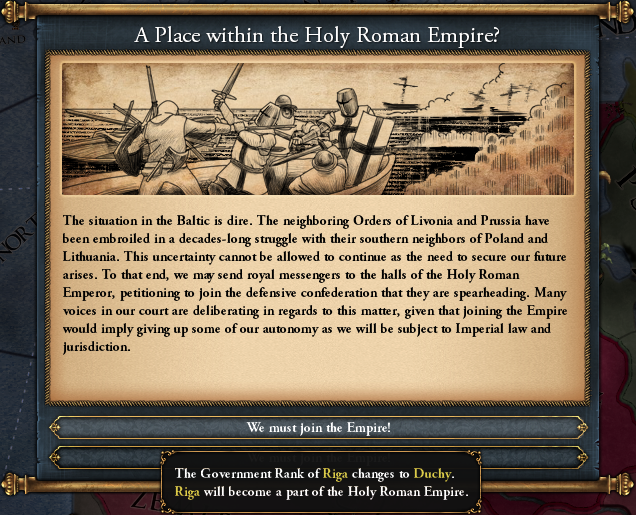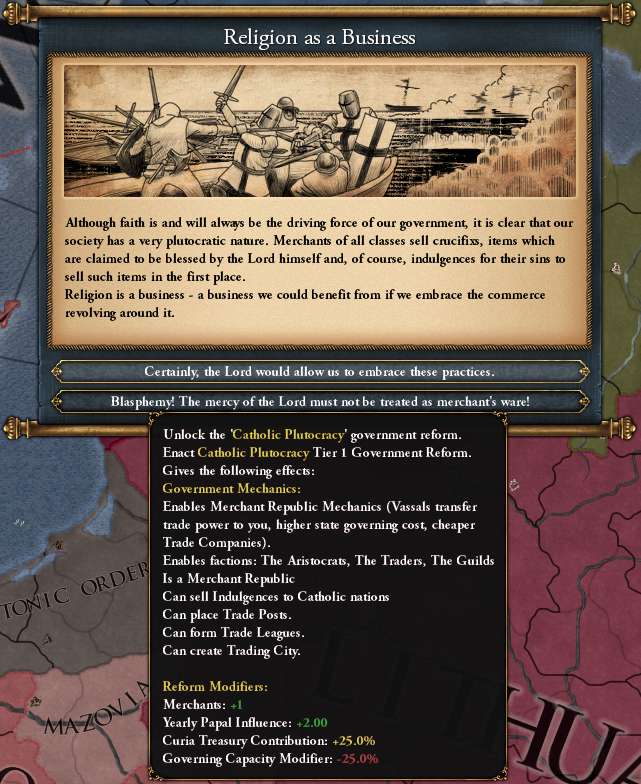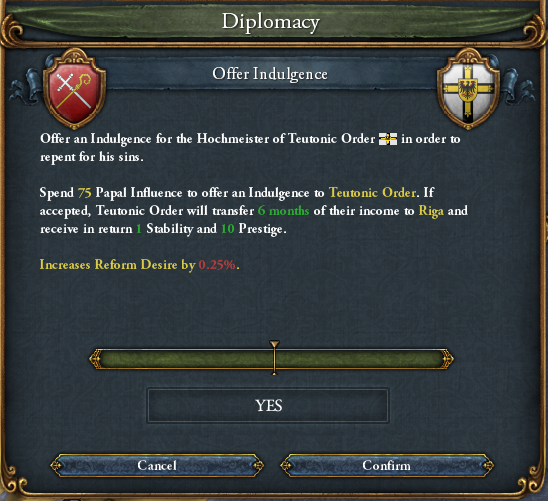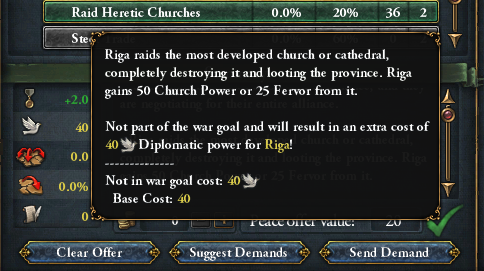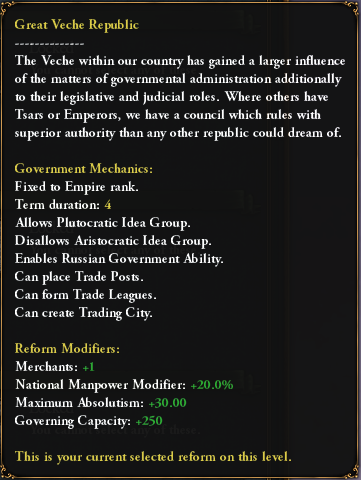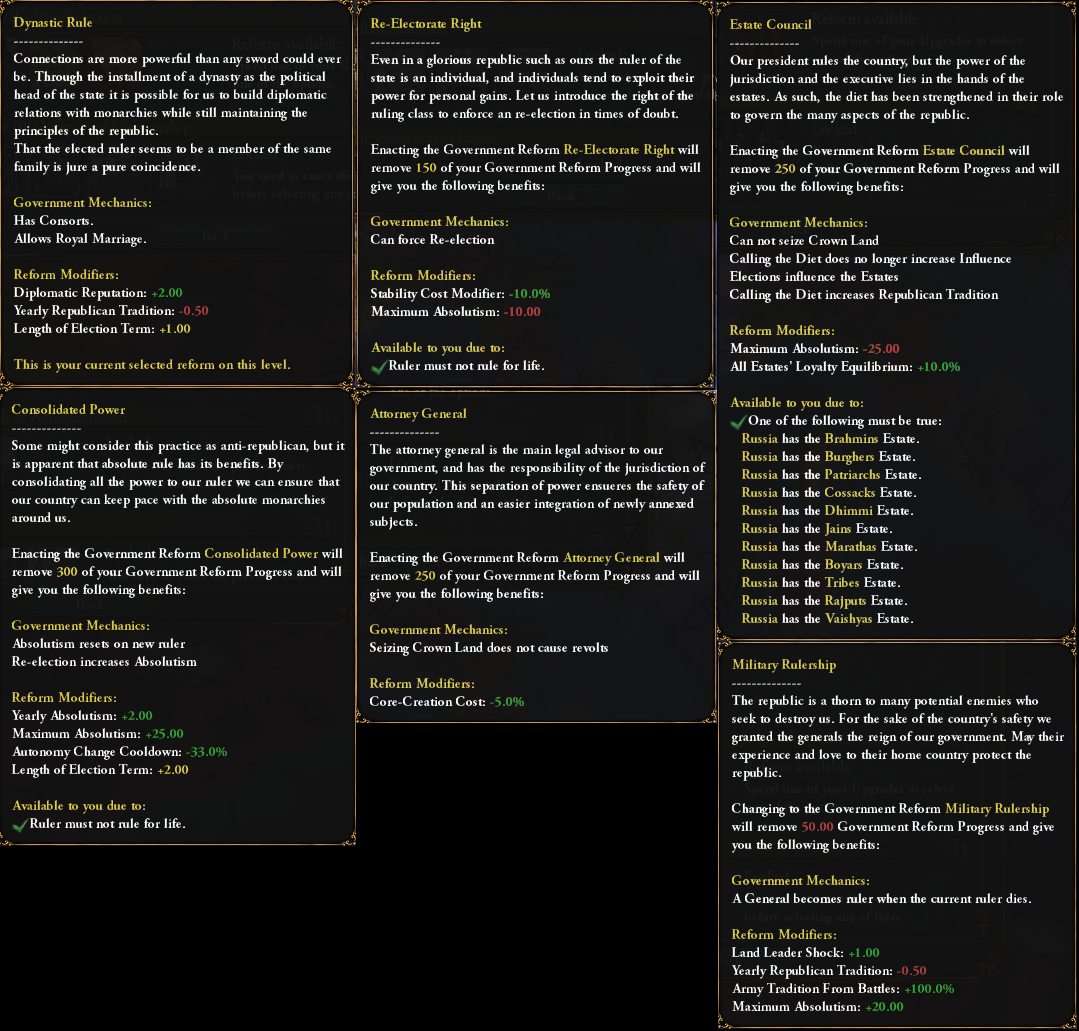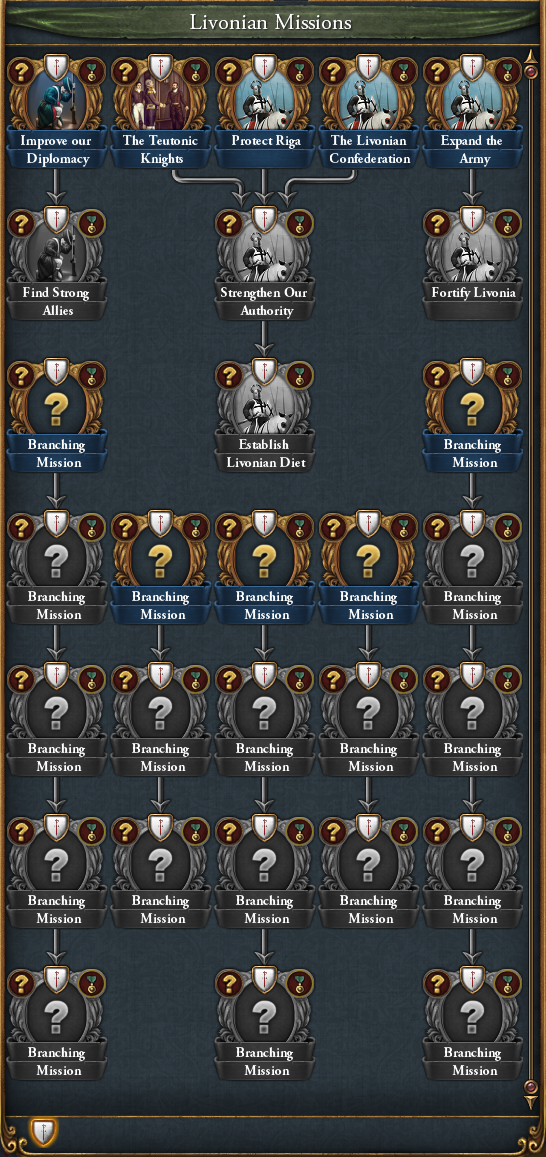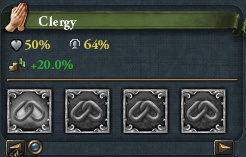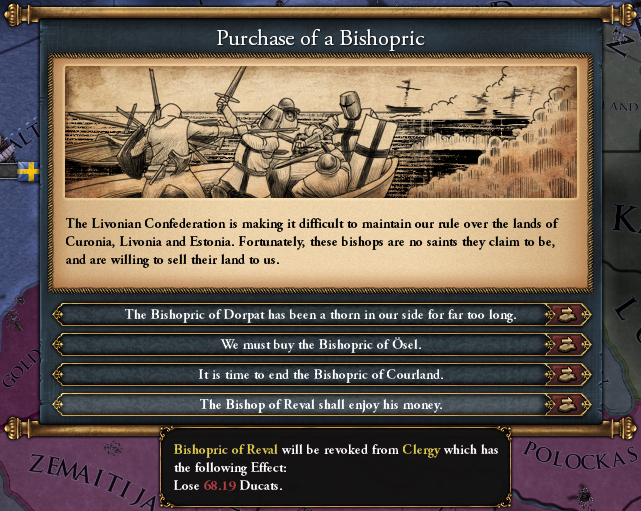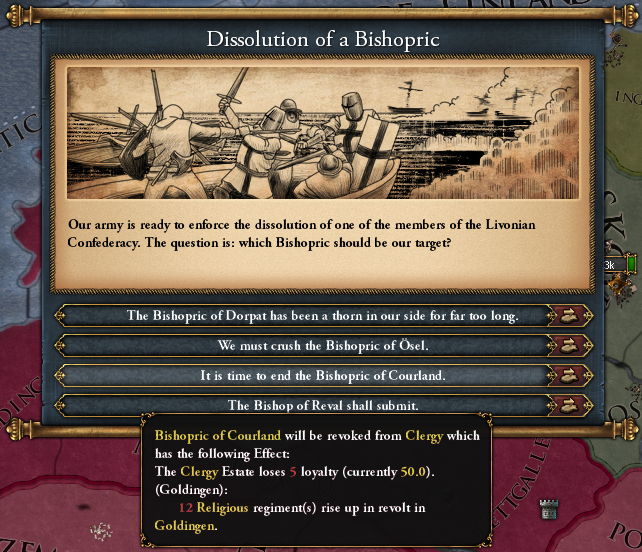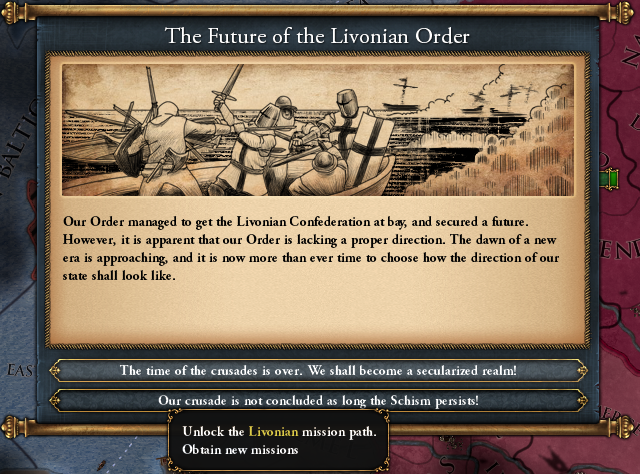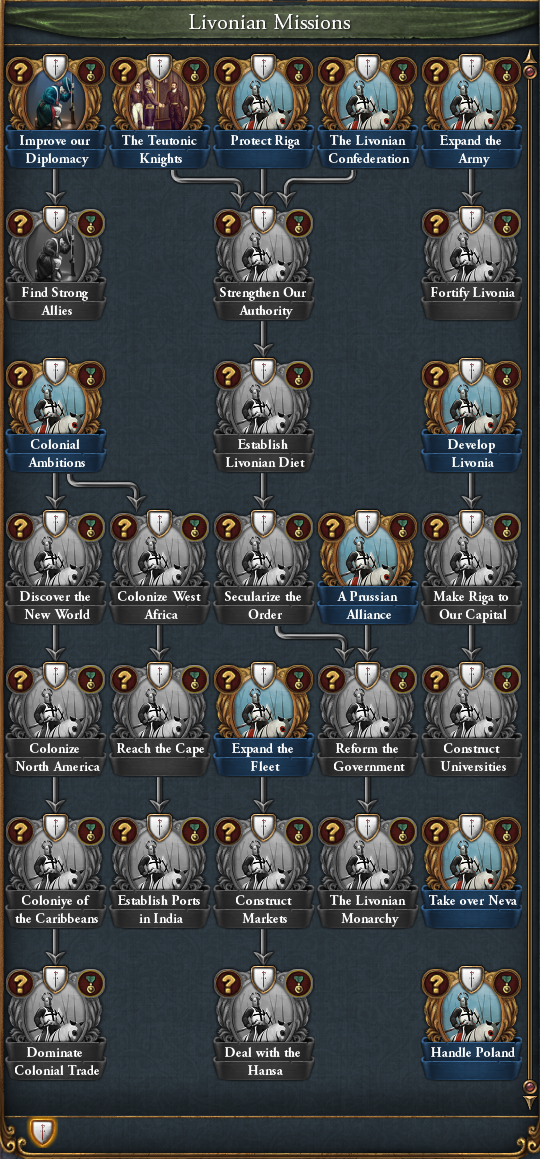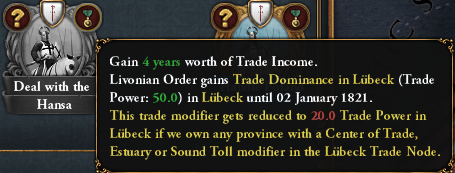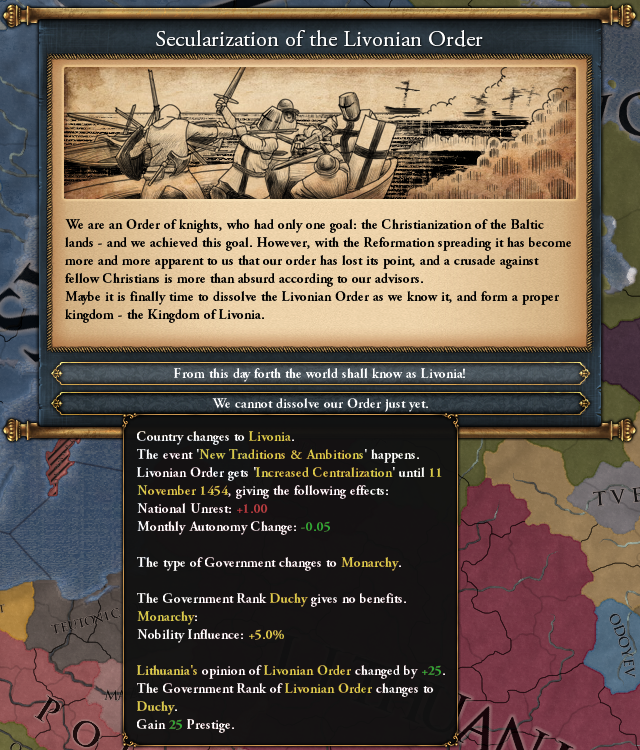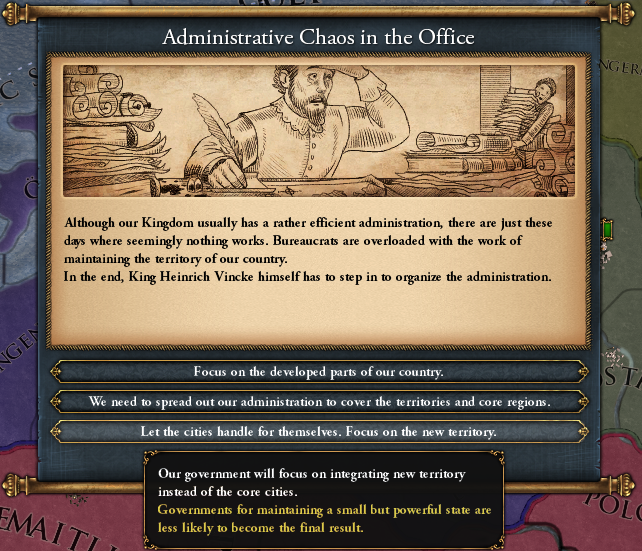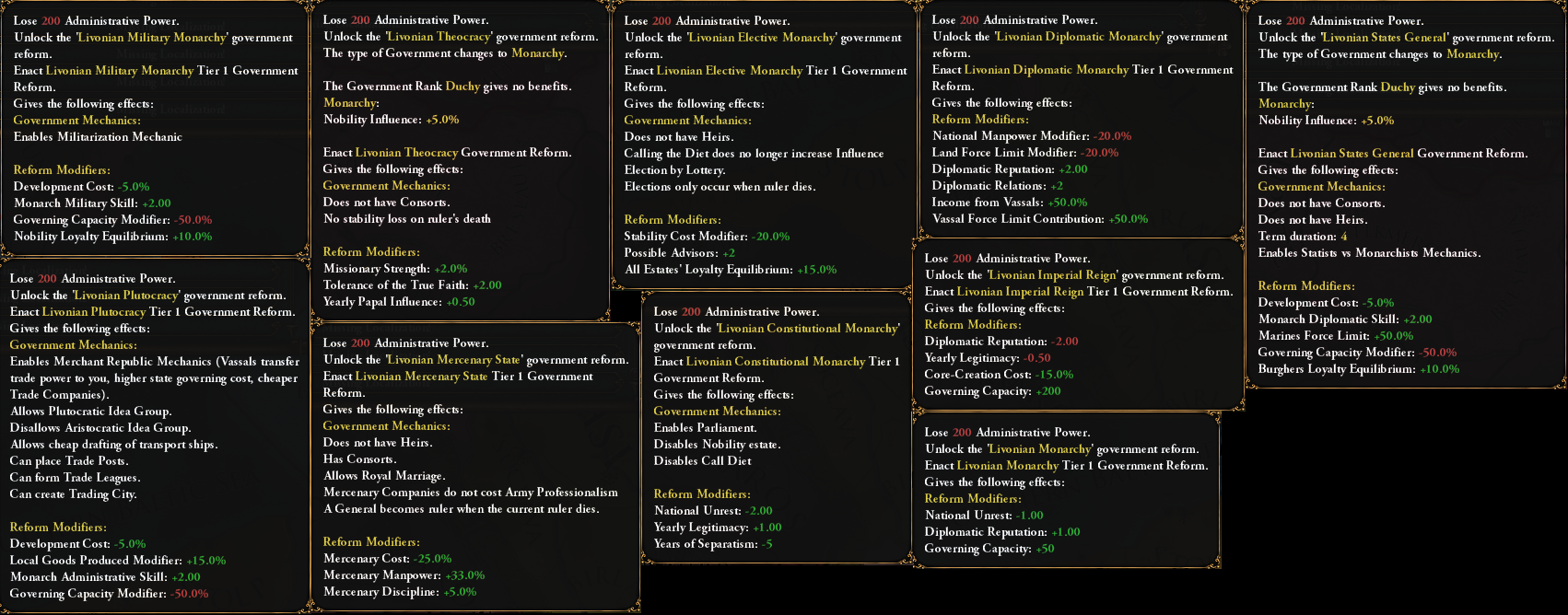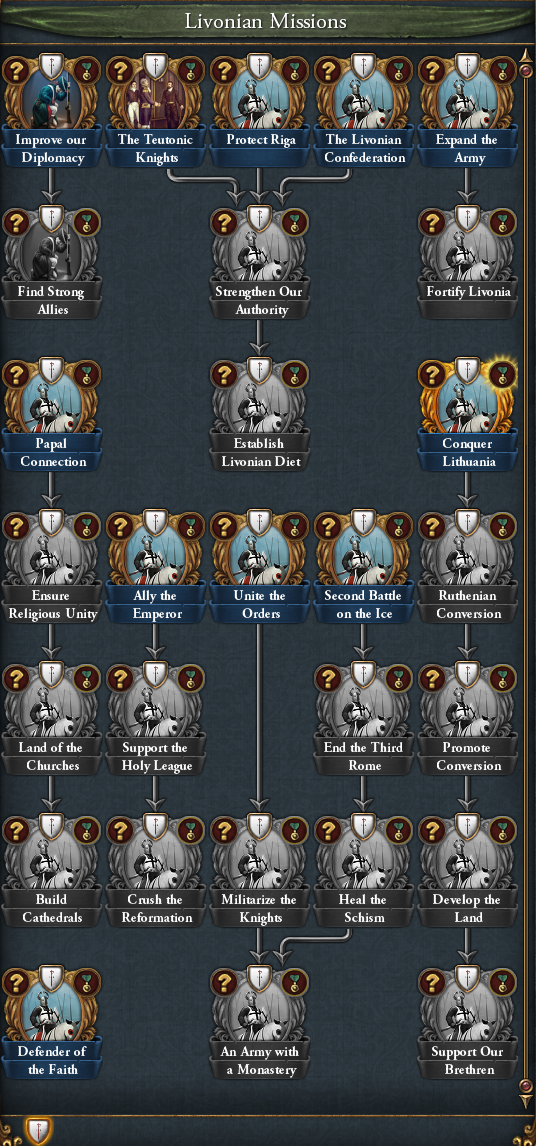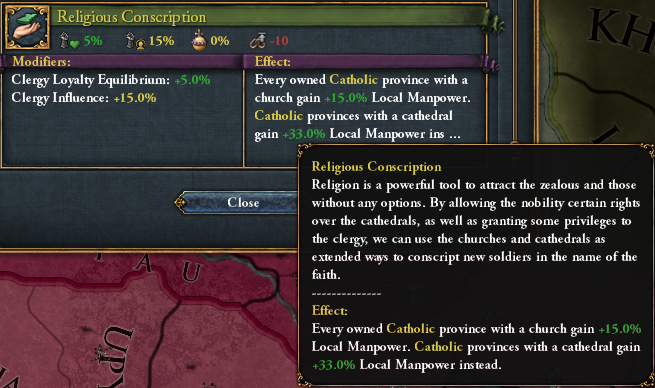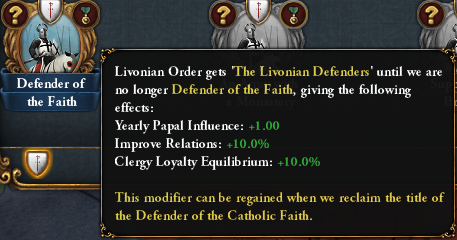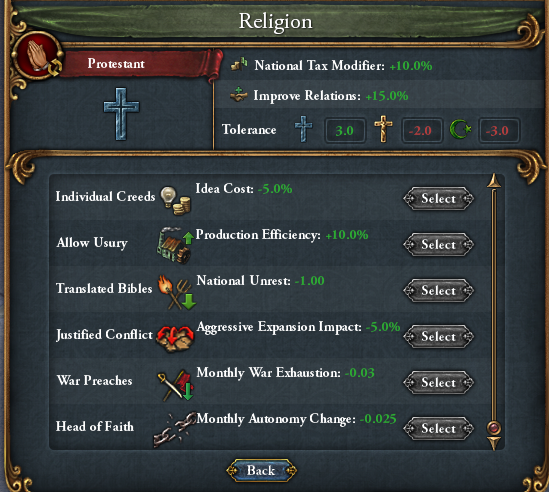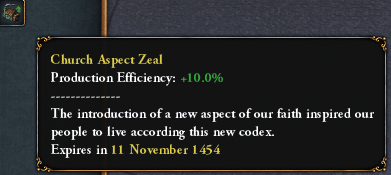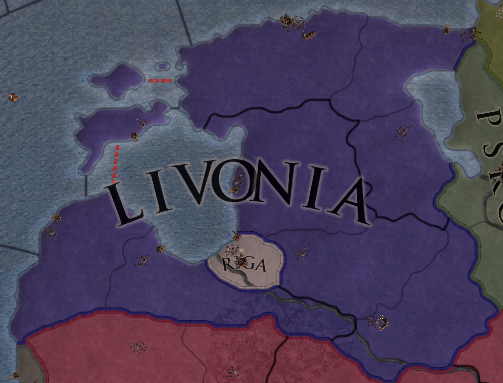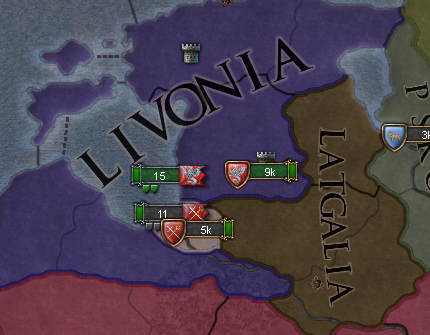
Jul 12, 2022
Europa Universalis IV - PDXRyagi
Hyvää päivää! Welcome to this week’s developer diary where I will be revealing two new mission trees: Finland and Lübeck! As a note ahead of time, the new Finland mission tree will be part of the upcoming DLC, while we decided to grant Emperor’s Lübeck tree to Hamburg and Bremen (with the appropriate tweaks, available for Emperor owners) and give Lübeck a brand new, expansive set of missions for the base game. However, more on that further down!
Please keep in mind that the numbers showcased here are NOT FINAL and are very much subject to change based on your feedback!
During the timeline of the game, Finland rested under the crown of Sweden and had some regional development in terms of its farming population. The Finnish cavalry known as the Hakkapeliita were famed for their ability to provide valuable skirmishers, reconnaissance, and devastating charges in campaigns against both Russia and Poland. However, as with the Teutonic Order, Gotland and Livonia, this set of missions revolves around a scenario in which Finland fought (and won) their independence, making them a valid contender for the Scandinavian crown and expanding their domain across several shores and regions.
Despite Finland’s status as a releasable tag, we felt it was appropriate to satisfy the demands for a proper and interesting Finnish mission tree:
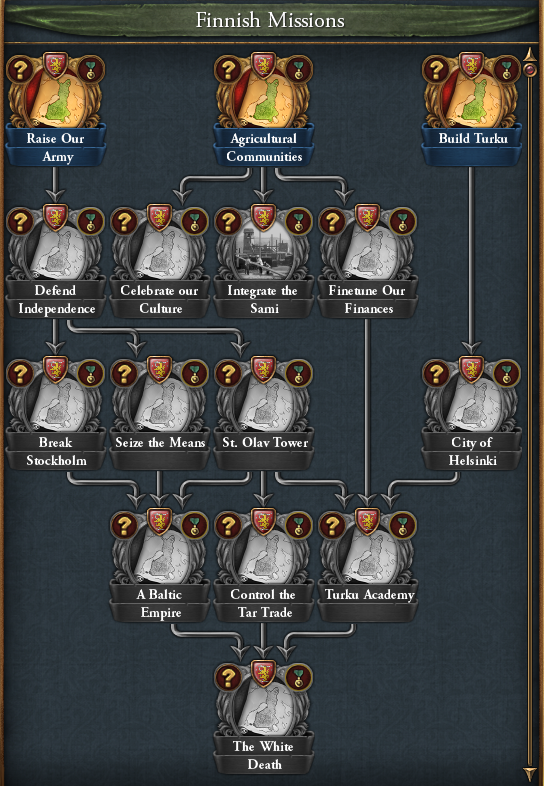
Finland will receive 15 new missions, each one carefully crafted to offer new and unique rewards, leading into the formation of Scandinavia and the domination of the Baltic shores. Please note that the art of the icons is placeholder and is not final!
Raise Our Army will give a short yet tactically crucial bonus to your forces, allowing you the ability to outmaneuver the numerically superior Swedes and their wartime allies:
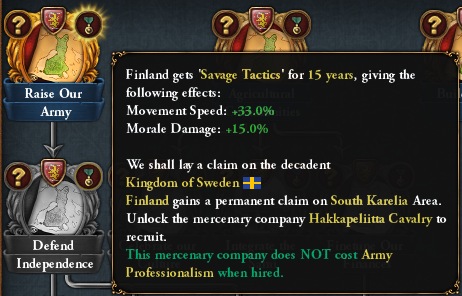
What’s more, you will gain access to a unique version of the Hakkapeliitta Cavalry which costs no Army Professionalism to recruit:

The mission Defend Independence will require you to make allies, raise your stability and bring balance to your financial affairs by having no loans. As a reward, you will be able to write your own story, your saga, which will grant you a scaling reward based on your ruler’s achievements during his lifetime at the time of completing the mission. The factors for the reward are:
Each of these will grant our ruler between 1 and 3 monarch stats (or monarch points if already at 6), along with this powerful ruler-tied modifier as well as permanent claims on the Baltic Trade Node (that’s a surprise tool that we will use later):
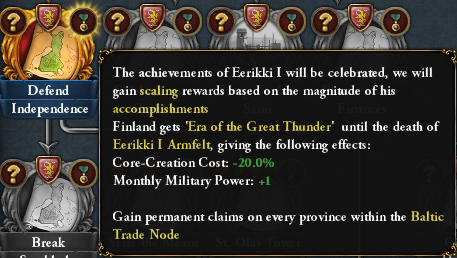
Completing the aforementioned mission will open the way for 3 new missions. First off, conquering Stockholm from your former overlords will change the name of Stockholm (if your culture is Finnish), grant it some development and give you access to a discounted advisor:
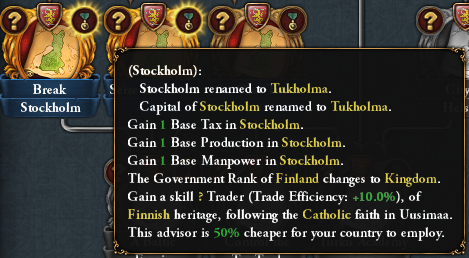
Seize the Means will task you with seizing the means of production behind Europe’s prime source of copper and will grant you a good bit of ducats from your copper and iron production, the ‘Industrious’ trait (if your ruler has enough available slots) as well as the following reward:
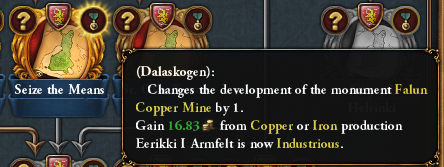
Expanding St. Olav’s Tower will yield quite an interesting and powerful local reward:
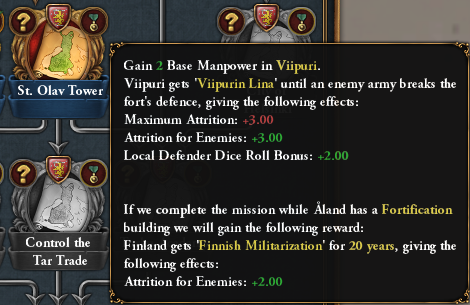
Keep in mind that if for whatever reason an enemy force (another nation or rebels) takes control of the province, you will lose the above modifier!
Declaring a Baltic Empire will give you a new name and if you have Mandate of Heaven the following reward along with granting you the rank of Empire:
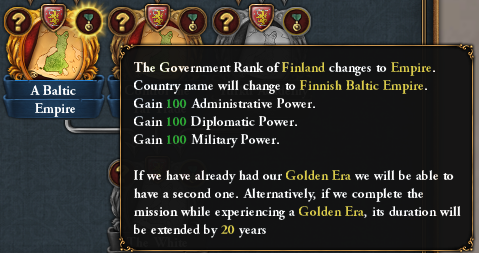
On the right side of the tree you will see missions relating to the development of the countryside and the founding of new cities:
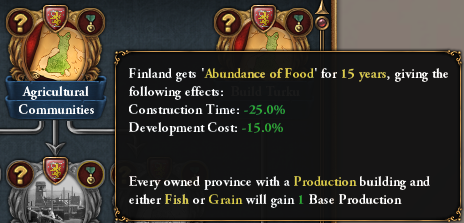
Founding Turku, an important city for Finland guarding the way to and from Stockholm:
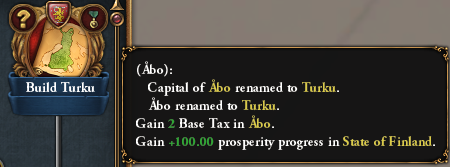
Founding Helsinki will grant a level 2 Center of Trade as well as a few buildings for your newly developed province. Note that if you complete the mission with a Shipyard and a Dockyard, you will instead gain their upgraded versions:
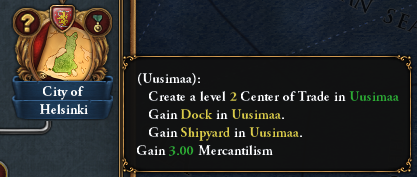
Finetuning the Finances of the realm will require you to increase your income, employ a level 2 Administrative Advisor, run a positive monthly balance and have no loans:

The Turku Academy, your domain’s first university and institution of higher education, will yield the Scholar trait for your ruler, Innovativeness and more:
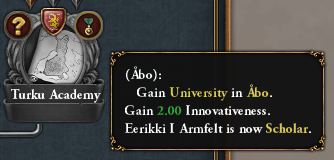
The culmination of the Finnish tree ends with unleashing the White Death upon Europe and a powerful permanent country modifier to go with it:
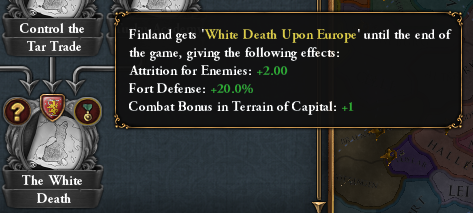
Of course, you are welcome to form Scandinavia and gain the Scandinavian mission tree, however Finland will not have a unique Scandinavian tree, as its senior siblings in the region do.
Now, 1.34 will also hone and improve as well as add new content for the base game. One such addition is an expanded mission tree for Lübeck. Before we delve into it, I would like to repeat that the Emperor DLC Lübeck tree will be available for Hamburg and Bremen (if you have the Emperor DLC) with a good number of tweaks and new rewards as well as localisation.
Moreover, the Hanseatic League will now be a formable nation with its own set of national ideas (essentially Lübeck with a different name and better ideas). Since that’s out of the way, let’s go, Lübeck!
From a historical perspective, Lübeck (and the Hansa as a whole) has seen better days. The 15th century brought a lot of decline for their merchants, with business shifting westwards towards the English channel. You are tasked with reviving the mercantilist grip of the League, expanding it and creating a trade Empire the likes of which the world has never seen. To assist you in your endeavors, the various missions of your tree also benefit the members of your trade league, giving you a reason to care for them and if possible, expand their ranks:

The top half of the tree will focus on expanding the League outwards. However, many of these missions will not require direct conquest. You will be able to complete many of these via diplomacy as well! The goal is to give the player the freedom to choose how they want to approach the tree.
The conquest branch will start with requiring you to raise an army which will seamlessly grant claims for and flow into missions about Visby, Mecklenburg, Riga and more.

Gateway to the East will require you to have Riga be part of the trade league and have high opinion of you or control the similarly named province as well as having a certain amount of troops.
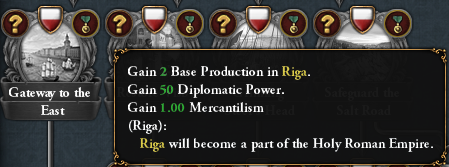
Restore Visby will lead you to restoring a historical stronghold for the League:

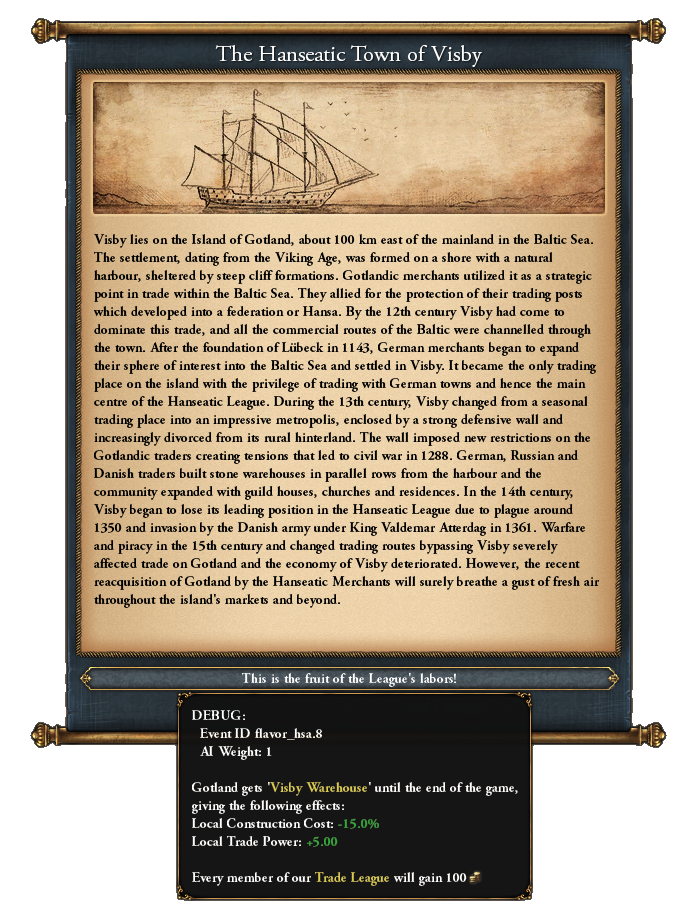
Gaining ports in Danzig, cooperating with the Traders and developing the city of Danzig will grant the following benefits:
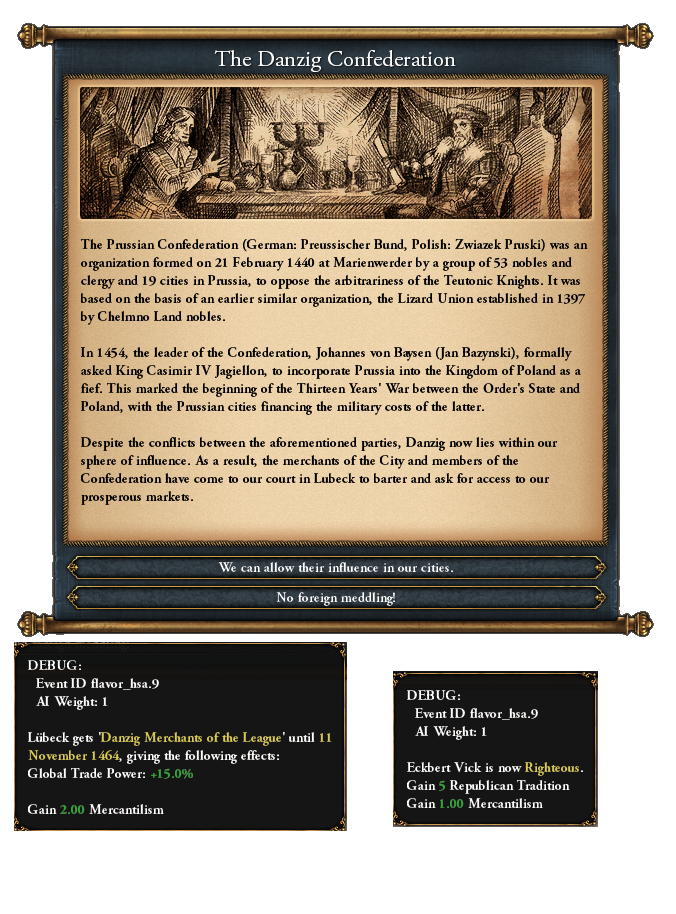
The conquest path ends with the appointment of an official War Minister. Every different military advisor will grant a different, dynamic reward:
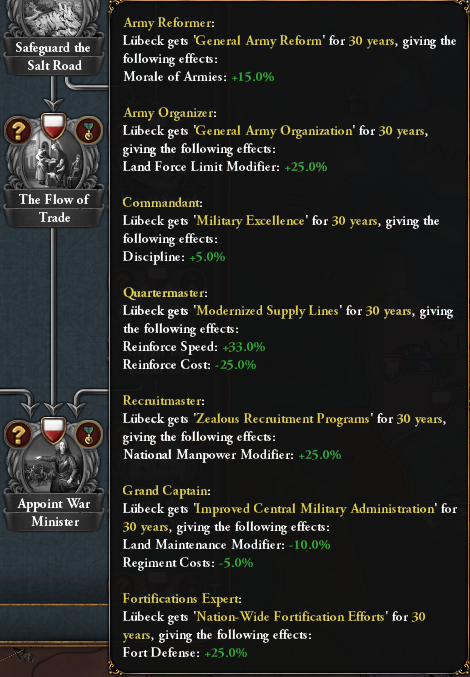
The second part of the tree is wholly dedicated to the internal affairs of both Lübeck itself and the Hansa as a general league of trade nations. Initially, you will have to expand the Old City of Lübeck and its market, yielding powerful Trade Efficiency and Institution Spread modifiers for a few years followed by the Peace of Vordingborg, imitating the styles of Italian Bookkeeping and Financing the Guilds of Lübeck:

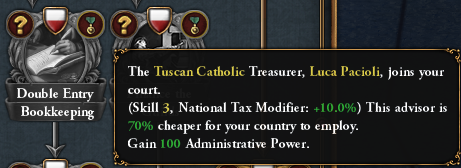
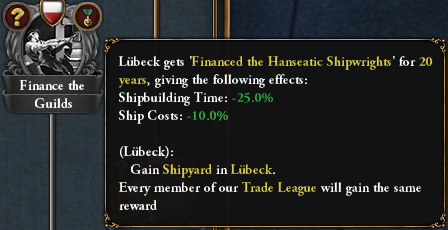
Of course, no Hansa playthrough would be complete without a mission to address and expand the Hansehalle, the legendary administrative center and the heart of the entire Hansa:

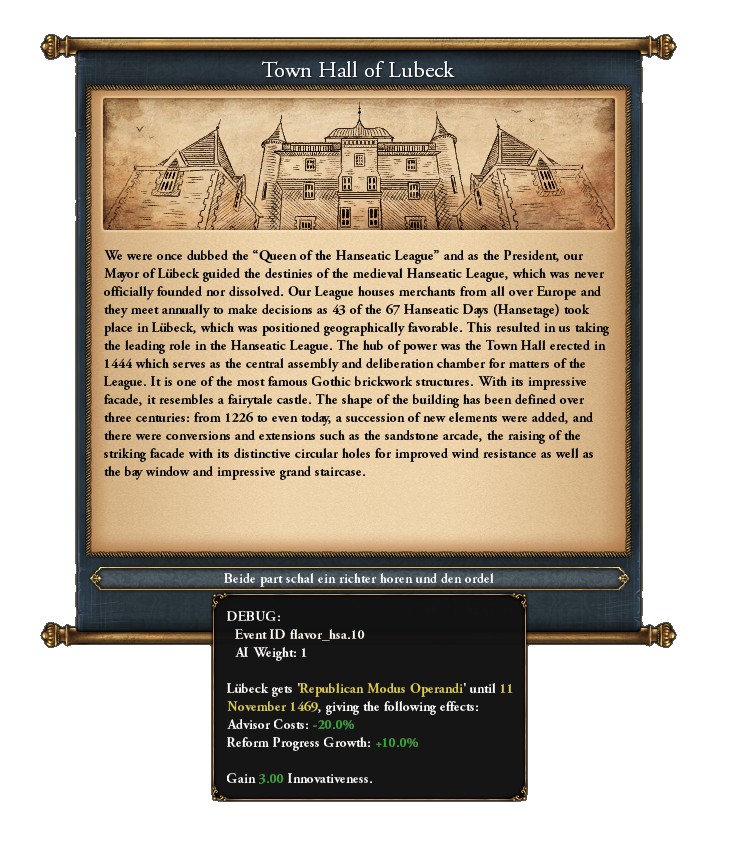
Funding the shipbuilders’ Guild will grant a flavor event about the legendary Hanseatic Cog which will grant Light Ship Cost as well as Sailors and increased Naval Leader Maneuver. Elsewhere, Organize Hanseatic Diets will require you to bring peace within the Trade League and develop Diplomatic channels between yourself and potential members or subjects:

Impose Lübeck Law will grant another dynamic reward, based on which faction is in power at the time of completion:
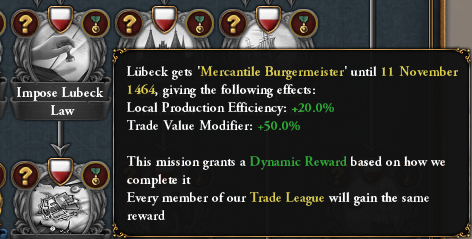
Presenting a grown and powerful economy as well as increasing your total development in the Tend to the Towns mission will yield a positive bonus for you and your Trade League members:
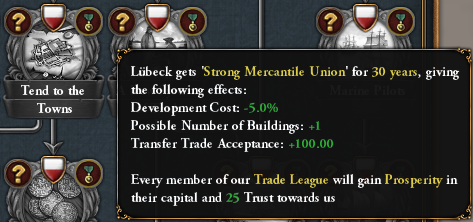
Developing the Mineral Trade in Europe has quite a spicy reward that will, just like its predecessors, change depending on the circumstances of its completion, here’s the direct and less likely outcome of importing large amounts of precious metals in your ports:
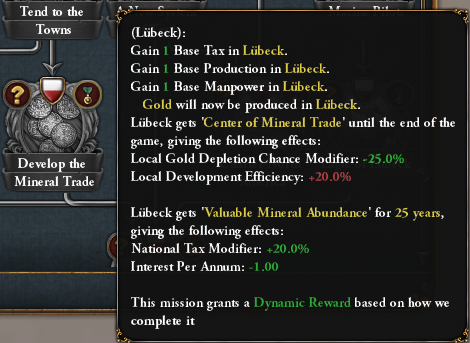
To wrap up the flavor part of the tree, declaring the Queen of the Hansa mission will turn all members of your trade League into subjects and grant a diplomatic relations modifier to cover part of the upkeep costs for 30 years. Furthermore, you will gain monarch power scaled to the Development of your capital, 10 points per development to be precise:
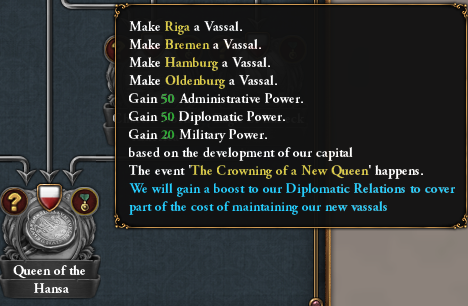
The event Crowning of a New Queen grants 2 different bonuses. Either you change your country’s name to The Hanseatic League and gain a new idea set or keep your current ideas while your ruler gains +1 adm/dip/mil and you gain 3 Mercantilism:
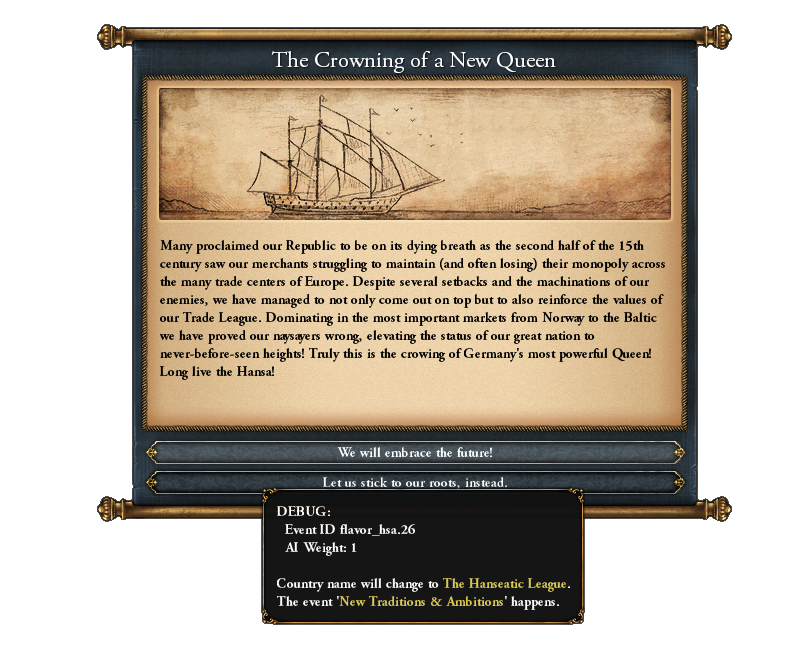
The new Hanseatic League national ideas:
Earlier in this Developer Diary, I mentioned that the Emperor DLC Lübeck tree will be playable for Hamburg and Bremen, since Lübeck got a shiny new tree. To add to that, the Hanseatic League, which is the reward for the final flavor mission for Lübeck, is now available as a formable nation and will come outfitted with the Lübeck tree and the evolved idea set I showcased just above.
In the interest of time, this Developer Diary cannot be too large. Thus, we have intentionally omitted showcasing the rest of the flavor coming for Lübeck. This Diary barely covers 40% of the new content! As mentioned above, this Lübeck mission tree will be part of the **base game** and will come fitted with 36 new missions and 20 new events!
Lastly, I would like to bring another small change to your attention: the UI for Estates has been reworked and I would like to give special thanks to Artemis, whose UI work served as the basis for our own:
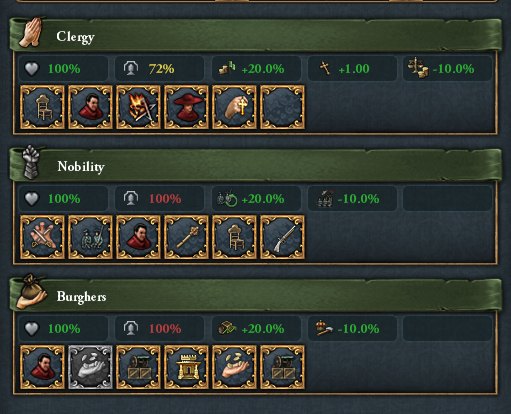
Now passing the mic over to my dear friend and colleague Ogele to talk about new shiny Theocratic Reforms!
Hello there!
In the last development diaries we have shown new government reforms for monarchies, republics and even pirate republics which will all be part of the 1.34 update. Today I want to finish this topic for good as I will present to you what we have in store for theocracies!

Theocracies were the last on our list for new government reforms and had already a bunch of interesting and fun choices to pick from. As such, they don’t receive as many new reforms as for example monarchies and republics do. With that being said, we still think they deserve some love nonetheless and because of that we have decided to add 2 new theocracy specific tiers.
Tier 2:
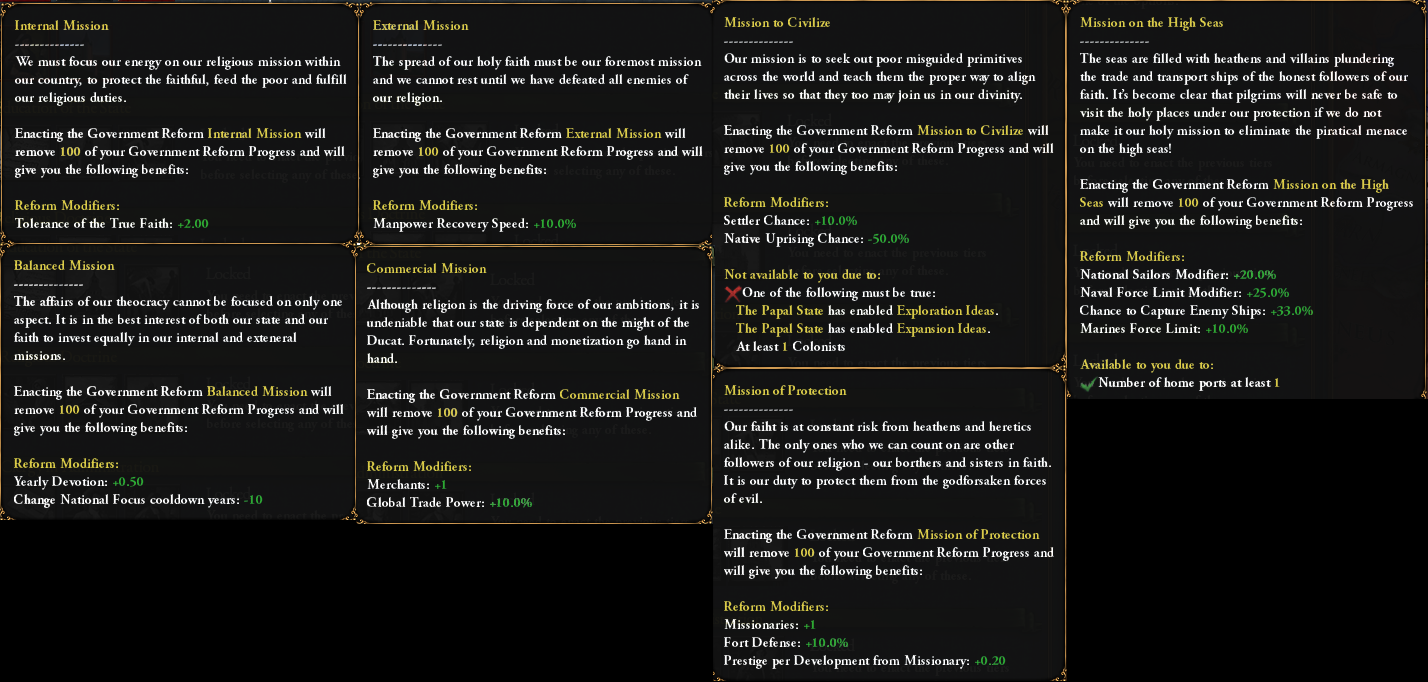
Note: Internal Mission, External Mission and Mission to Civilize are unchanged while Mission on the High Sea only requires one owned port instead of a capital port.
Tier 3:

Education of the Theocrat will immediately trigger an event for you when picked which allows you to choose what stat bonus your next heir shall receive:
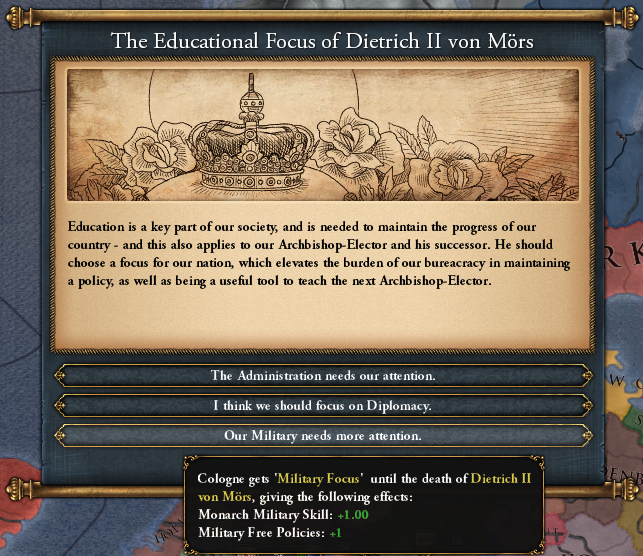
This event will always trigger when you get a new ruler and fires before you can select an heir so your heir will benefit from the bonus you choose.
While we are at it: the Kingdom of God reform for the Papal State is still in the 3rd tier, but has received some buffs to make it more on par with theocracies which have access to the Papal Influence and Education of the Theocrat:
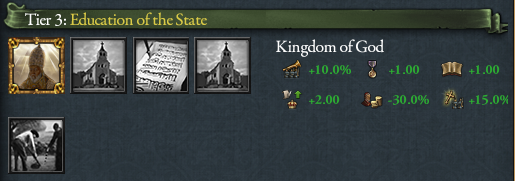
Tier 5:
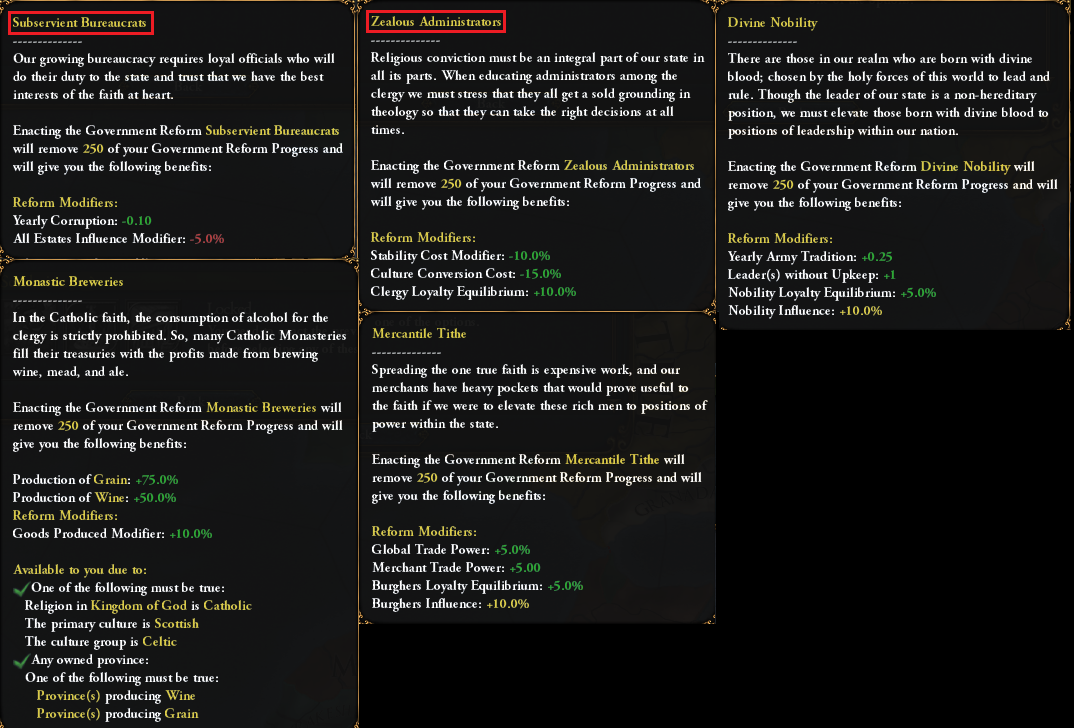
Note: Only Subservient Bureaucrats and Zealous Administrators received changes
Tier 6:
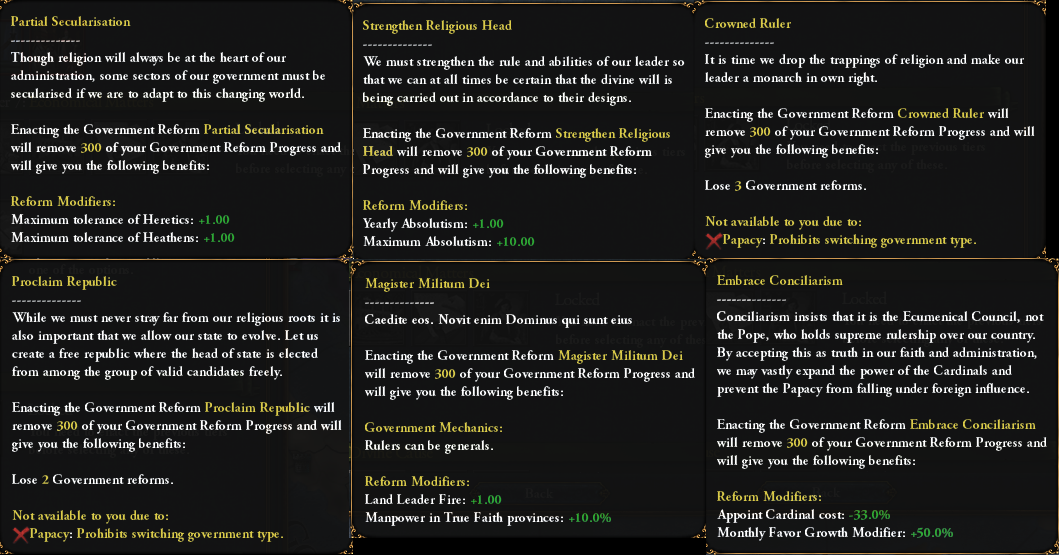
Note: Magister Militum Dei and Embrace Conciliarism are Papal State only
Tier 8:
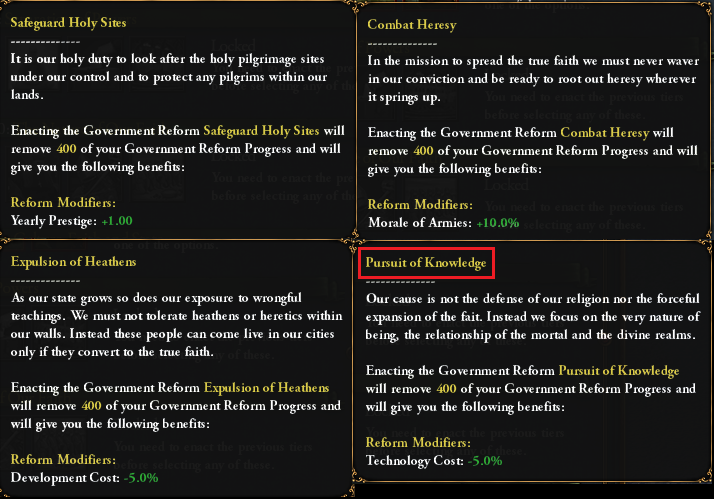
Note: only “Pursuit of Knowledge” is new here, the other reforms are former Tier 2 reforms which have been moved to Tier 8.
Tier 9:
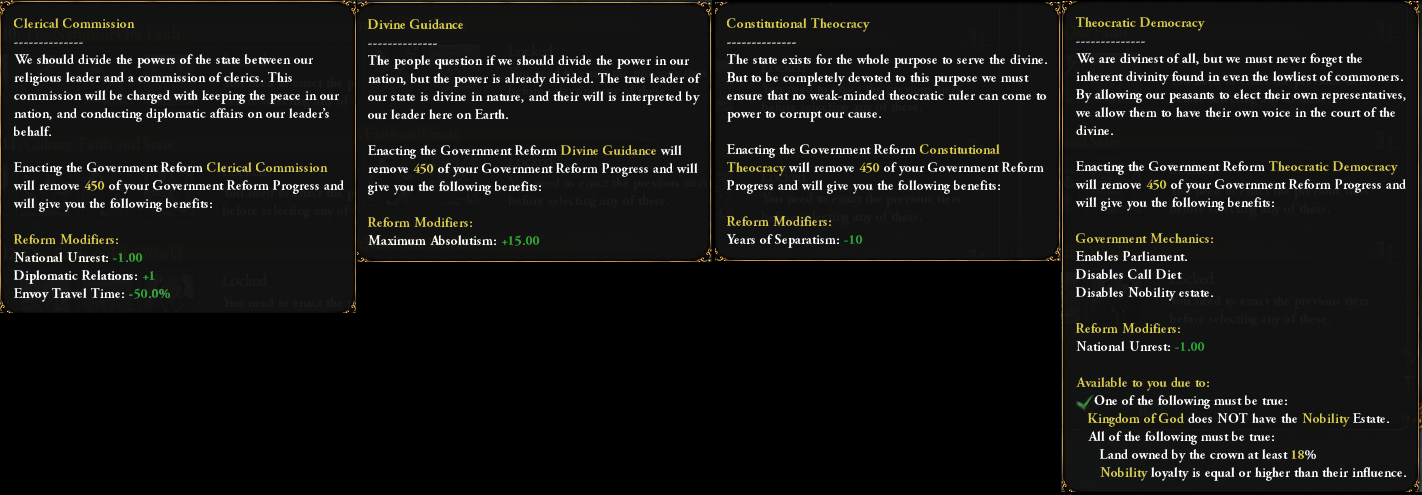
Governments which have the “Is a Monastic Order” government trait gain access to four additional reforms which are already part of the game right now.
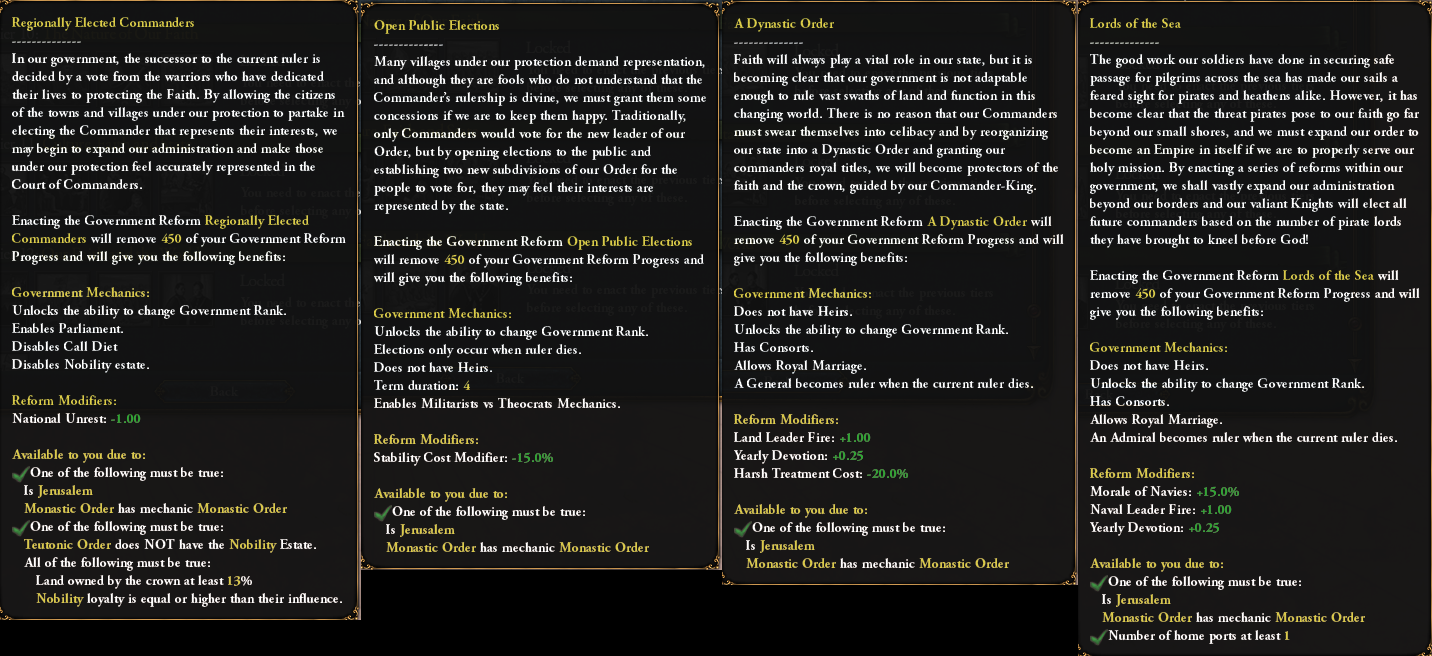
Tier 10:

Tier 11:

Tier 12:

That was it for this week! Next week Gnivom will talk about the AI changes and adjustments for 1.34. Until then, we wish you all a great week!
Please keep in mind that the numbers showcased here are NOT FINAL and are very much subject to change based on your feedback!
During the timeline of the game, Finland rested under the crown of Sweden and had some regional development in terms of its farming population. The Finnish cavalry known as the Hakkapeliita were famed for their ability to provide valuable skirmishers, reconnaissance, and devastating charges in campaigns against both Russia and Poland. However, as with the Teutonic Order, Gotland and Livonia, this set of missions revolves around a scenario in which Finland fought (and won) their independence, making them a valid contender for the Scandinavian crown and expanding their domain across several shores and regions.
Despite Finland’s status as a releasable tag, we felt it was appropriate to satisfy the demands for a proper and interesting Finnish mission tree:

Finland will receive 15 new missions, each one carefully crafted to offer new and unique rewards, leading into the formation of Scandinavia and the domination of the Baltic shores. Please note that the art of the icons is placeholder and is not final!
Raise Our Army will give a short yet tactically crucial bonus to your forces, allowing you the ability to outmaneuver the numerically superior Swedes and their wartime allies:

What’s more, you will gain access to a unique version of the Hakkapeliitta Cavalry which costs no Army Professionalism to recruit:

The mission Defend Independence will require you to make allies, raise your stability and bring balance to your financial affairs by having no loans. As a reward, you will be able to write your own story, your saga, which will grant you a scaling reward based on your ruler’s achievements during his lifetime at the time of completing the mission. The factors for the reward are:
- Stability (Administrative Accomplishment)
- Number of Allies (Diplomatic Accomplishment)
- The amount of development you’ve grown by (Military Accomplishment)
Each of these will grant our ruler between 1 and 3 monarch stats (or monarch points if already at 6), along with this powerful ruler-tied modifier as well as permanent claims on the Baltic Trade Node (that’s a surprise tool that we will use later):

Completing the aforementioned mission will open the way for 3 new missions. First off, conquering Stockholm from your former overlords will change the name of Stockholm (if your culture is Finnish), grant it some development and give you access to a discounted advisor:

Seize the Means will task you with seizing the means of production behind Europe’s prime source of copper and will grant you a good bit of ducats from your copper and iron production, the ‘Industrious’ trait (if your ruler has enough available slots) as well as the following reward:

Expanding St. Olav’s Tower will yield quite an interesting and powerful local reward:

Keep in mind that if for whatever reason an enemy force (another nation or rebels) takes control of the province, you will lose the above modifier!
Declaring a Baltic Empire will give you a new name and if you have Mandate of Heaven the following reward along with granting you the rank of Empire:

On the right side of the tree you will see missions relating to the development of the countryside and the founding of new cities:

Founding Turku, an important city for Finland guarding the way to and from Stockholm:

Founding Helsinki will grant a level 2 Center of Trade as well as a few buildings for your newly developed province. Note that if you complete the mission with a Shipyard and a Dockyard, you will instead gain their upgraded versions:

Finetuning the Finances of the realm will require you to increase your income, employ a level 2 Administrative Advisor, run a positive monthly balance and have no loans:

The Turku Academy, your domain’s first university and institution of higher education, will yield the Scholar trait for your ruler, Innovativeness and more:

The culmination of the Finnish tree ends with unleashing the White Death upon Europe and a powerful permanent country modifier to go with it:

Of course, you are welcome to form Scandinavia and gain the Scandinavian mission tree, however Finland will not have a unique Scandinavian tree, as its senior siblings in the region do.
Now, 1.34 will also hone and improve as well as add new content for the base game. One such addition is an expanded mission tree for Lübeck. Before we delve into it, I would like to repeat that the Emperor DLC Lübeck tree will be available for Hamburg and Bremen (if you have the Emperor DLC) with a good number of tweaks and new rewards as well as localisation.
Moreover, the Hanseatic League will now be a formable nation with its own set of national ideas (essentially Lübeck with a different name and better ideas). Since that’s out of the way, let’s go, Lübeck!
From a historical perspective, Lübeck (and the Hansa as a whole) has seen better days. The 15th century brought a lot of decline for their merchants, with business shifting westwards towards the English channel. You are tasked with reviving the mercantilist grip of the League, expanding it and creating a trade Empire the likes of which the world has never seen. To assist you in your endeavors, the various missions of your tree also benefit the members of your trade league, giving you a reason to care for them and if possible, expand their ranks:

The top half of the tree will focus on expanding the League outwards. However, many of these missions will not require direct conquest. You will be able to complete many of these via diplomacy as well! The goal is to give the player the freedom to choose how they want to approach the tree.
The conquest branch will start with requiring you to raise an army which will seamlessly grant claims for and flow into missions about Visby, Mecklenburg, Riga and more.

Gateway to the East will require you to have Riga be part of the trade league and have high opinion of you or control the similarly named province as well as having a certain amount of troops.

Restore Visby will lead you to restoring a historical stronghold for the League:


Gaining ports in Danzig, cooperating with the Traders and developing the city of Danzig will grant the following benefits:

The conquest path ends with the appointment of an official War Minister. Every different military advisor will grant a different, dynamic reward:

The second part of the tree is wholly dedicated to the internal affairs of both Lübeck itself and the Hansa as a general league of trade nations. Initially, you will have to expand the Old City of Lübeck and its market, yielding powerful Trade Efficiency and Institution Spread modifiers for a few years followed by the Peace of Vordingborg, imitating the styles of Italian Bookkeeping and Financing the Guilds of Lübeck:



Of course, no Hansa playthrough would be complete without a mission to address and expand the Hansehalle, the legendary administrative center and the heart of the entire Hansa:


Funding the shipbuilders’ Guild will grant a flavor event about the legendary Hanseatic Cog which will grant Light Ship Cost as well as Sailors and increased Naval Leader Maneuver. Elsewhere, Organize Hanseatic Diets will require you to bring peace within the Trade League and develop Diplomatic channels between yourself and potential members or subjects:

Impose Lübeck Law will grant another dynamic reward, based on which faction is in power at the time of completion:

Presenting a grown and powerful economy as well as increasing your total development in the Tend to the Towns mission will yield a positive bonus for you and your Trade League members:

Developing the Mineral Trade in Europe has quite a spicy reward that will, just like its predecessors, change depending on the circumstances of its completion, here’s the direct and less likely outcome of importing large amounts of precious metals in your ports:

To wrap up the flavor part of the tree, declaring the Queen of the Hansa mission will turn all members of your trade League into subjects and grant a diplomatic relations modifier to cover part of the upkeep costs for 30 years. Furthermore, you will gain monarch power scaled to the Development of your capital, 10 points per development to be precise:

The event Crowning of a New Queen grants 2 different bonuses. Either you change your country’s name to The Hanseatic League and gain a new idea set or keep your current ideas while your ruler gains +1 adm/dip/mil and you gain 3 Mercantilism:

The new Hanseatic League national ideas:
FU2_ideas = {
start = {
trade_efficiency = 0.2
merchants = 1
}
bonus = {
trade_steering = 0.2
}
trigger = {
tag = HSA
has_country_flag = hsa_proclaimed_queen_of_the_hansa_flag
}
free = yes
FU2_foreign_kontors = {
global_trade_power = 0.15
}
FU2_the_handelsmarine = {
global_ship_trade_power = 0.25
global_ship_cost = -0.05
}
FU2_reform_queens_army = {
discipline = 0.05
}
FU2_adler_von_lubeck_legacy = {
heavy_ship_power = 0.1
}
FU2_merchants_with_state = {
global_trade_goods_size_modifier = 0.1
development_cost = -0.05
}
FU2_spread_the_northern_style = {
idea_cost = -0.1
}
regularised_contribution = {
global_prov_trade_power_modifier = 0.20
}
}
Earlier in this Developer Diary, I mentioned that the Emperor DLC Lübeck tree will be playable for Hamburg and Bremen, since Lübeck got a shiny new tree. To add to that, the Hanseatic League, which is the reward for the final flavor mission for Lübeck, is now available as a formable nation and will come outfitted with the Lübeck tree and the evolved idea set I showcased just above.
In the interest of time, this Developer Diary cannot be too large. Thus, we have intentionally omitted showcasing the rest of the flavor coming for Lübeck. This Diary barely covers 40% of the new content! As mentioned above, this Lübeck mission tree will be part of the **base game** and will come fitted with 36 new missions and 20 new events!
Lastly, I would like to bring another small change to your attention: the UI for Estates has been reworked and I would like to give special thanks to Artemis, whose UI work served as the basis for our own:

Now passing the mic over to my dear friend and colleague Ogele to talk about new shiny Theocratic Reforms!
Hello there!
In the last development diaries we have shown new government reforms for monarchies, republics and even pirate republics which will all be part of the 1.34 update. Today I want to finish this topic for good as I will present to you what we have in store for theocracies!

Theocracies were the last on our list for new government reforms and had already a bunch of interesting and fun choices to pick from. As such, they don’t receive as many new reforms as for example monarchies and republics do. With that being said, we still think they deserve some love nonetheless and because of that we have decided to add 2 new theocracy specific tiers.
Tier 2:

Note: Internal Mission, External Mission and Mission to Civilize are unchanged while Mission on the High Sea only requires one owned port instead of a capital port.
Tier 3:

Education of the Theocrat will immediately trigger an event for you when picked which allows you to choose what stat bonus your next heir shall receive:

This event will always trigger when you get a new ruler and fires before you can select an heir so your heir will benefit from the bonus you choose.
While we are at it: the Kingdom of God reform for the Papal State is still in the 3rd tier, but has received some buffs to make it more on par with theocracies which have access to the Papal Influence and Education of the Theocrat:

Tier 5:

Note: Only Subservient Bureaucrats and Zealous Administrators received changes
Tier 6:

Note: Magister Militum Dei and Embrace Conciliarism are Papal State only
Tier 8:

Note: only “Pursuit of Knowledge” is new here, the other reforms are former Tier 2 reforms which have been moved to Tier 8.
Tier 9:

Governments which have the “Is a Monastic Order” government trait gain access to four additional reforms which are already part of the game right now.

Tier 10:

Tier 11:

Tier 12:

That was it for this week! Next week Gnivom will talk about the AI changes and adjustments for 1.34. Until then, we wish you all a great week!




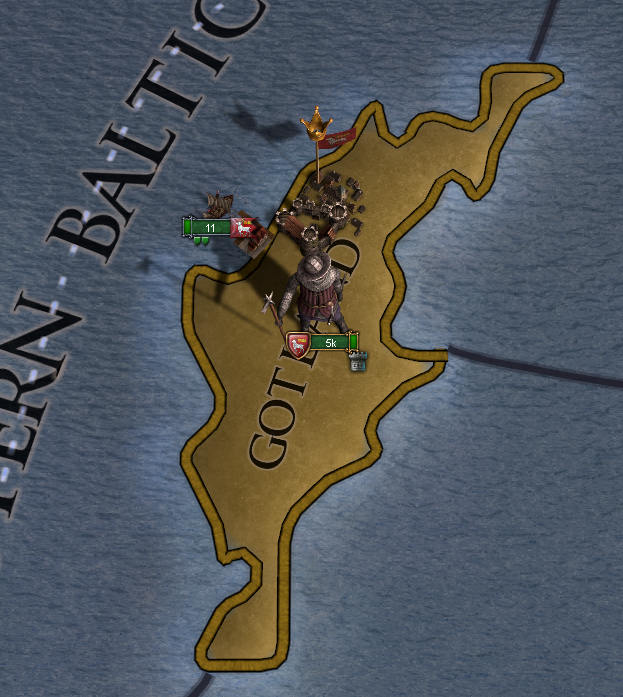
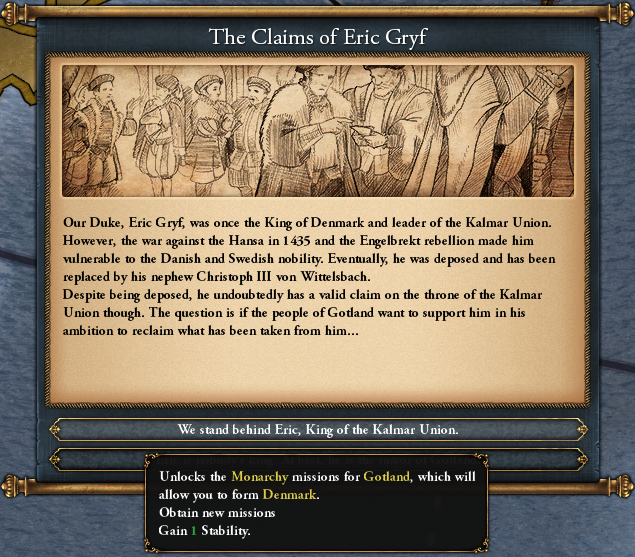
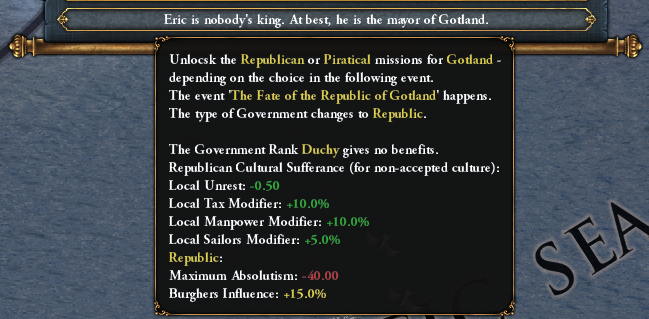
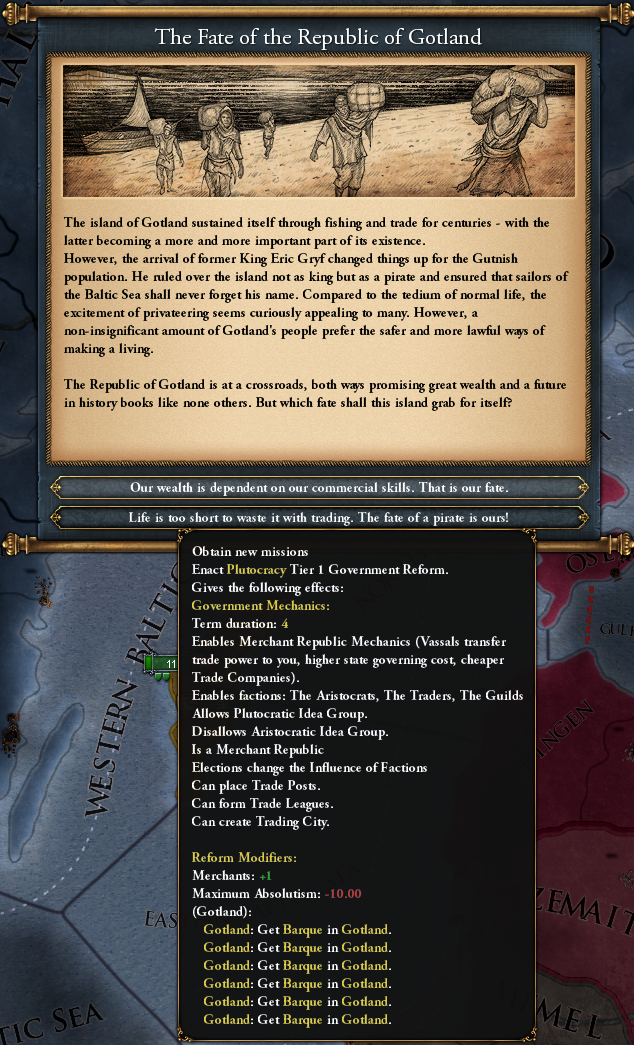
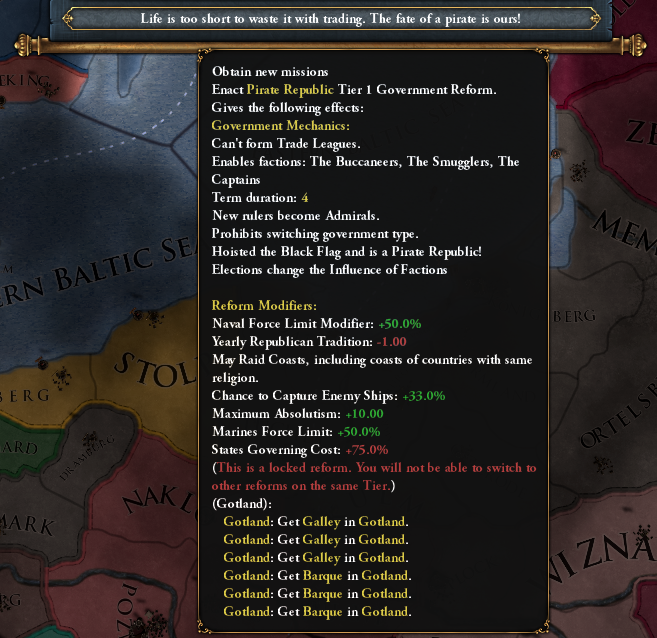
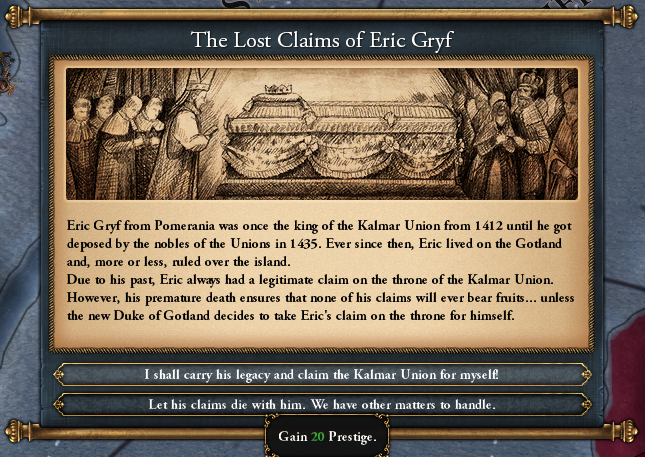

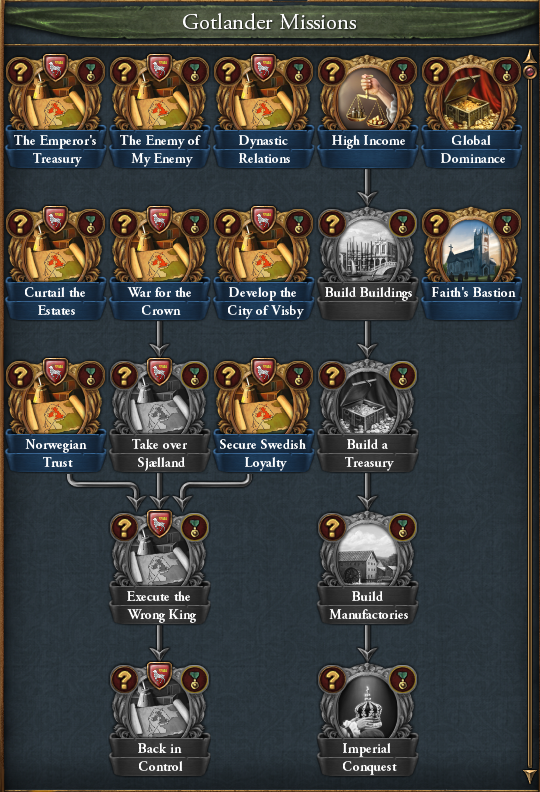

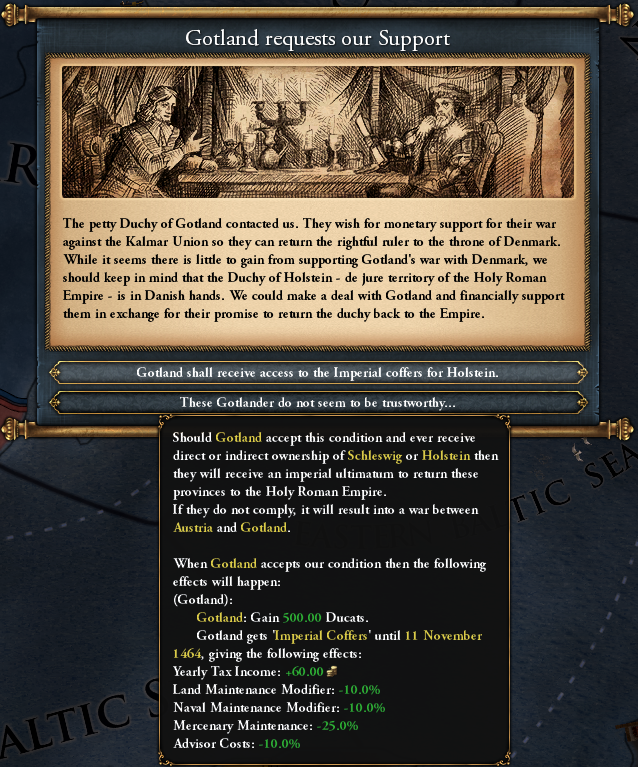
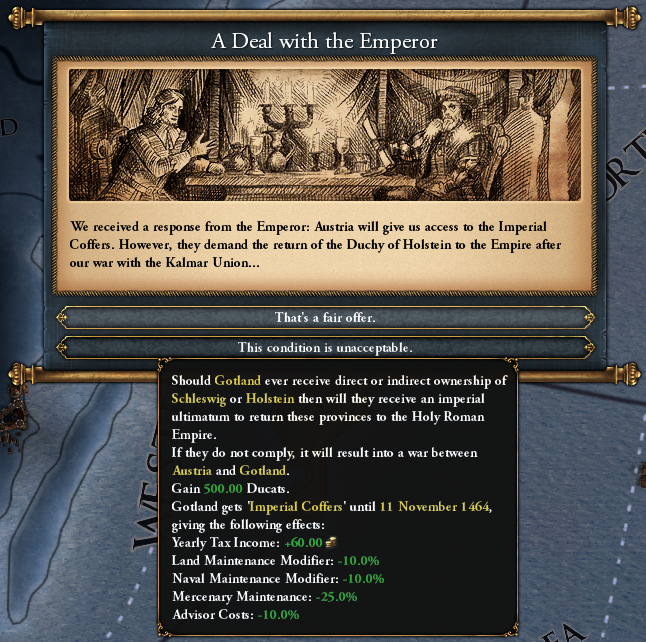
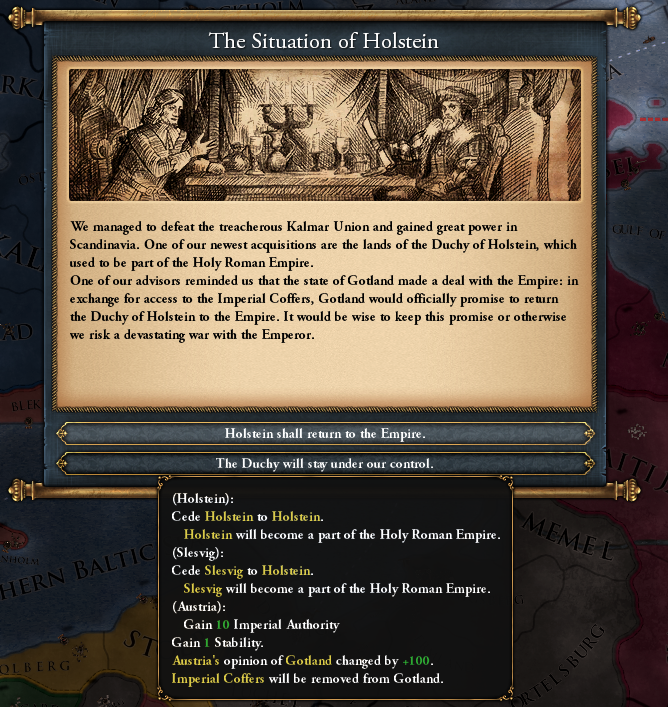

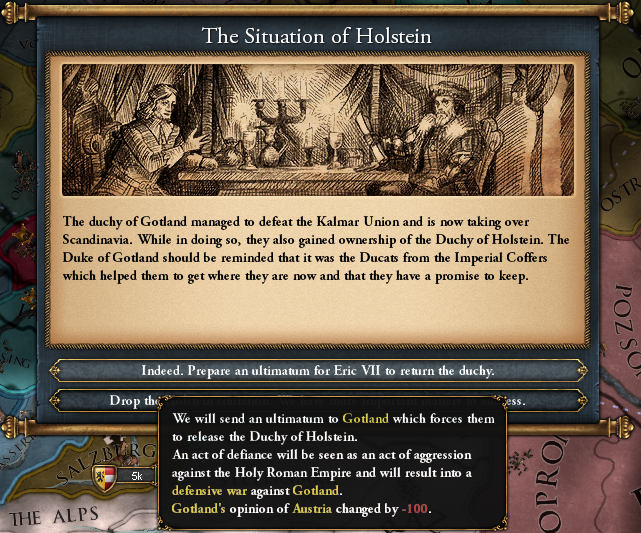
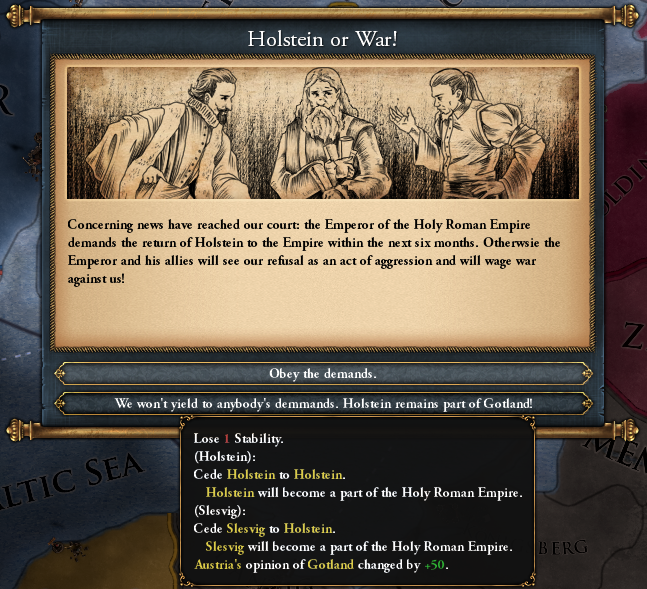

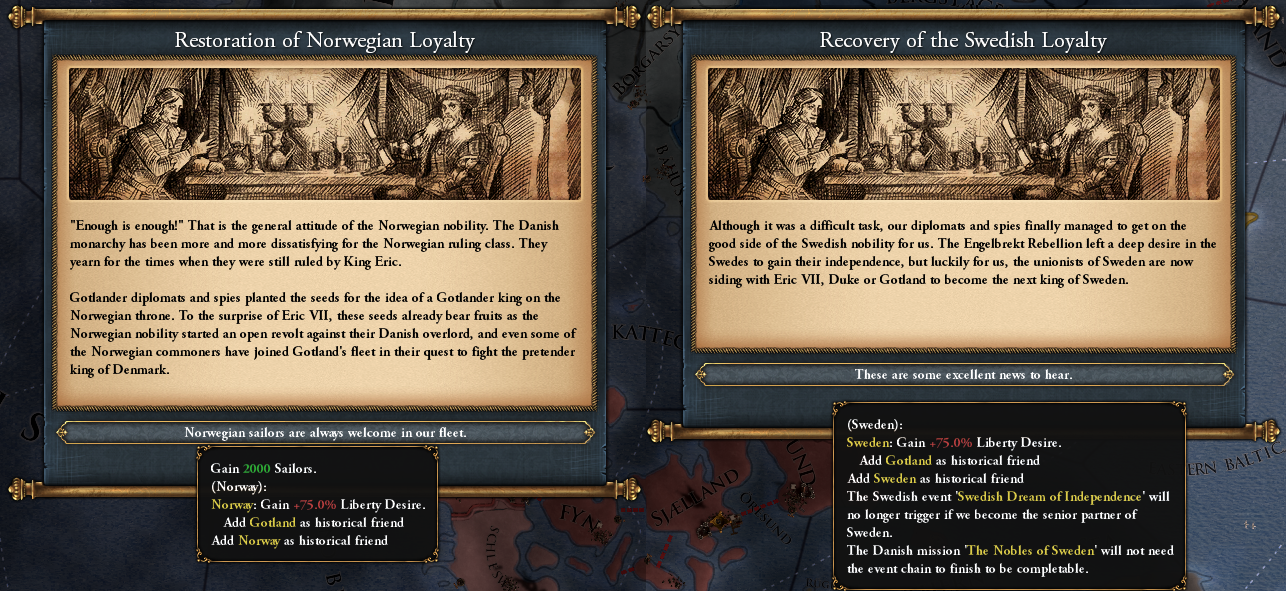
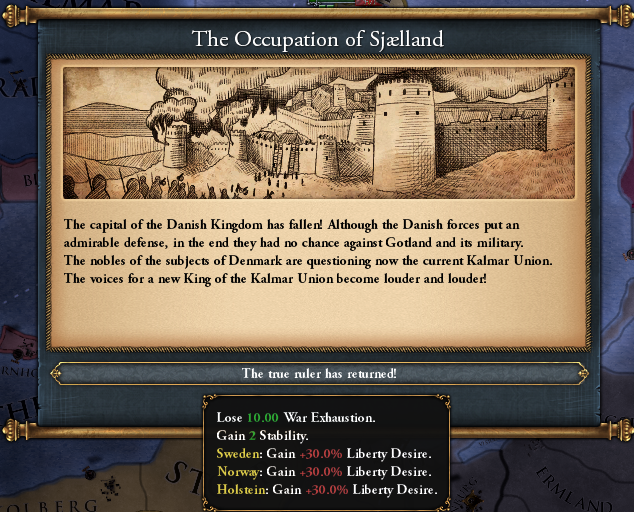
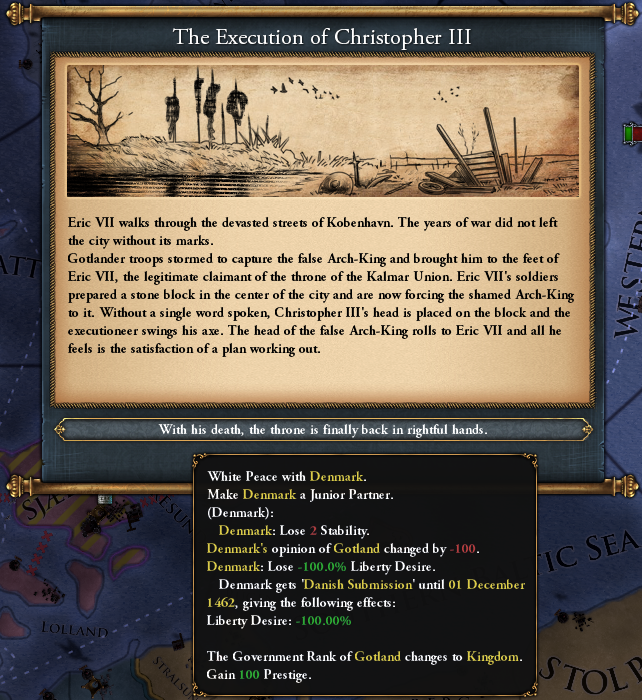
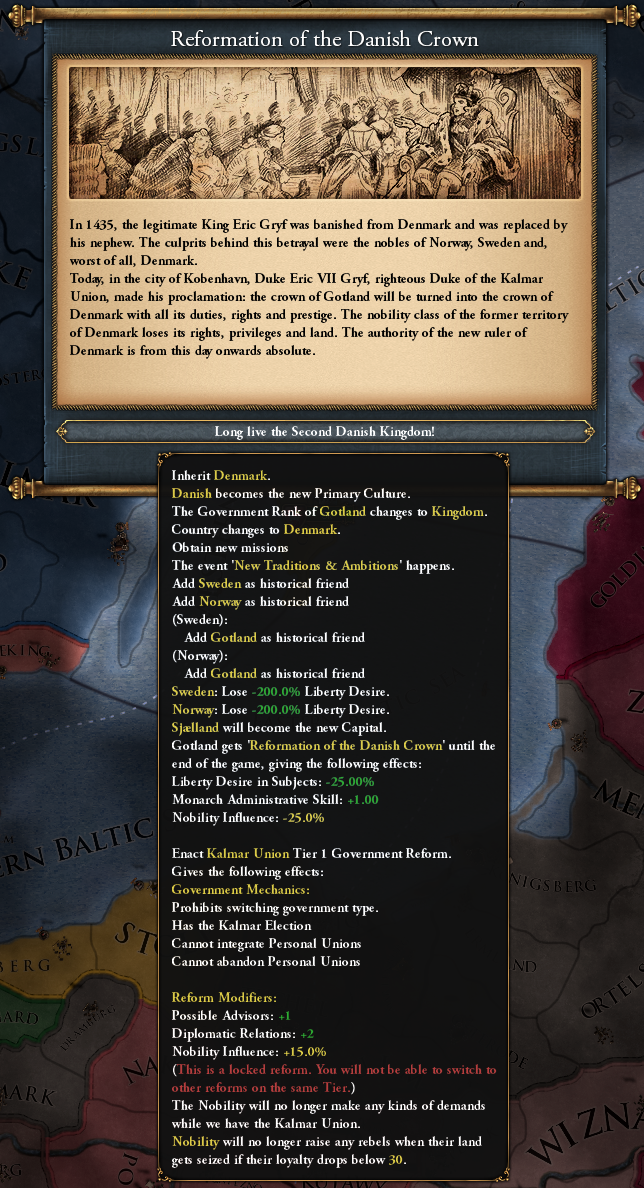
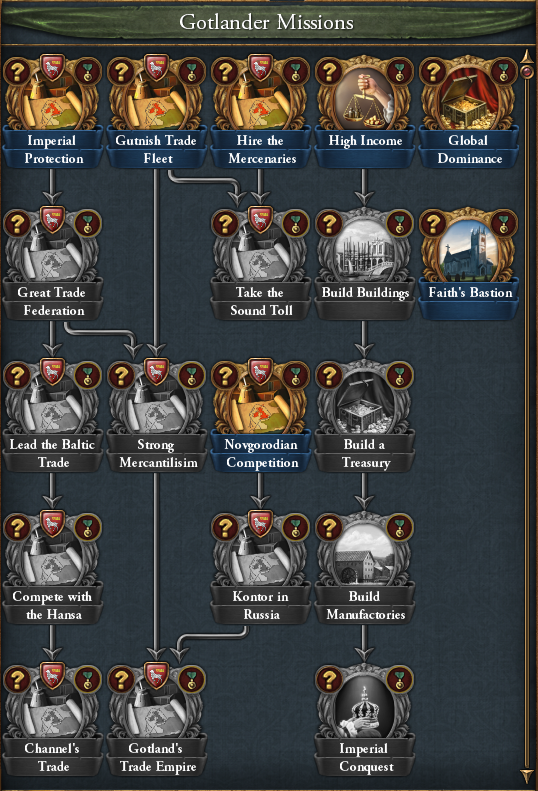
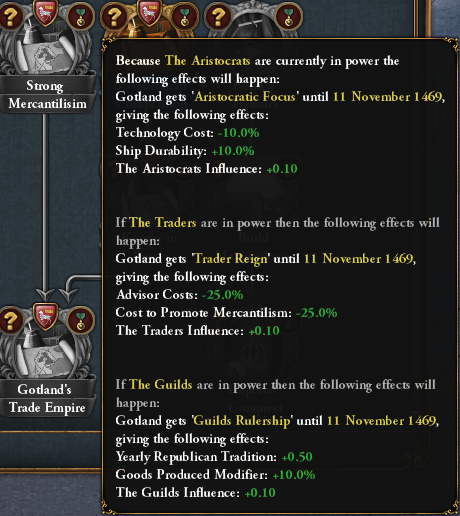
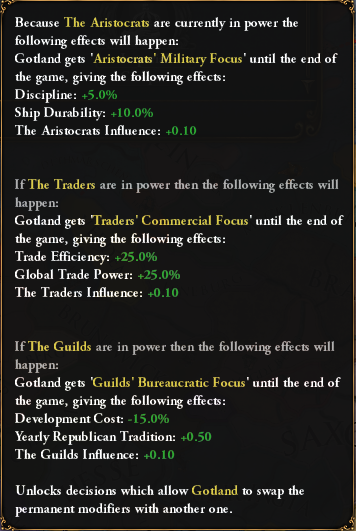

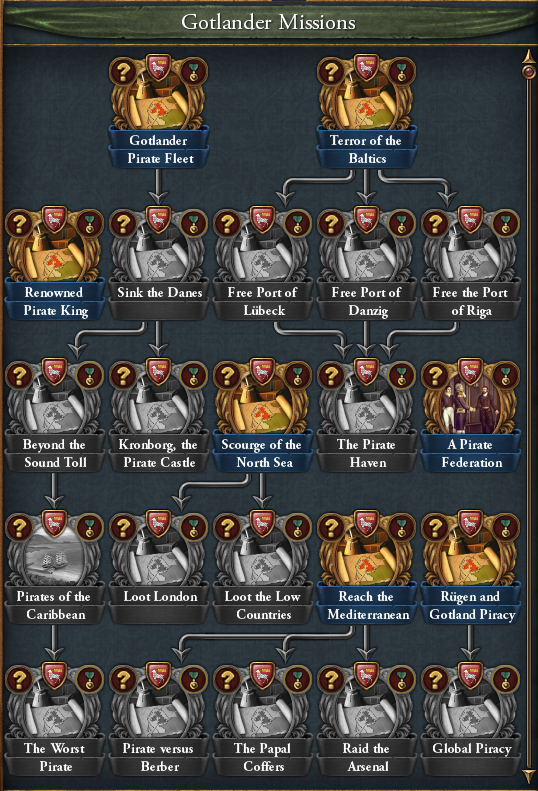
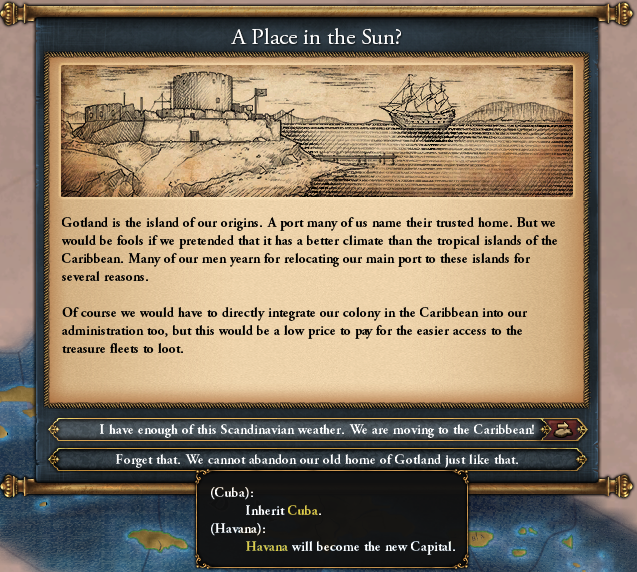
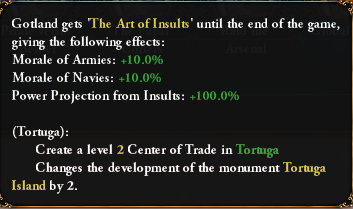
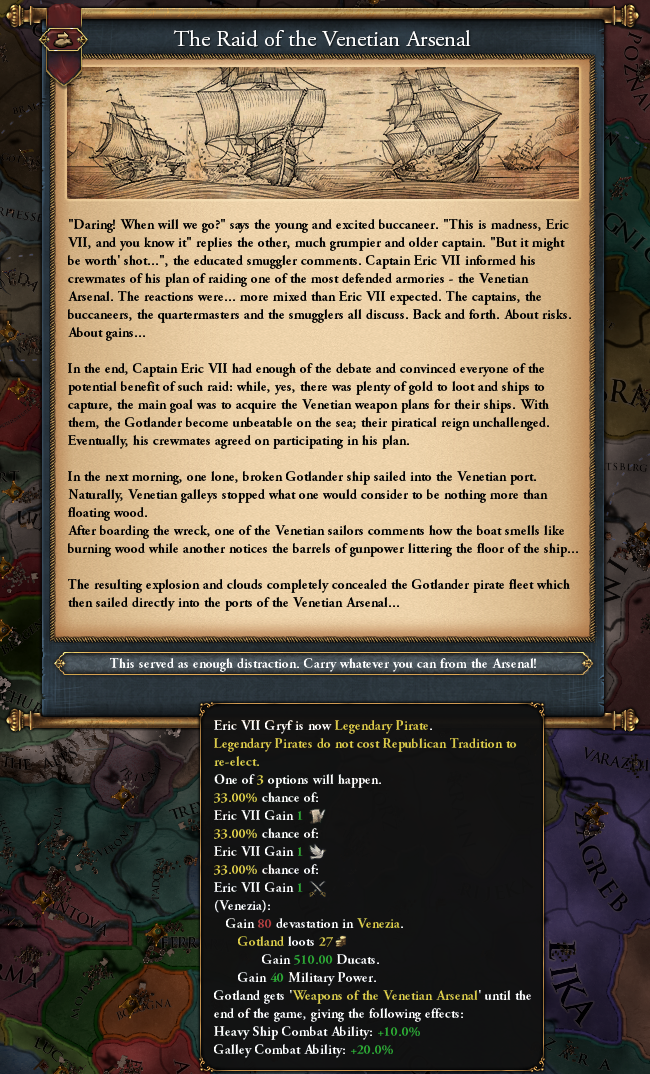
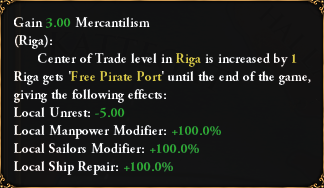
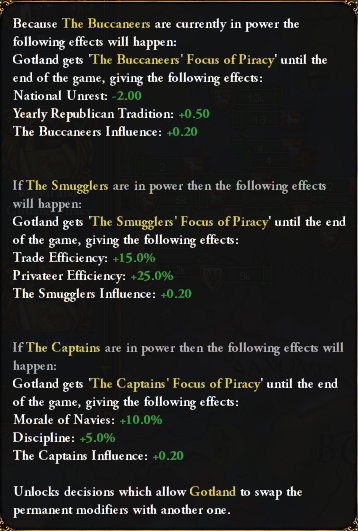

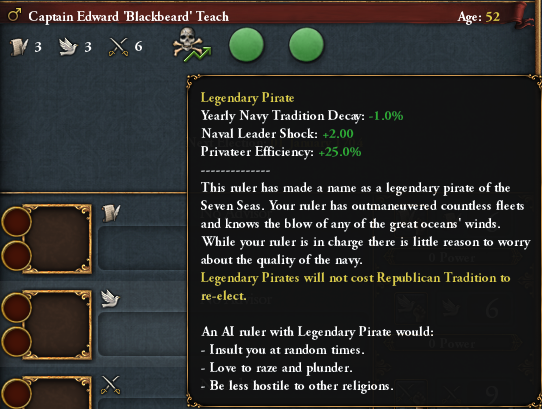


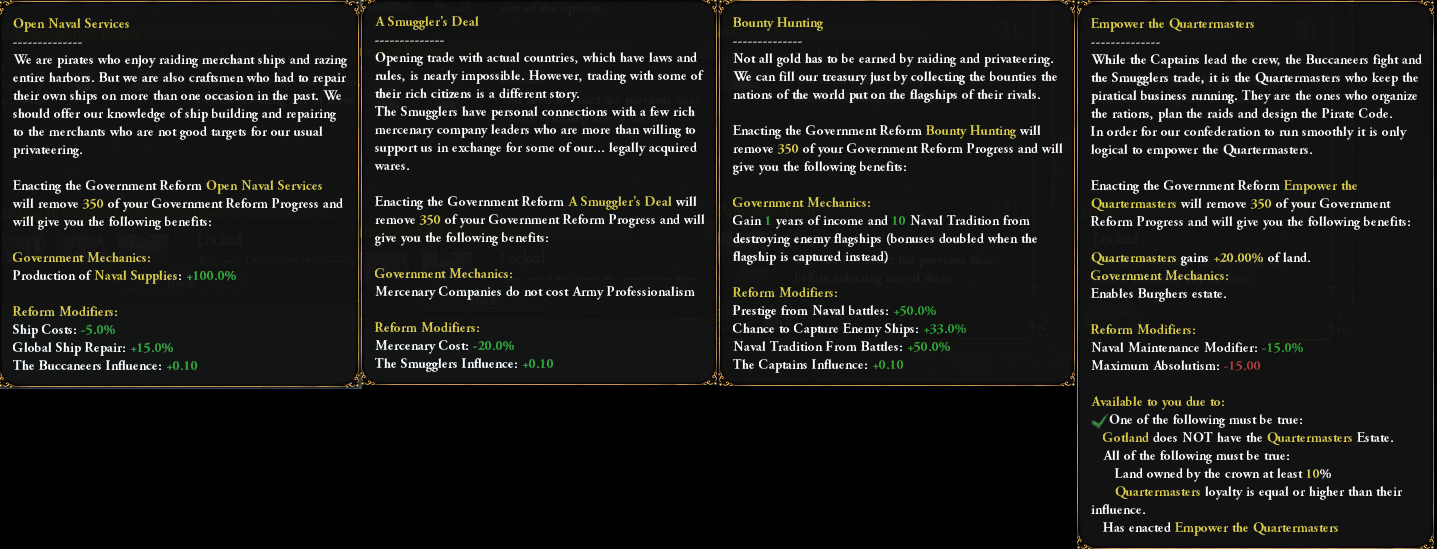


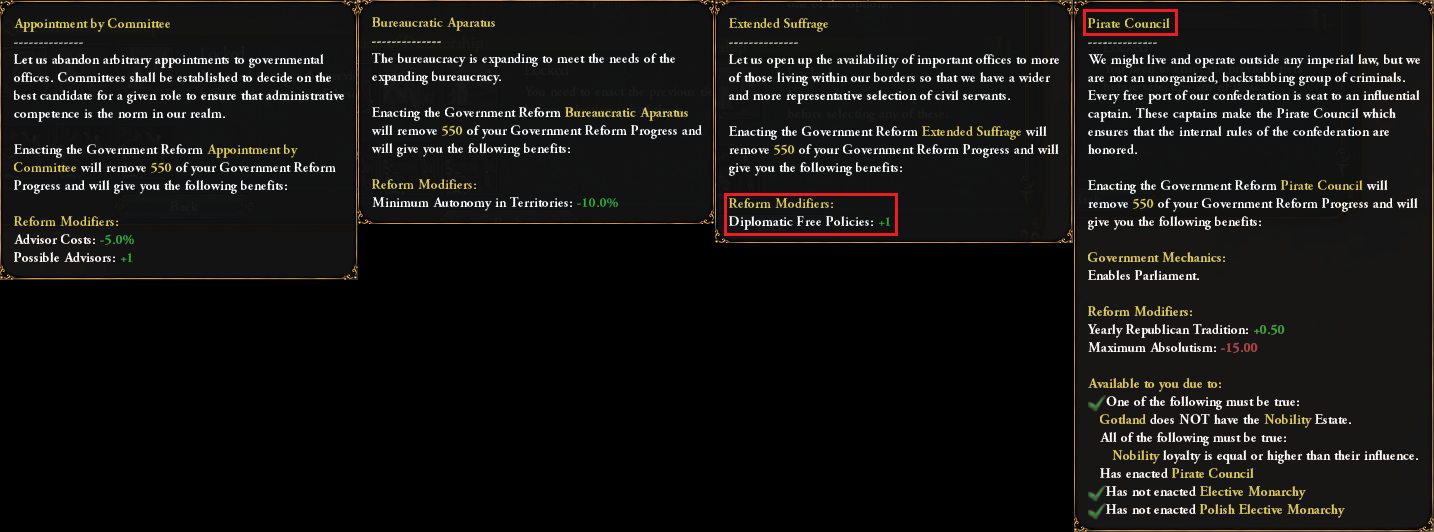

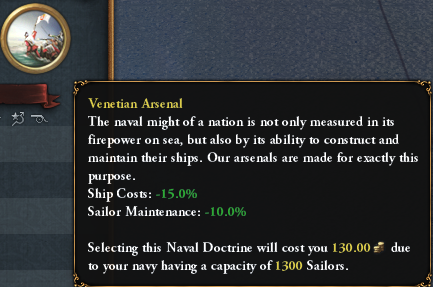
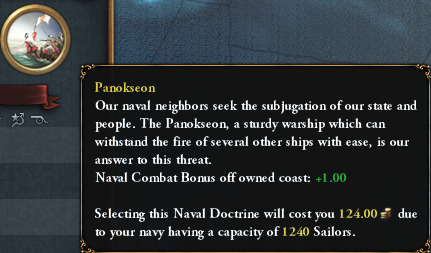


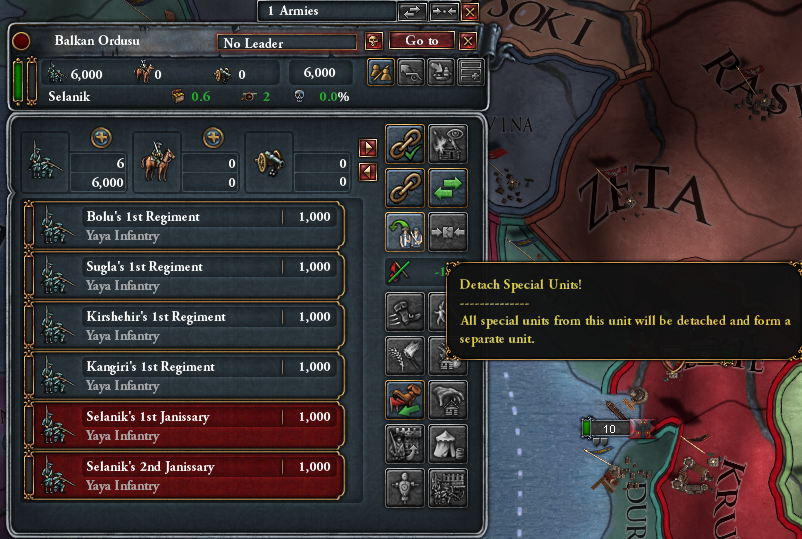

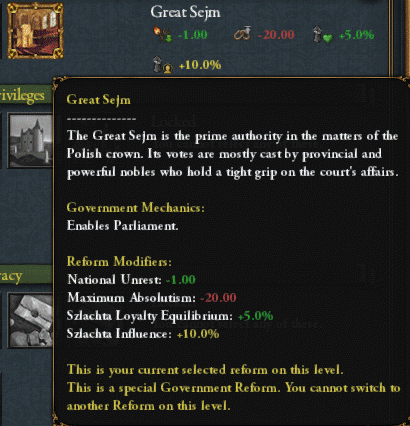
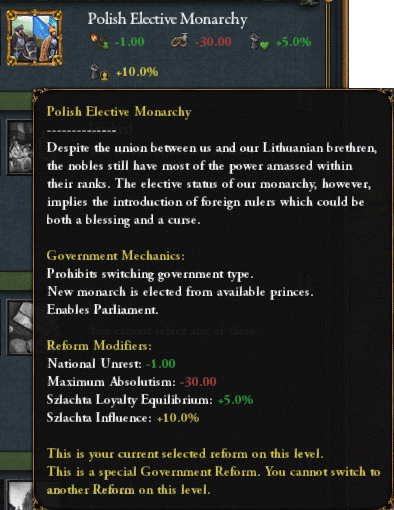
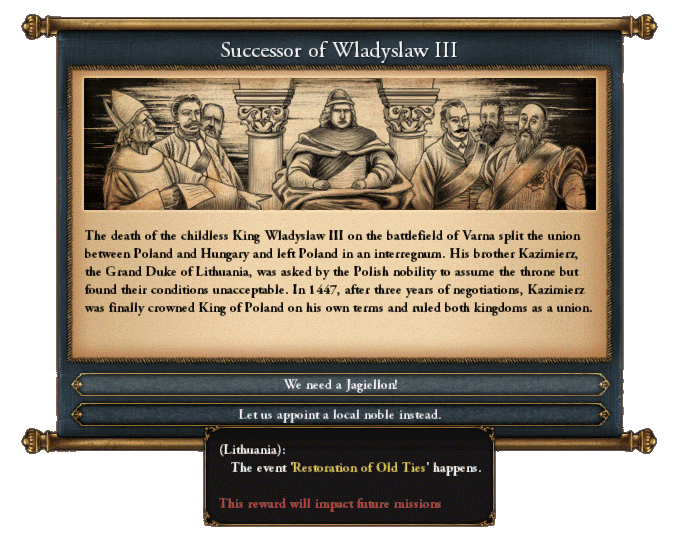
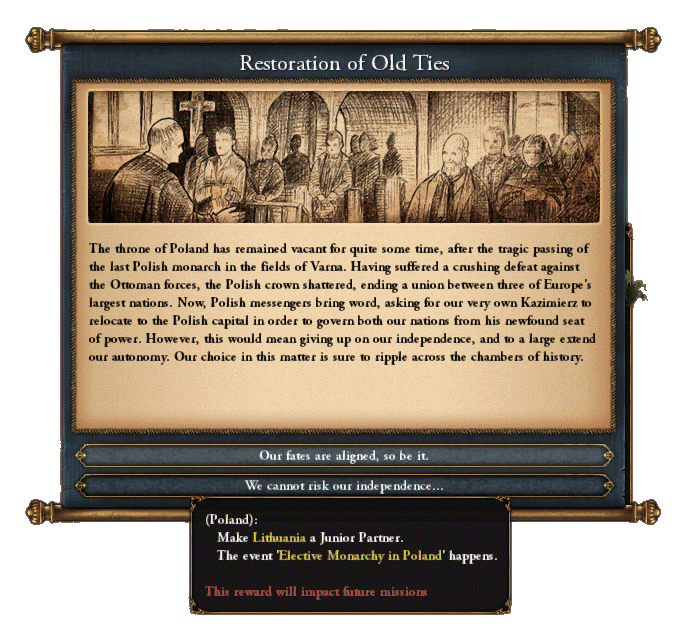

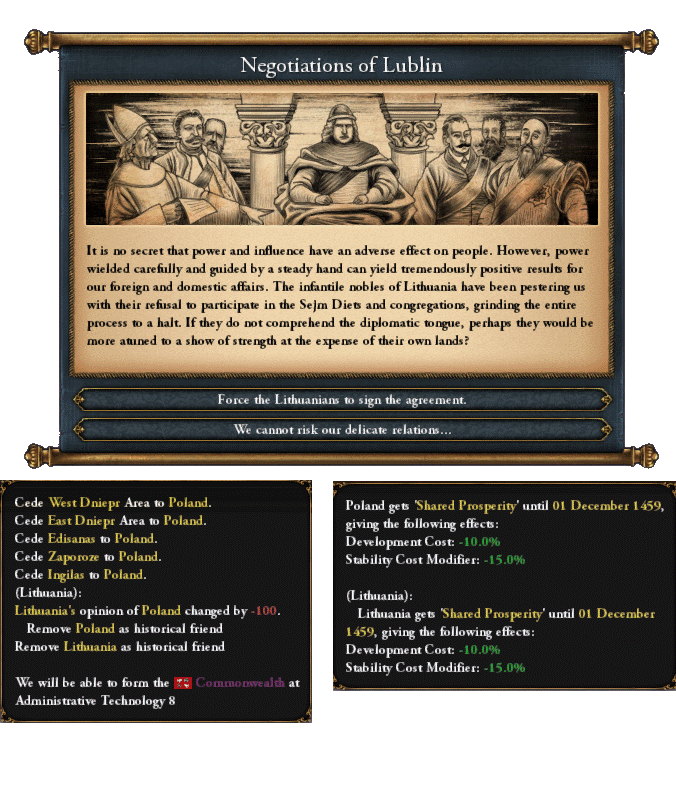

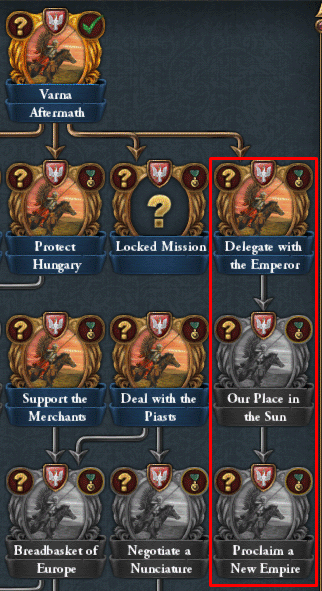
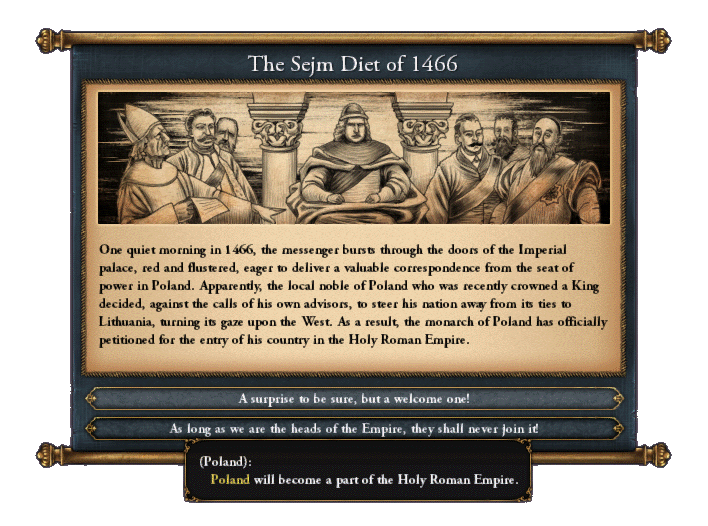
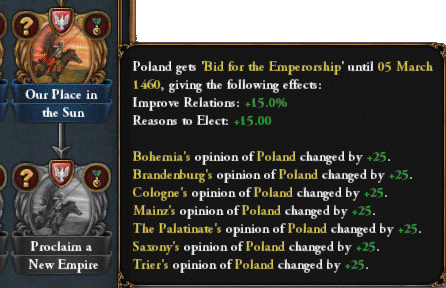
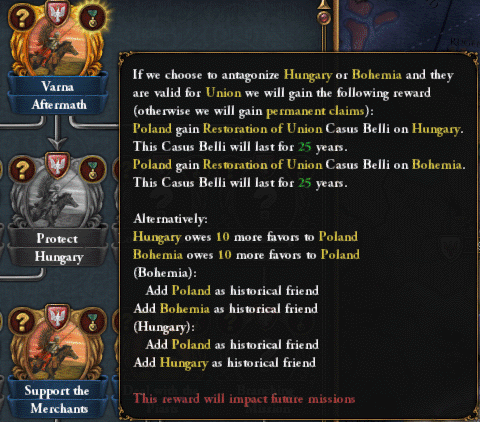
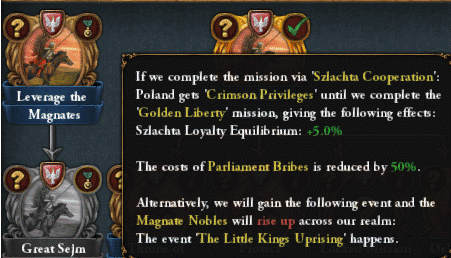
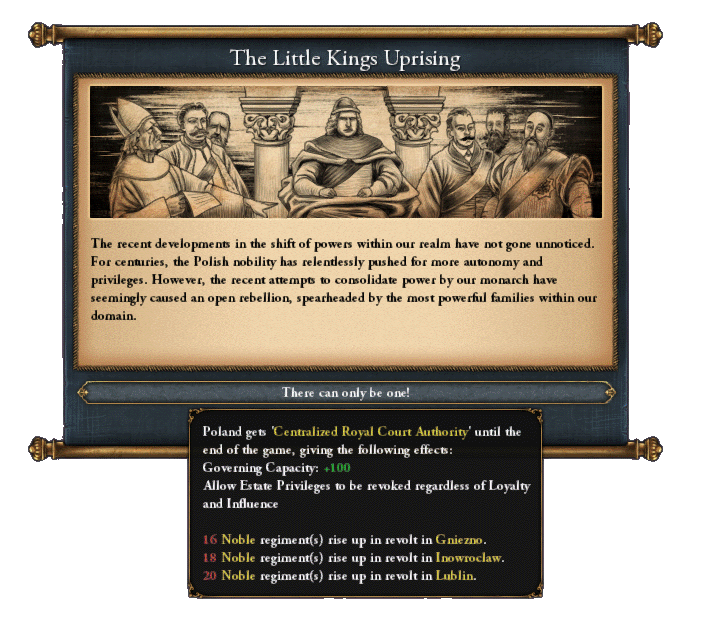

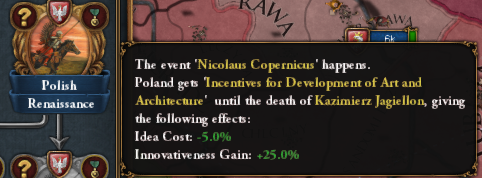
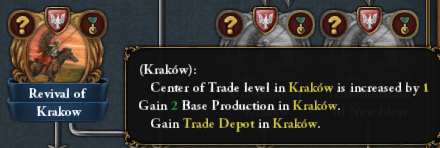

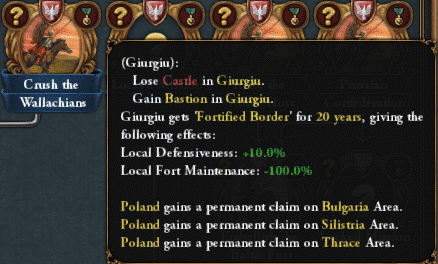

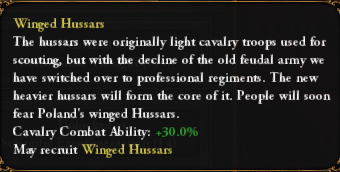
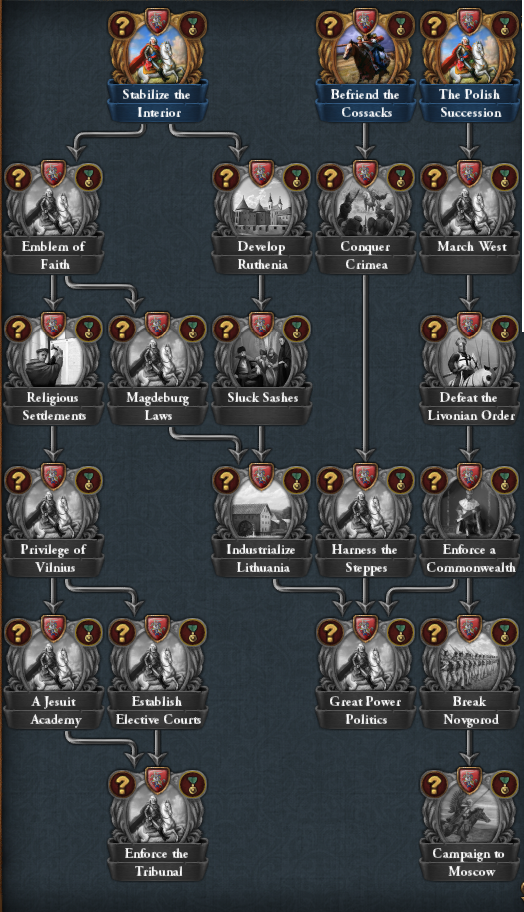
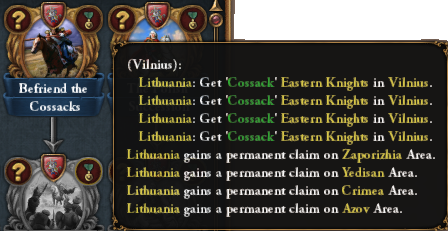
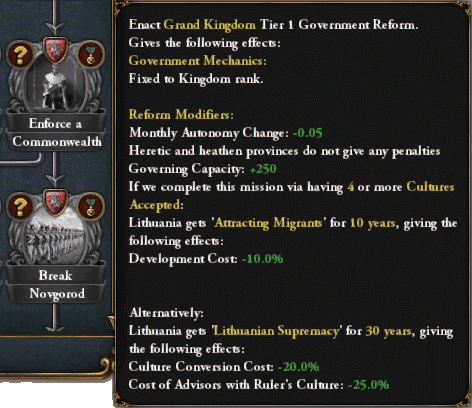
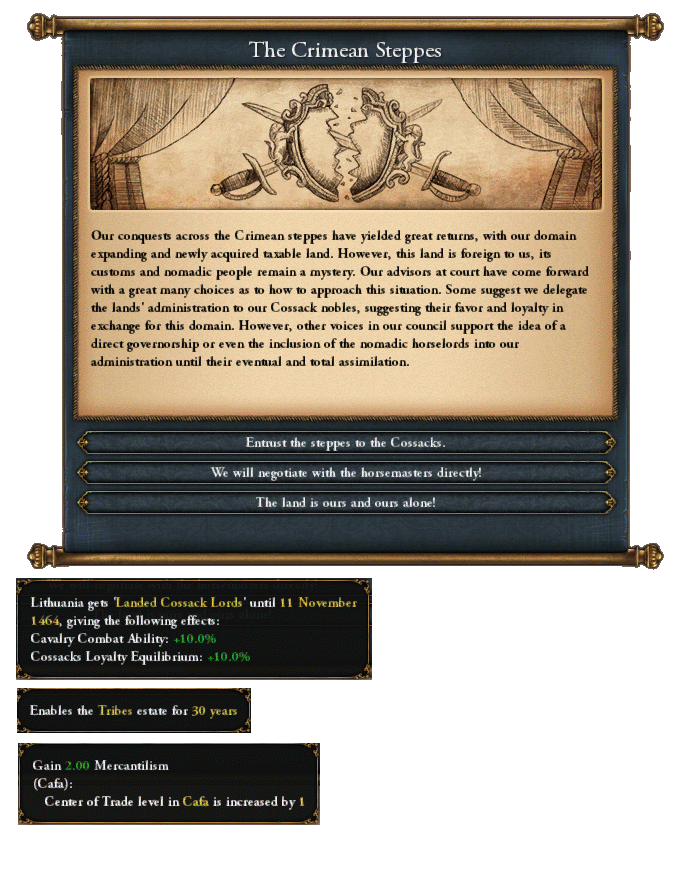
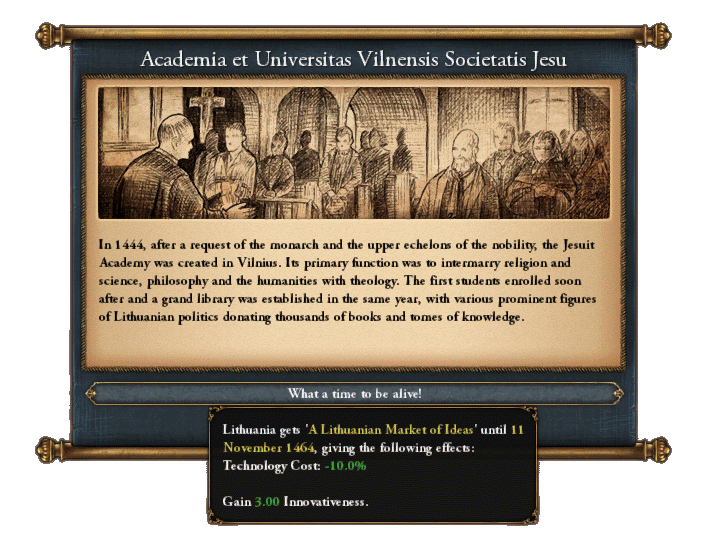
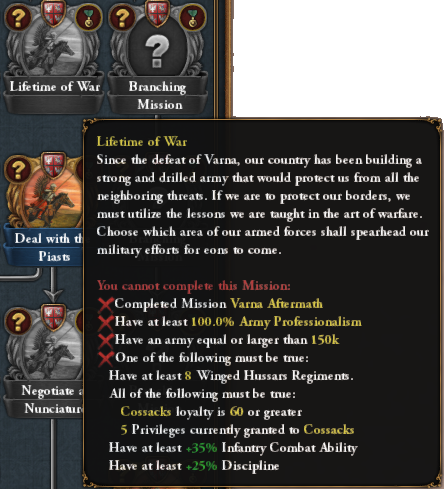
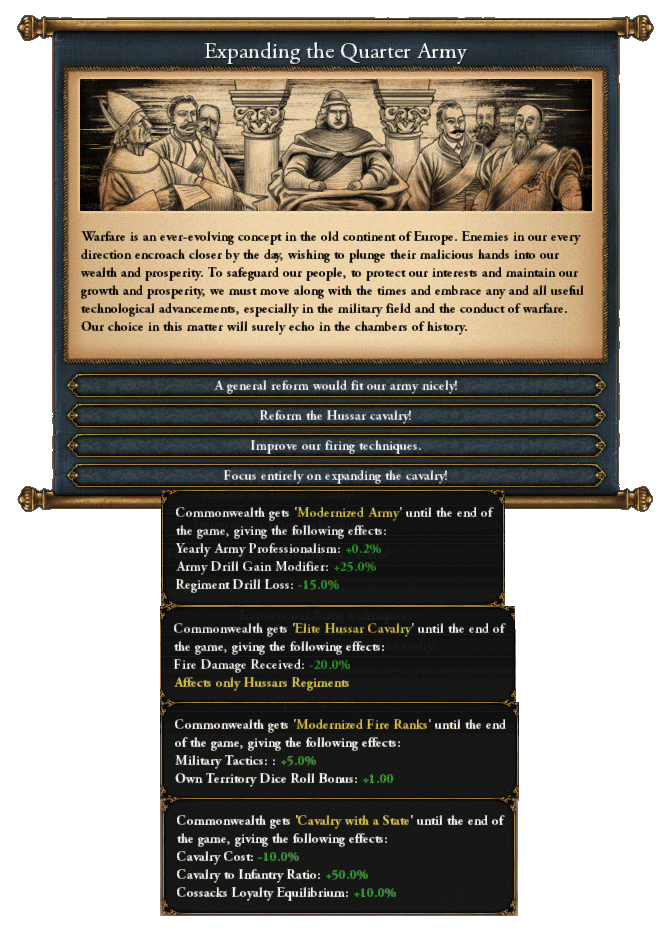
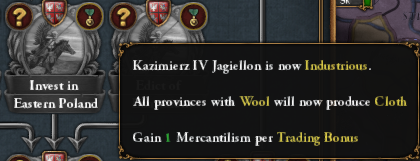
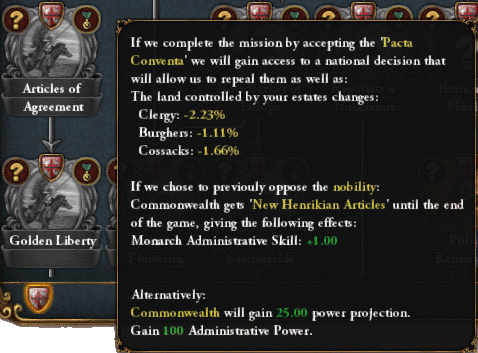
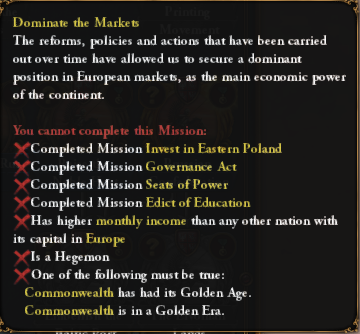
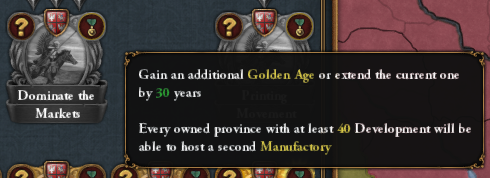
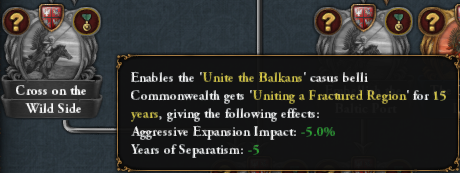
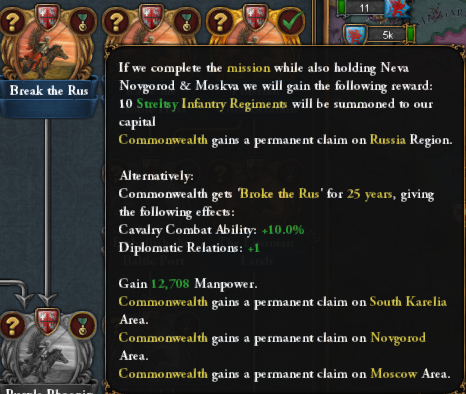
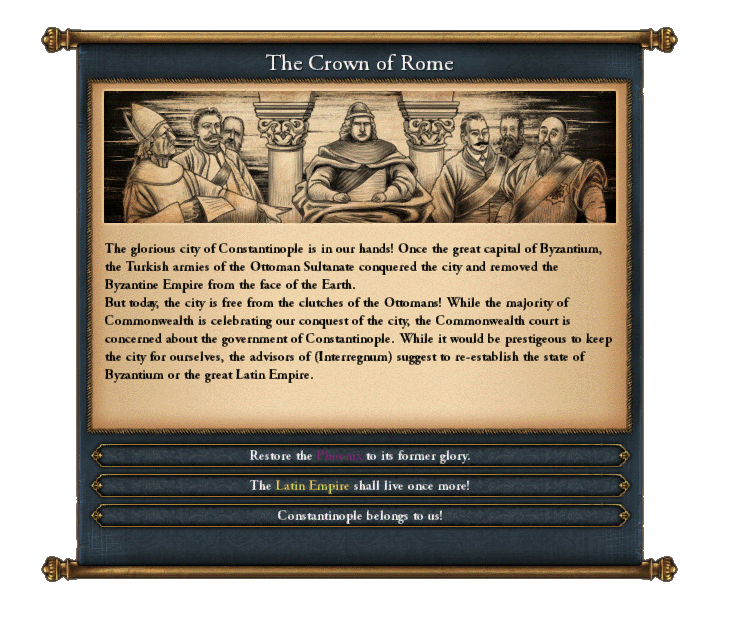
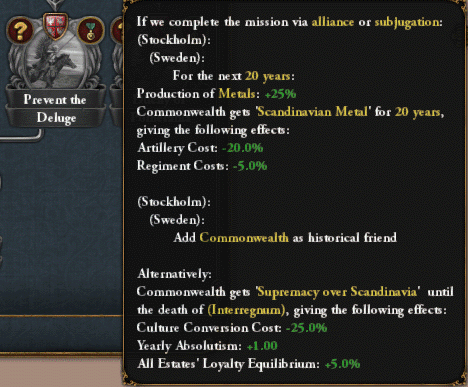
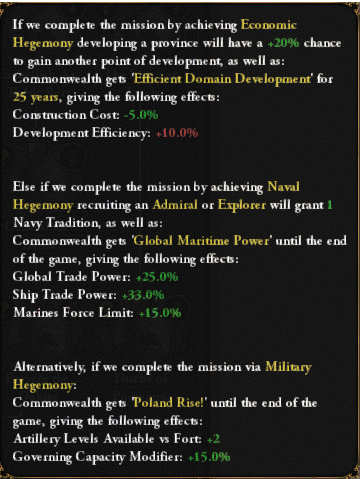

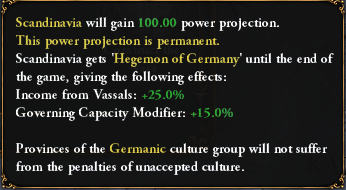
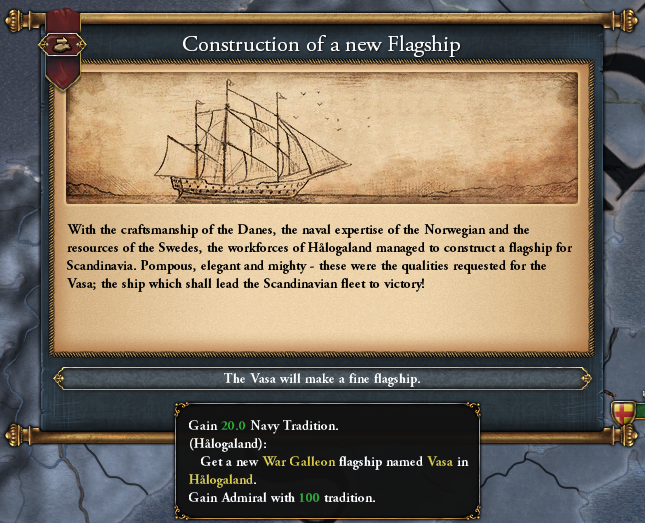
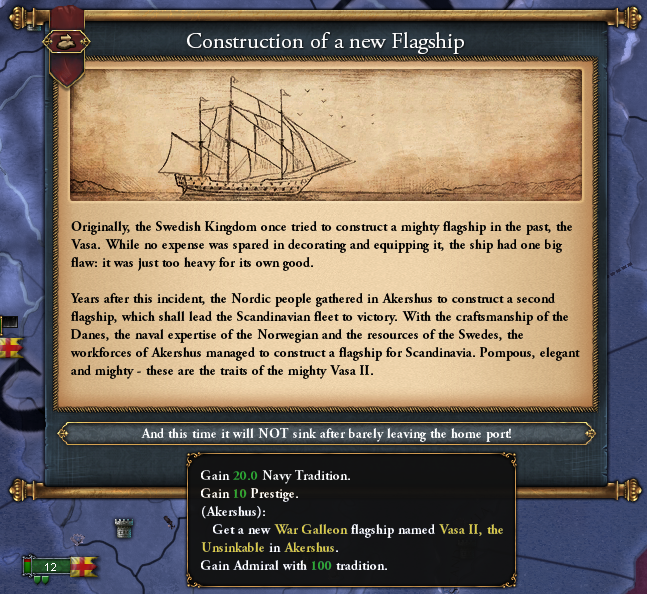

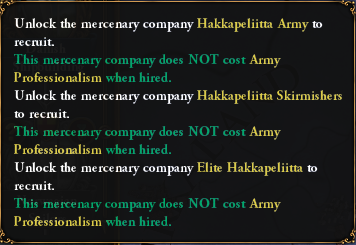
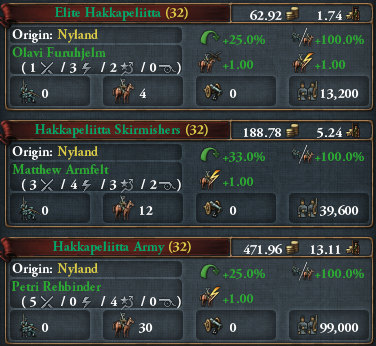
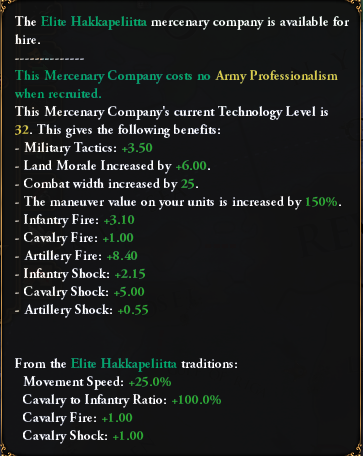
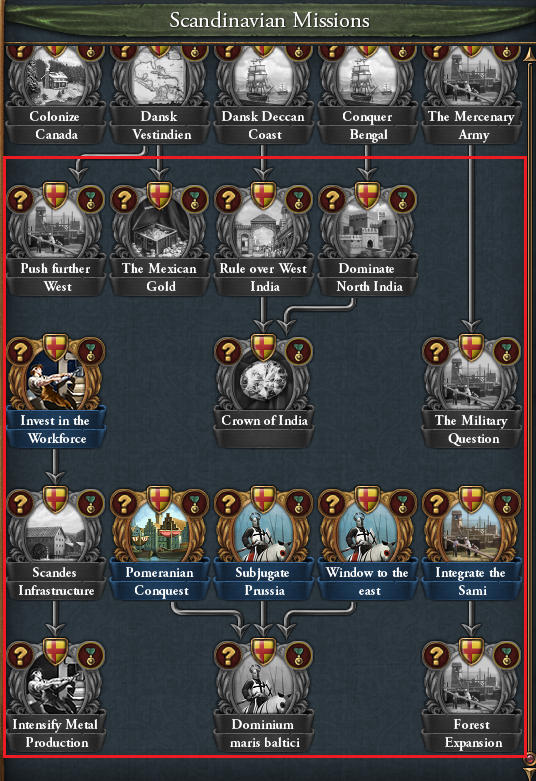
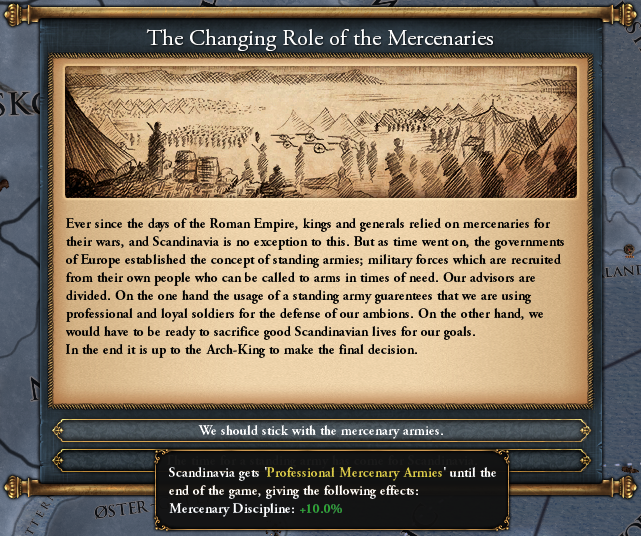
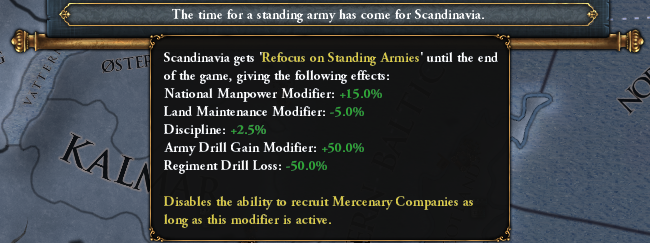

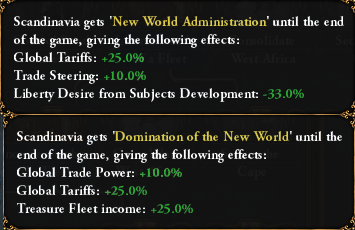
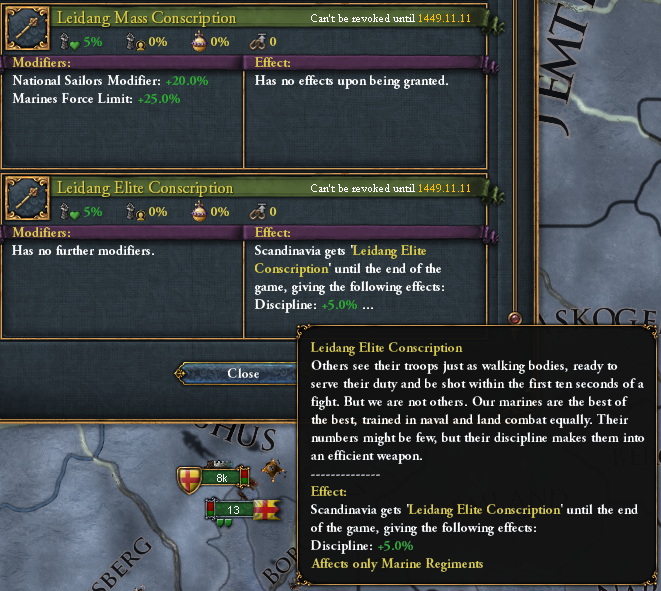
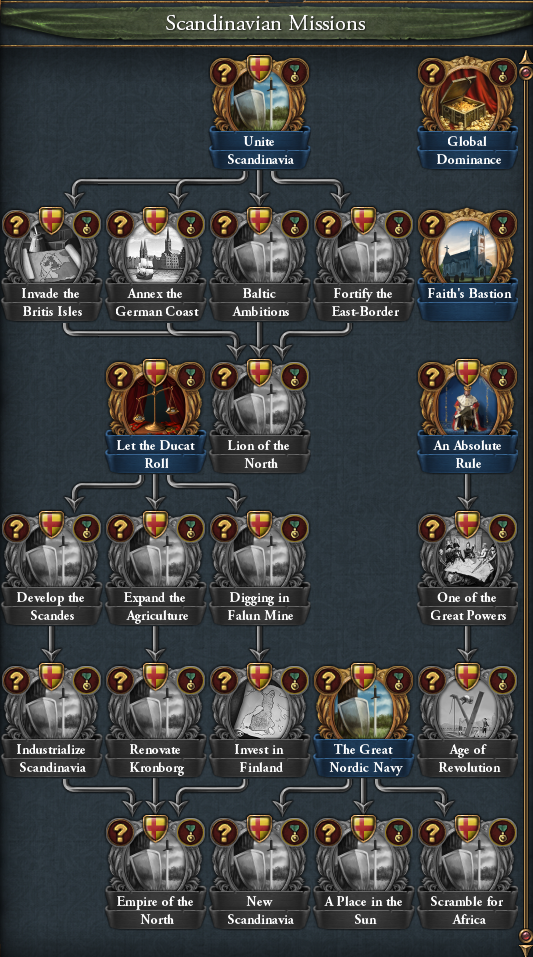
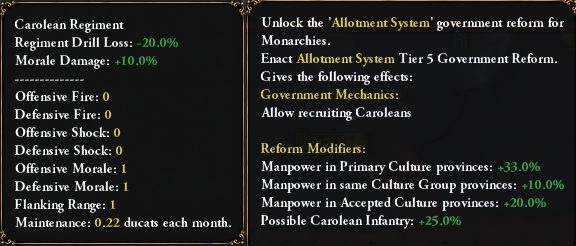

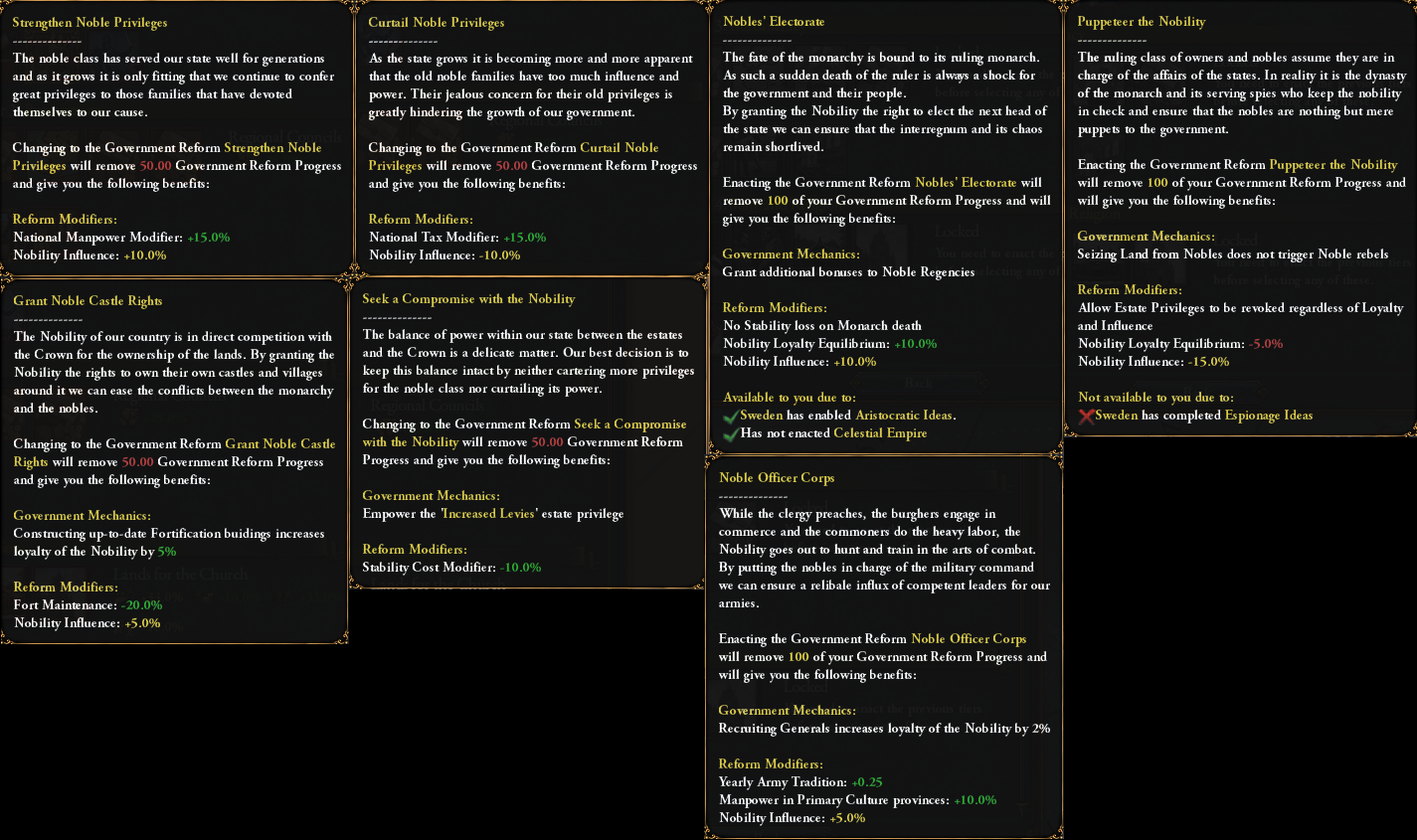
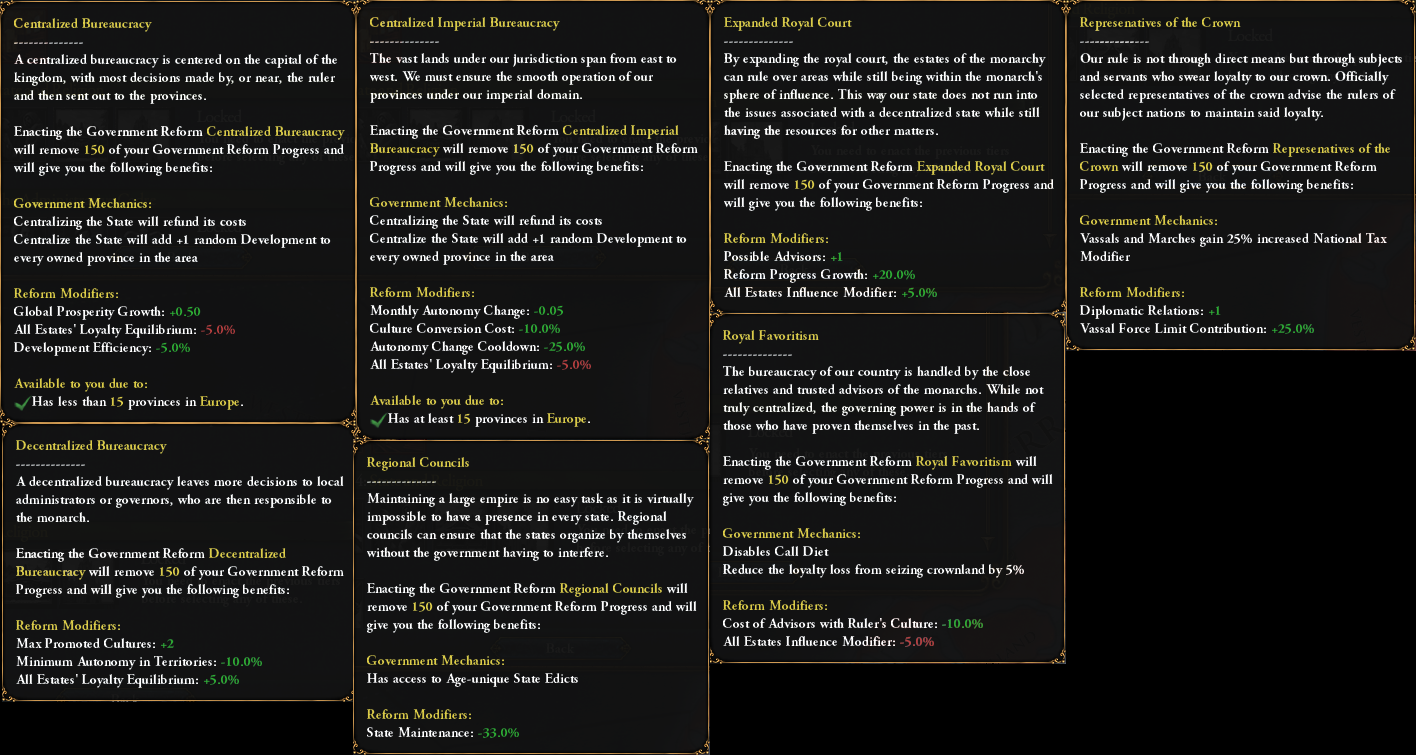
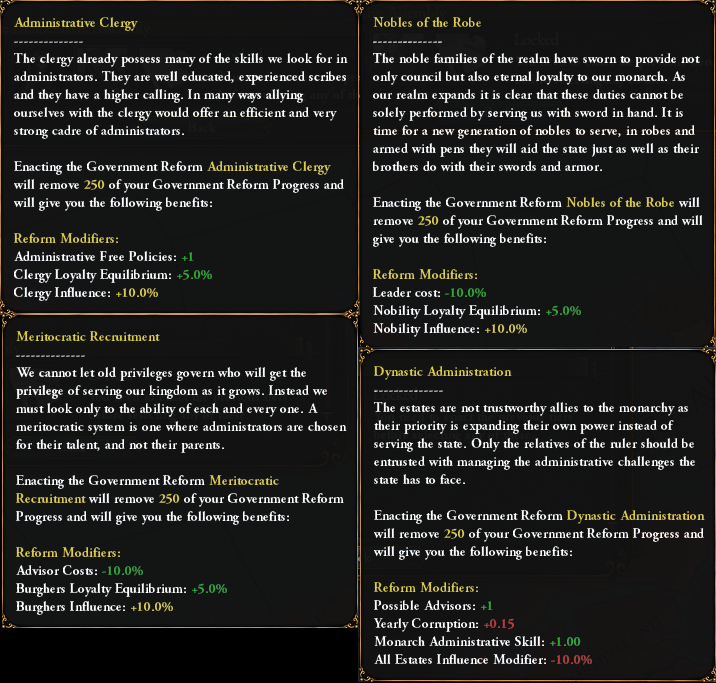

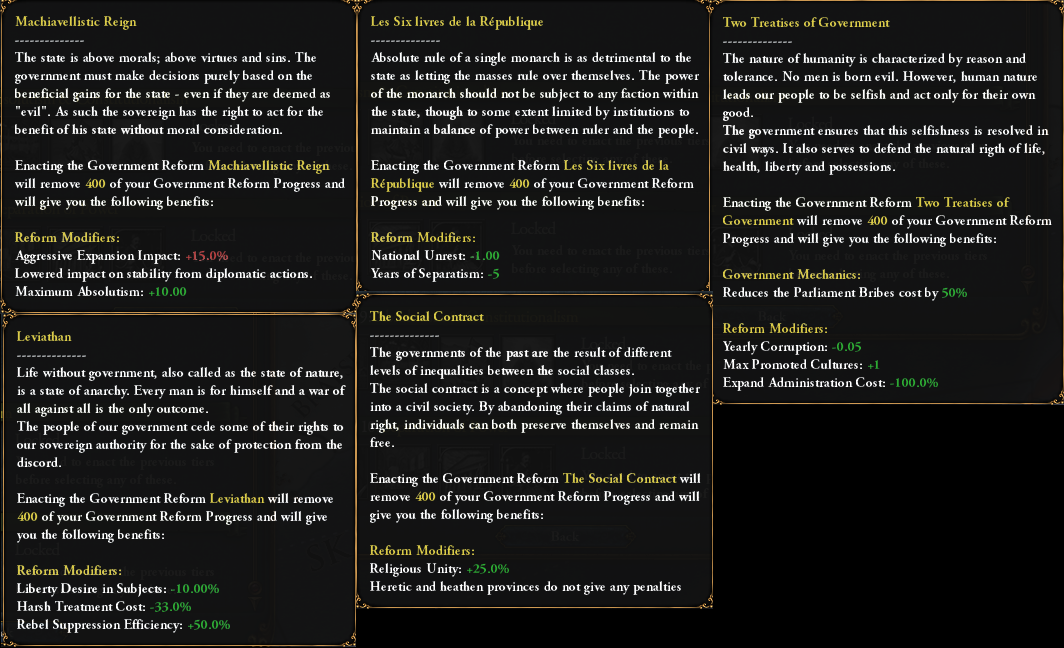

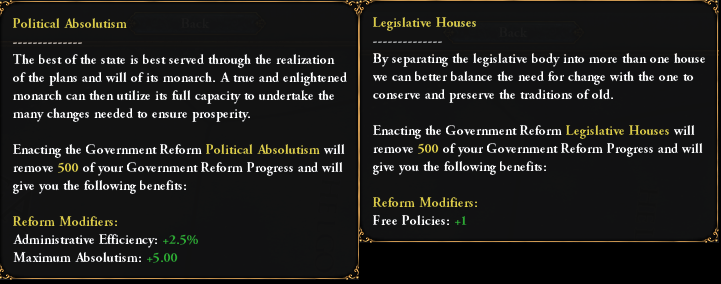

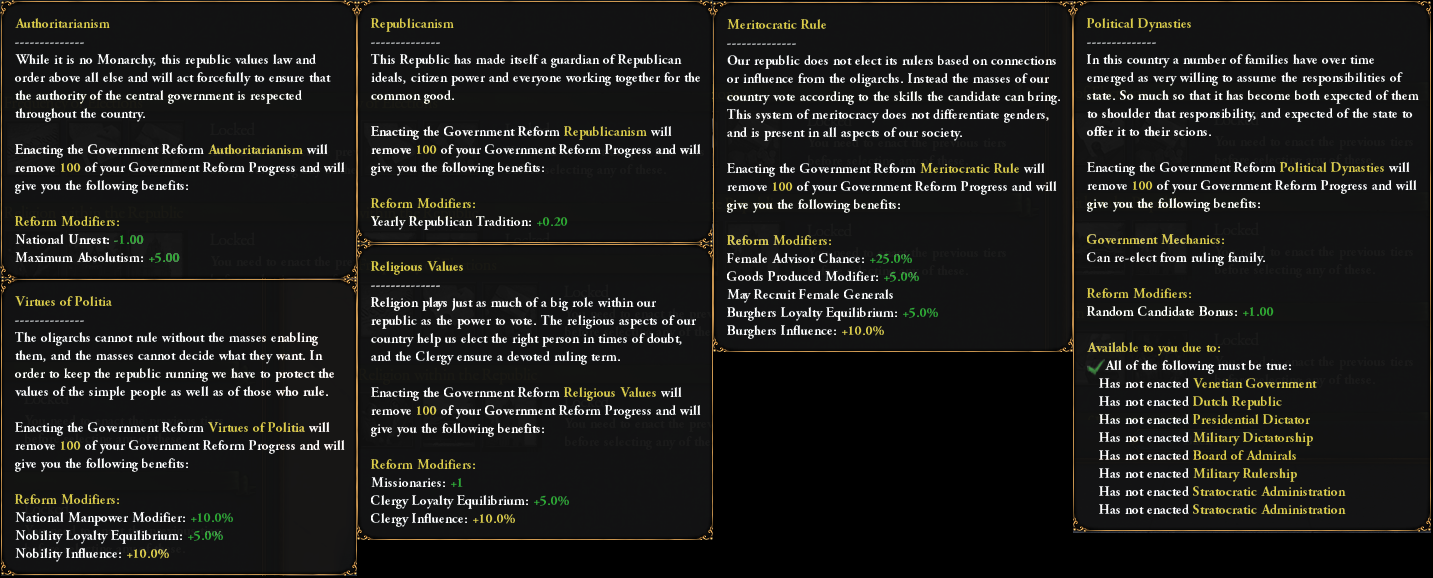
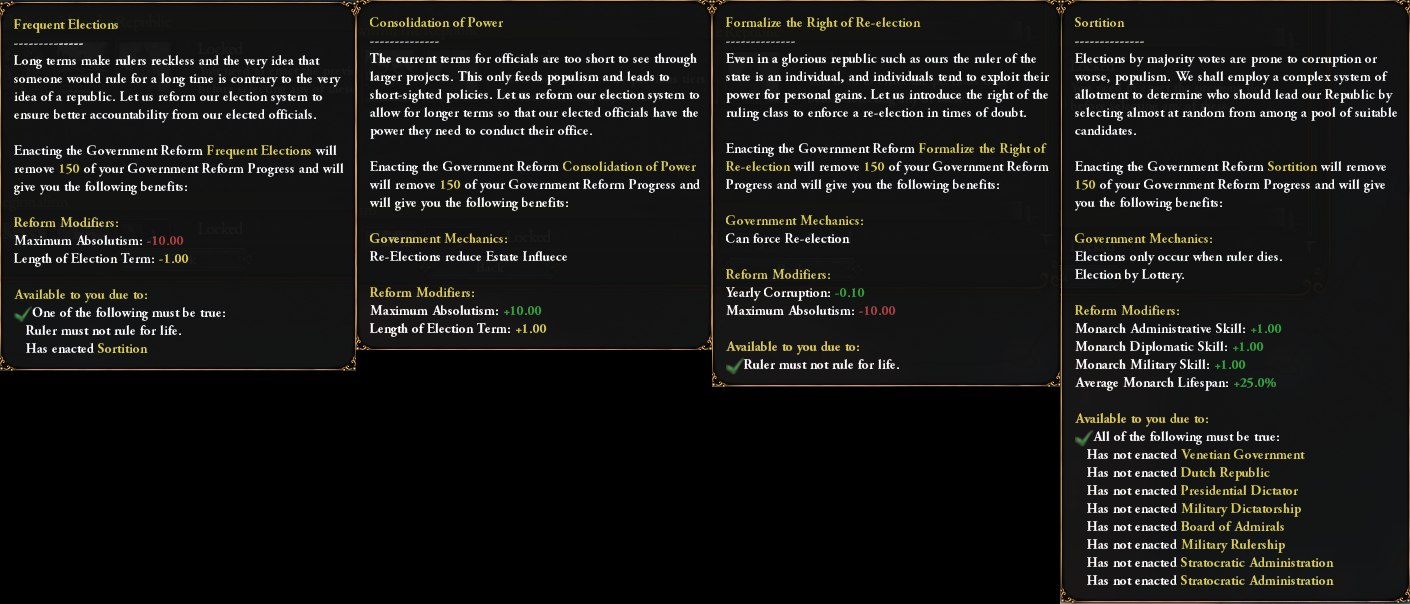
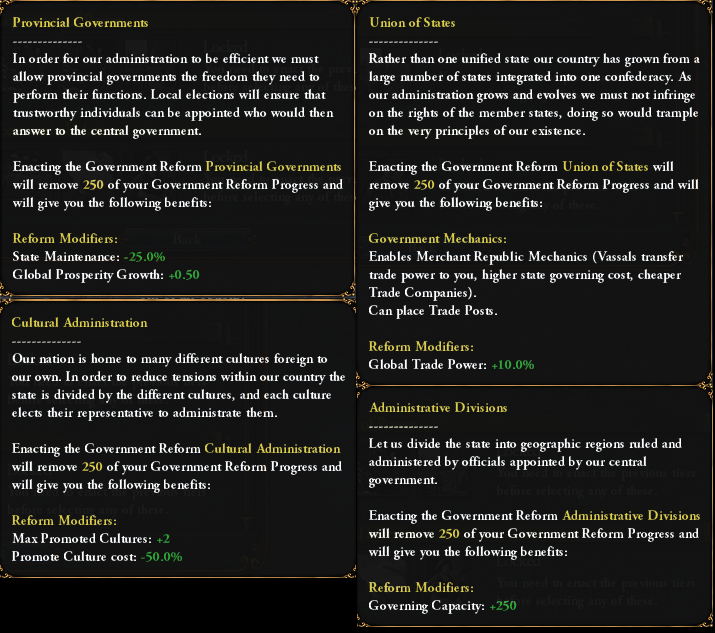

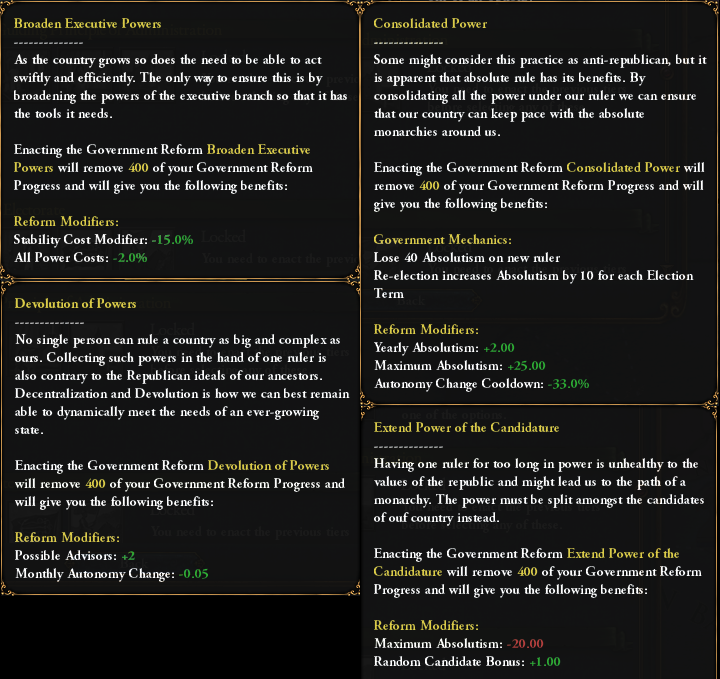
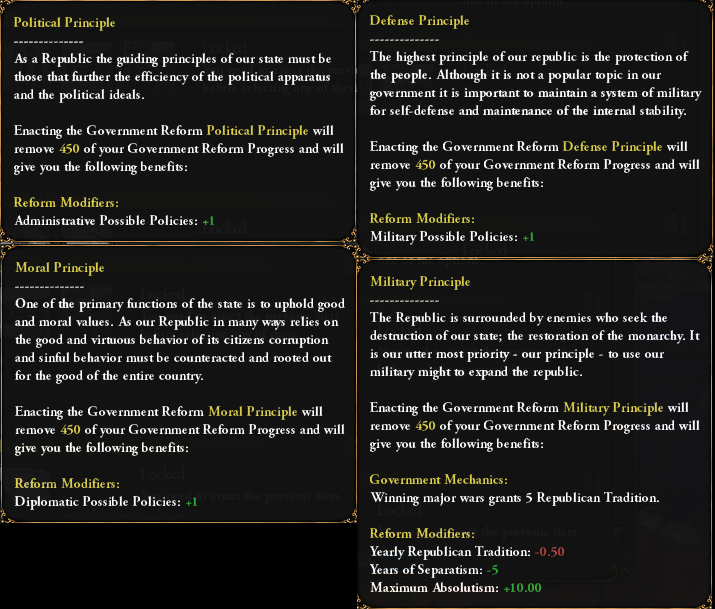
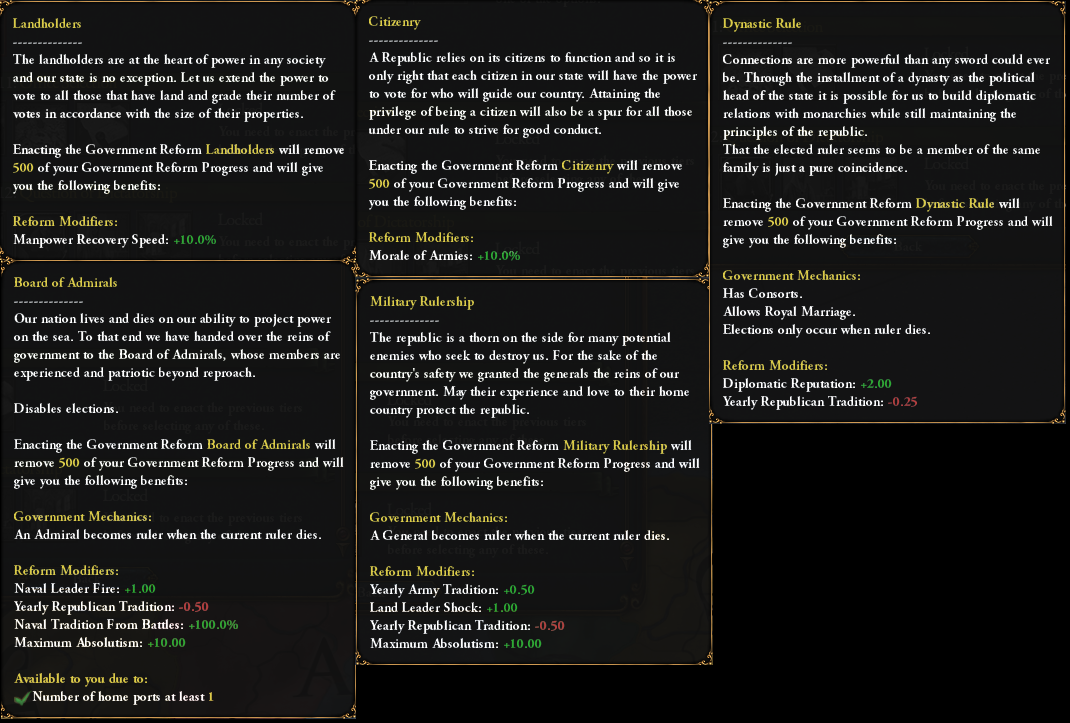
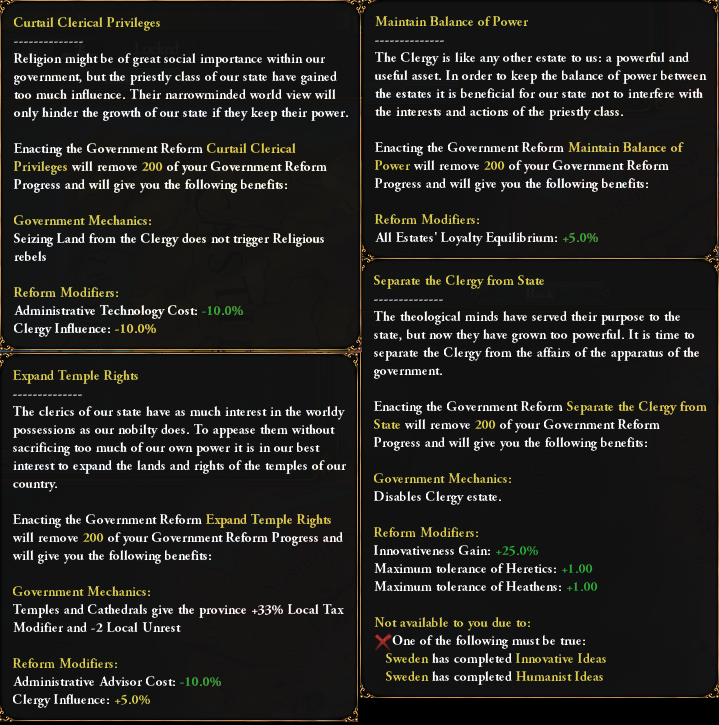
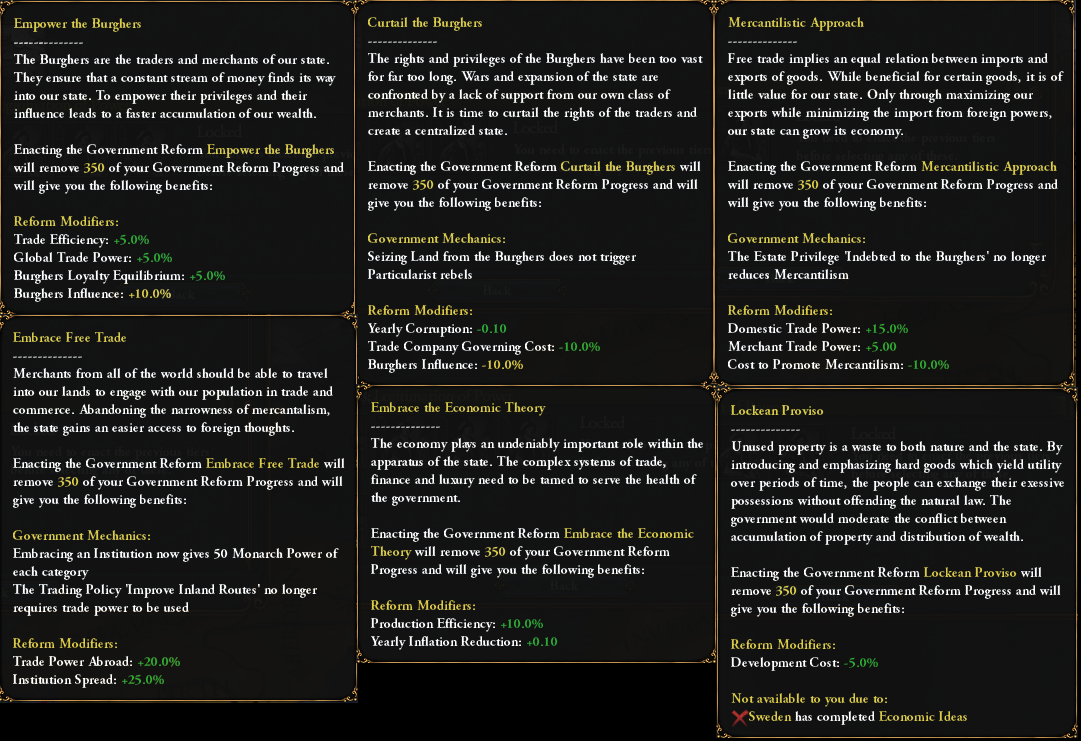
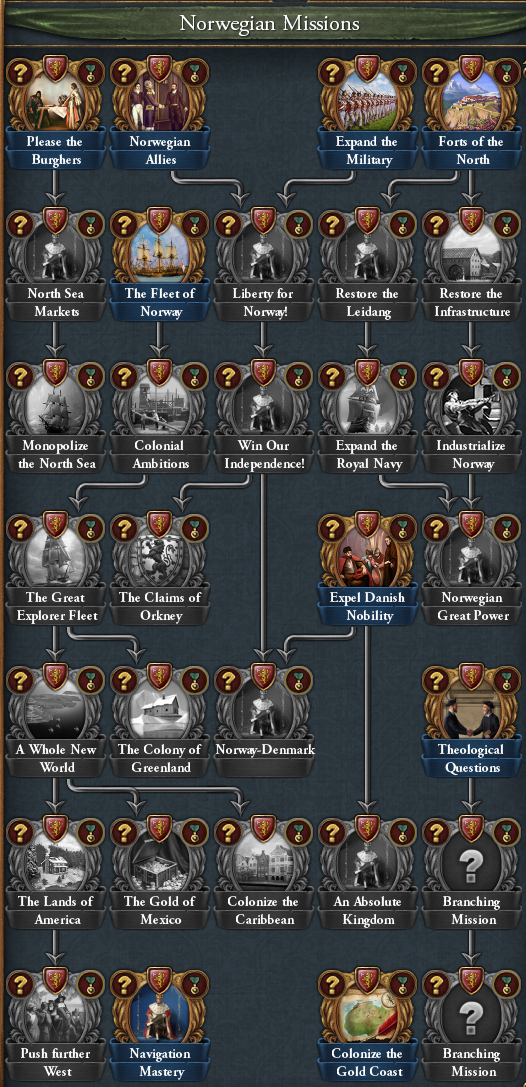
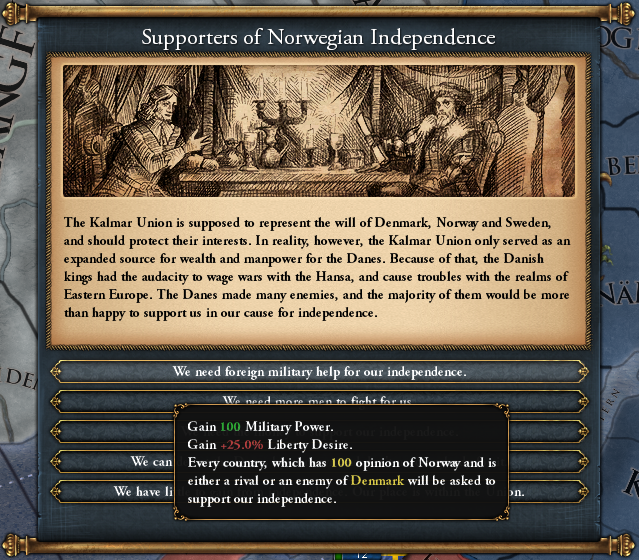


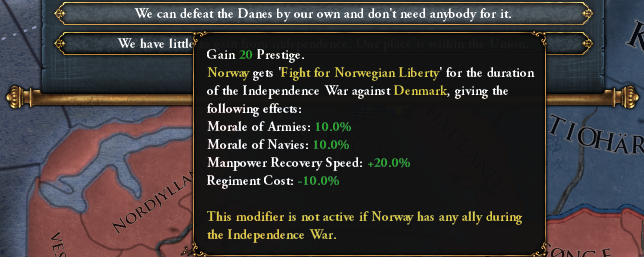

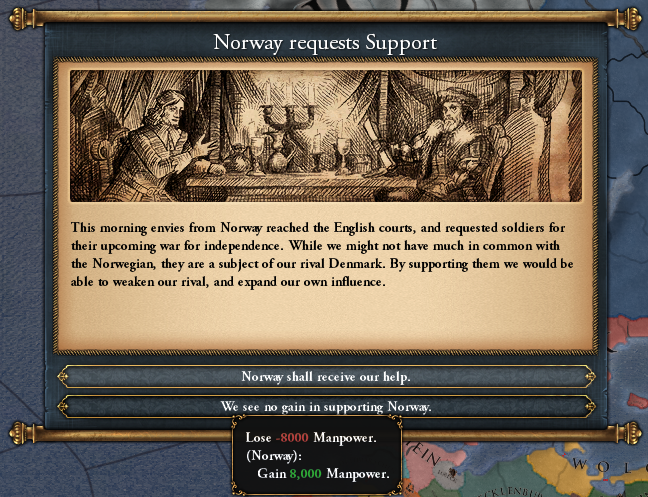
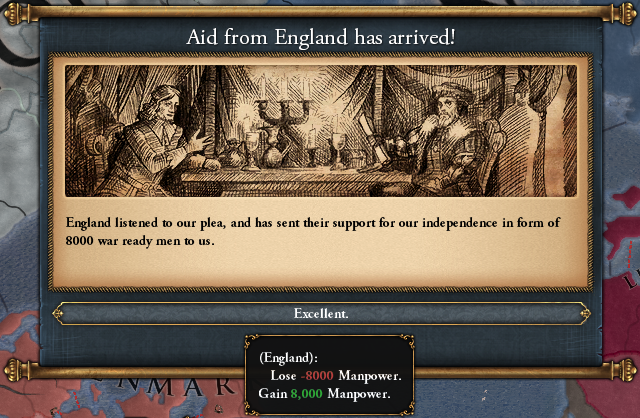
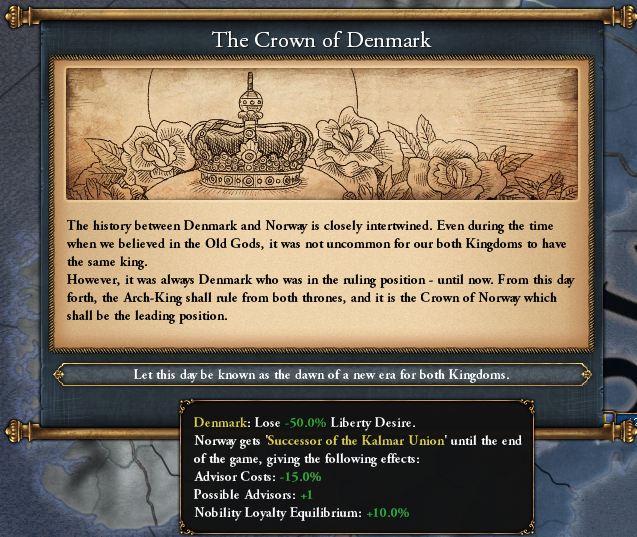
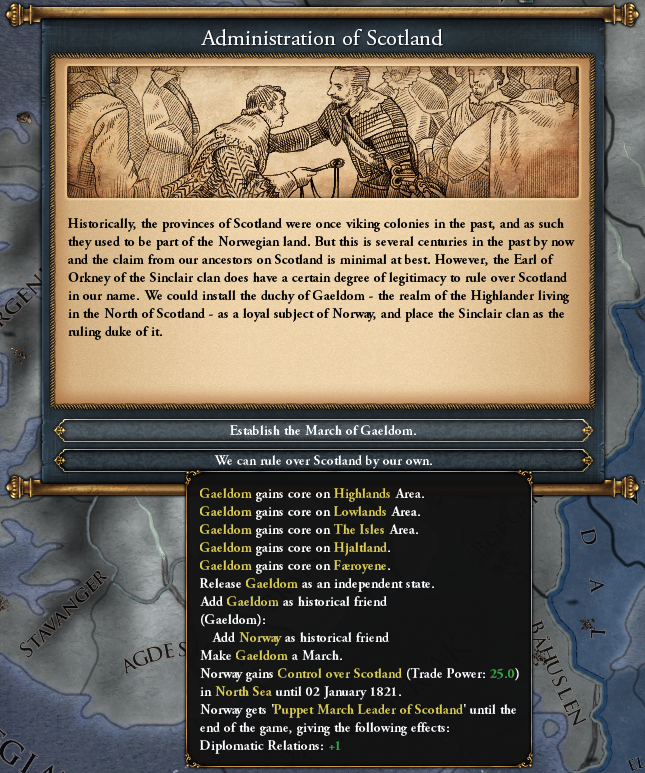

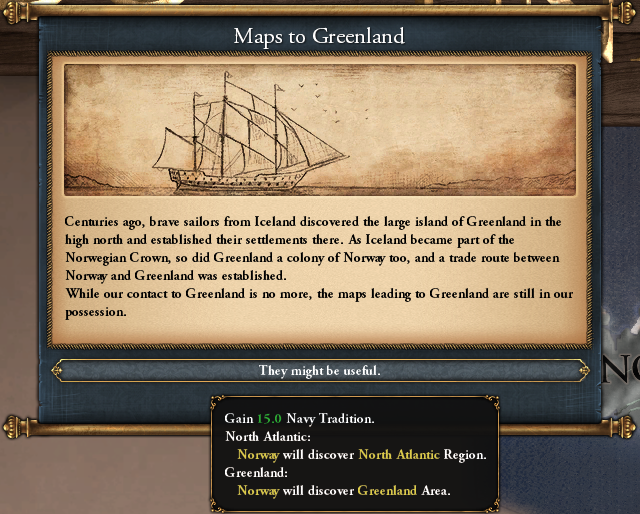
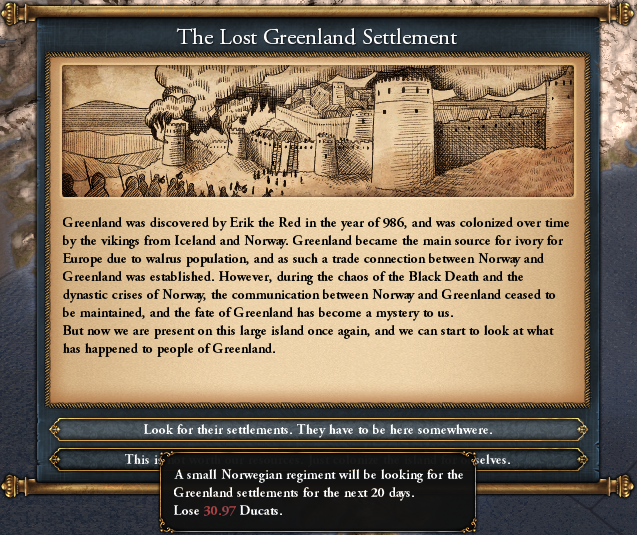

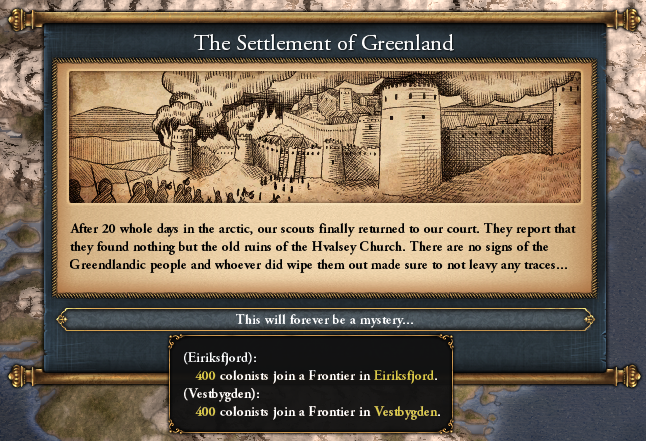
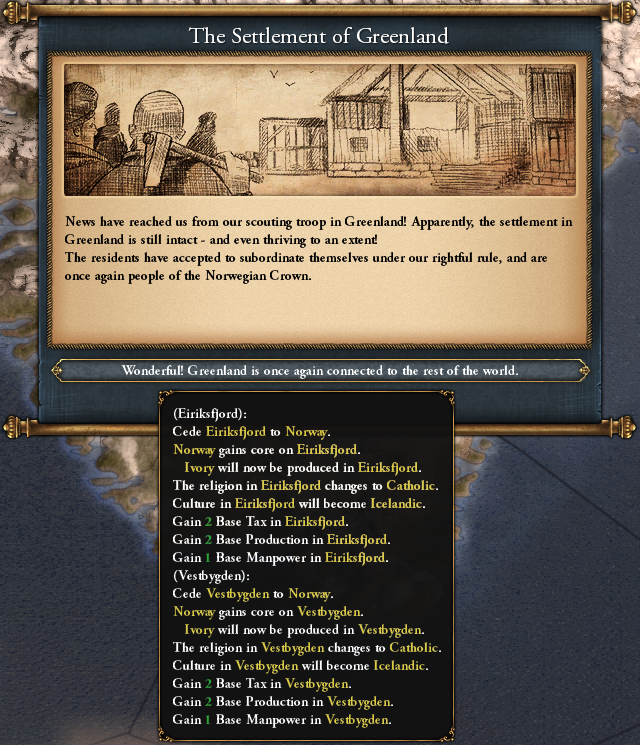
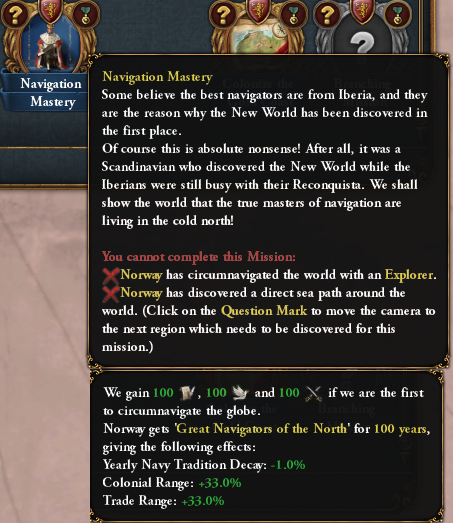
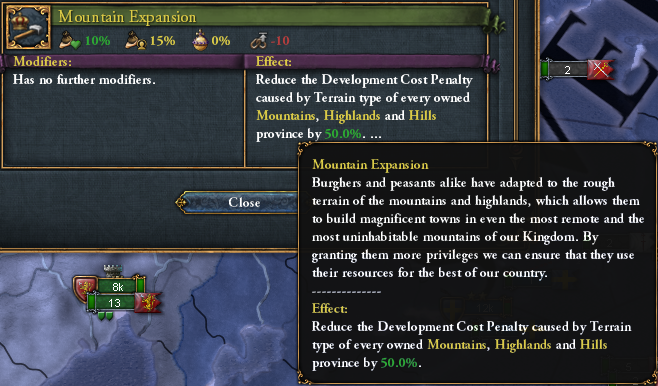
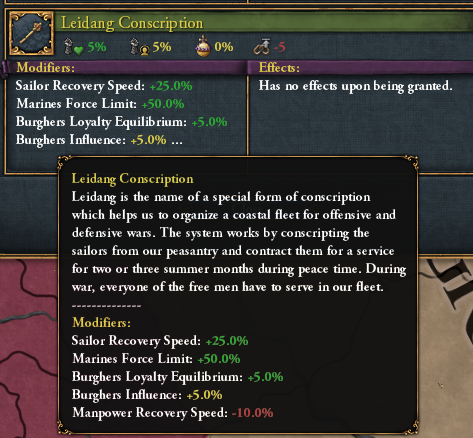
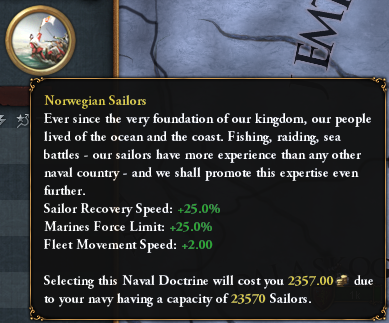

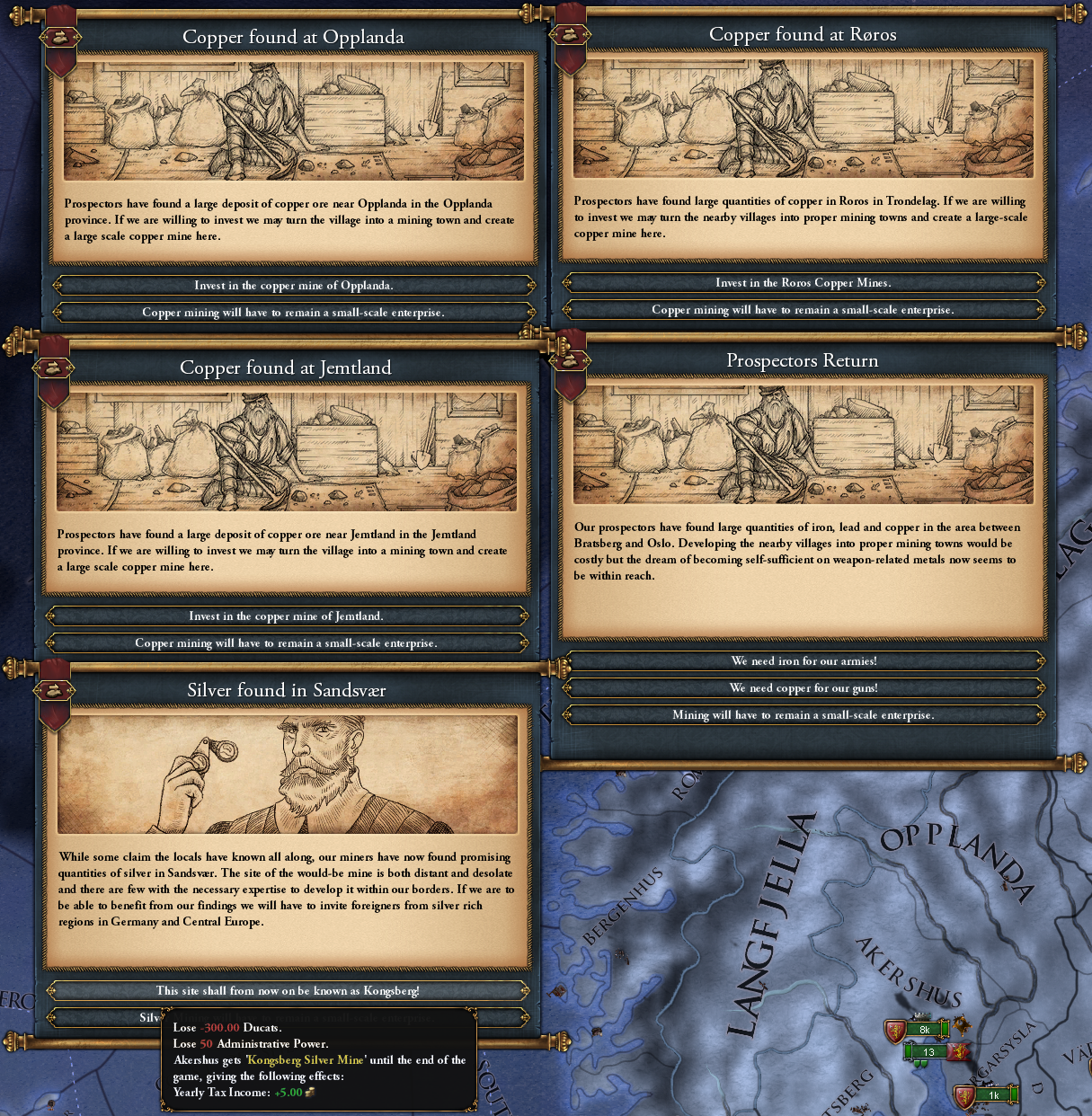
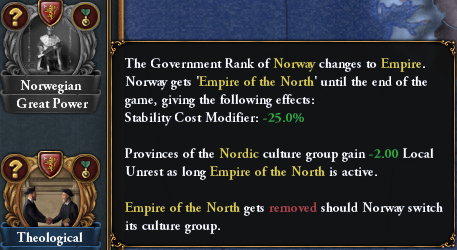
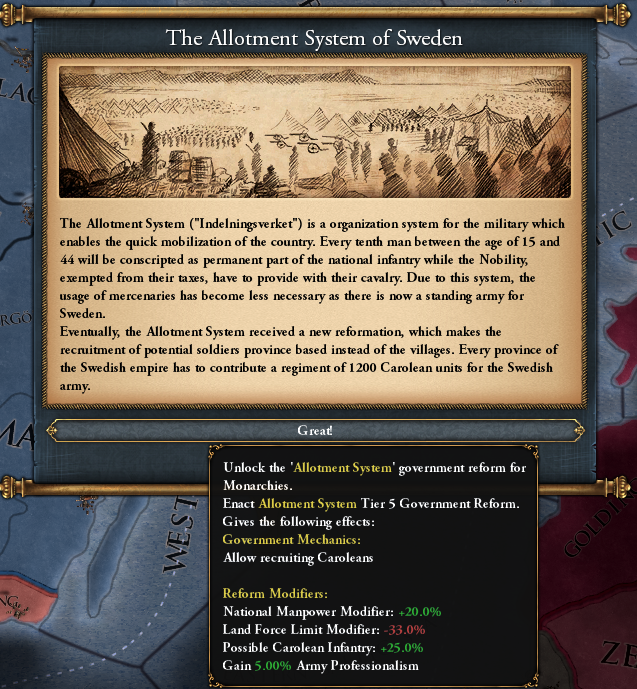
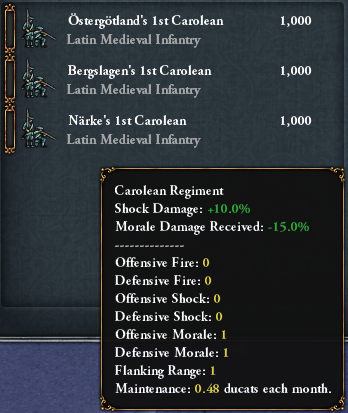
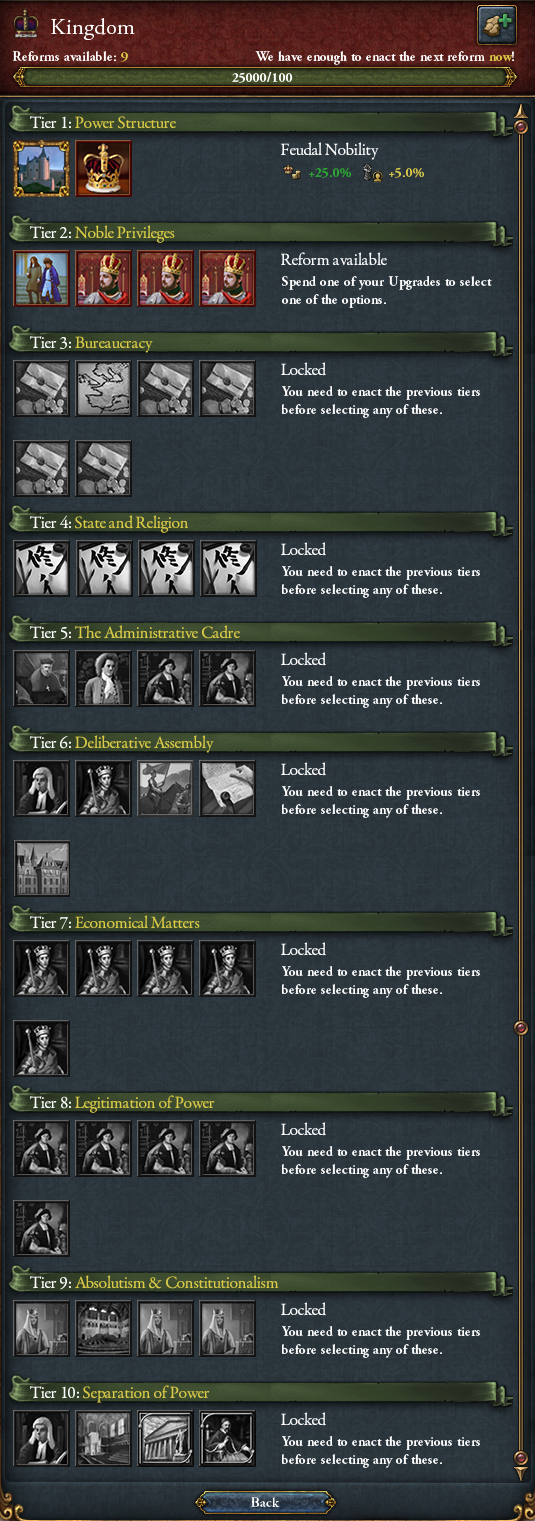
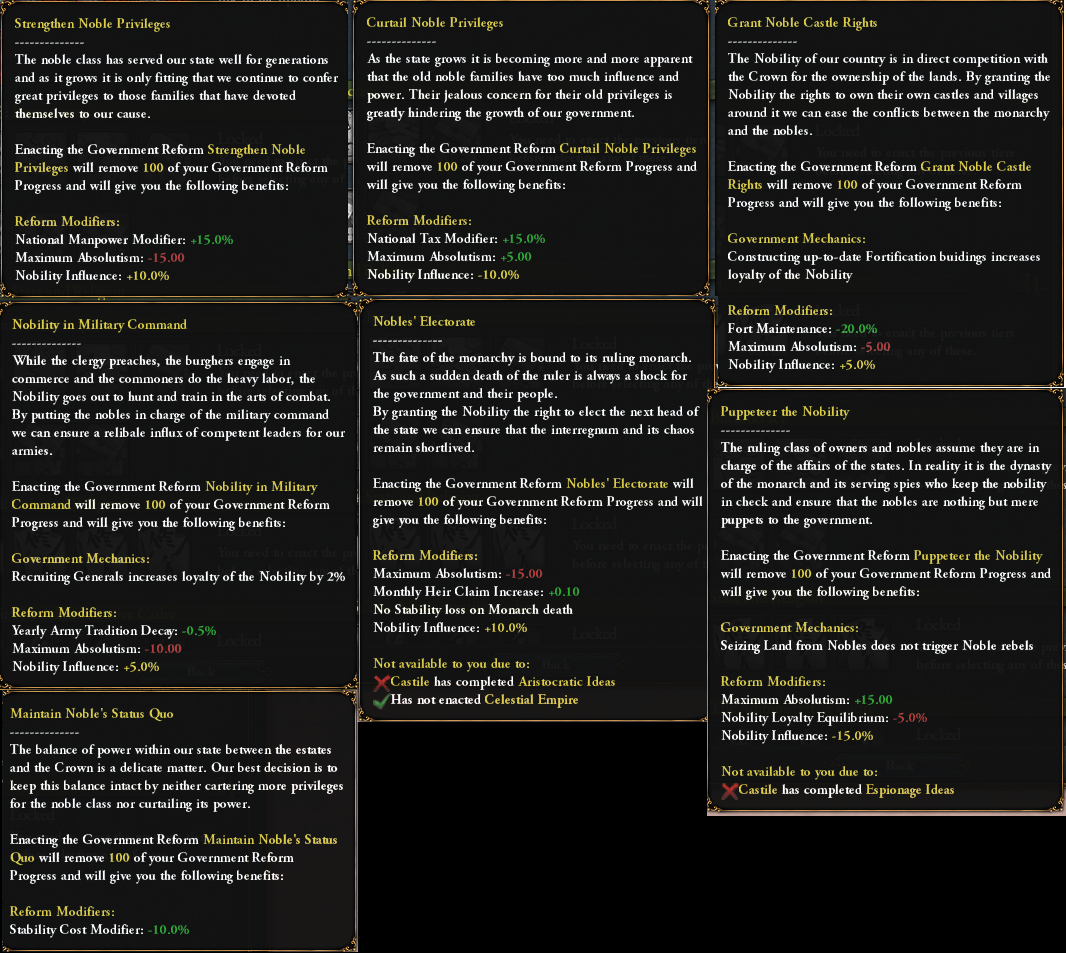
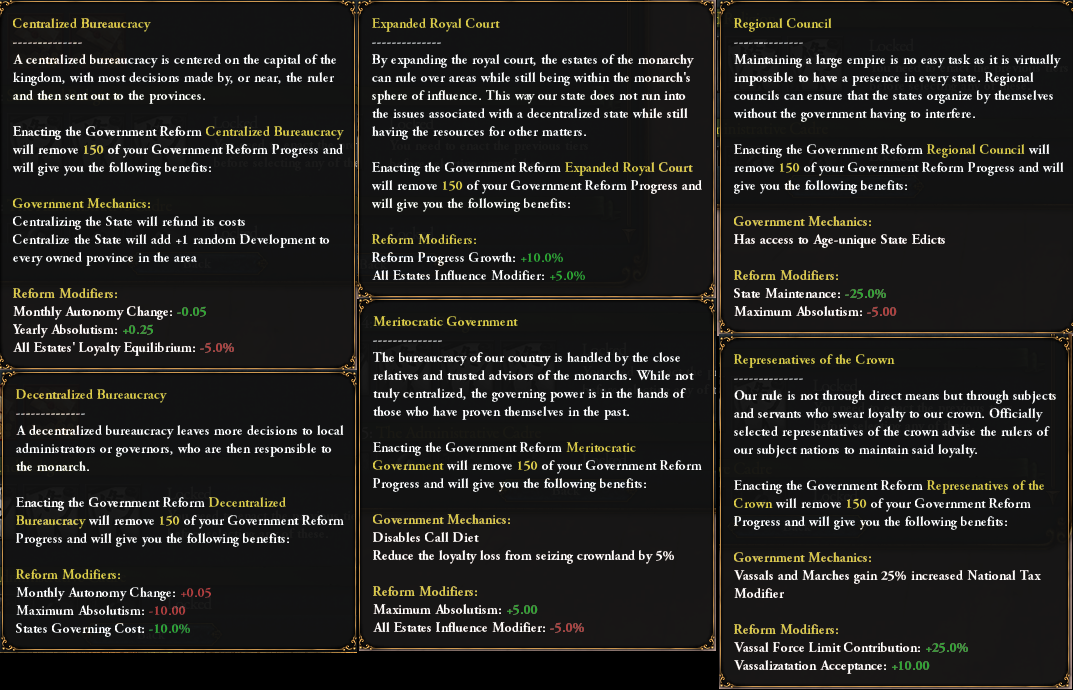

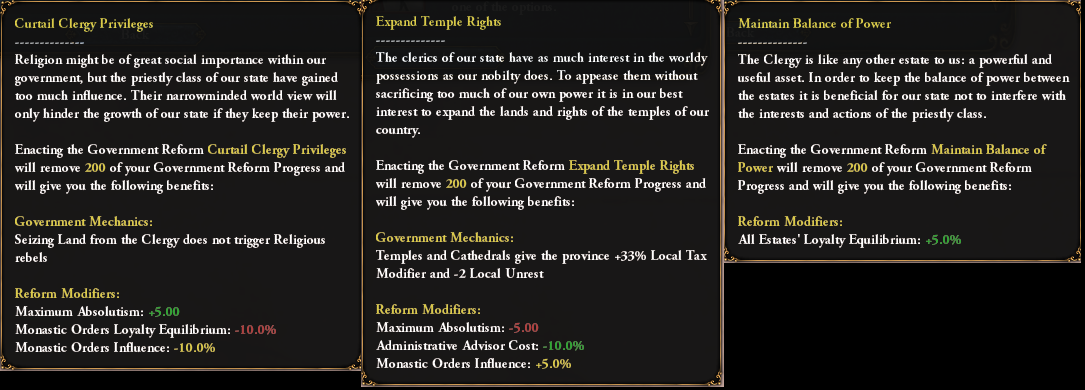
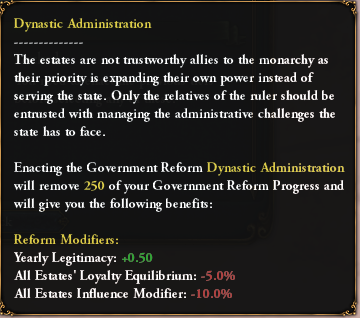
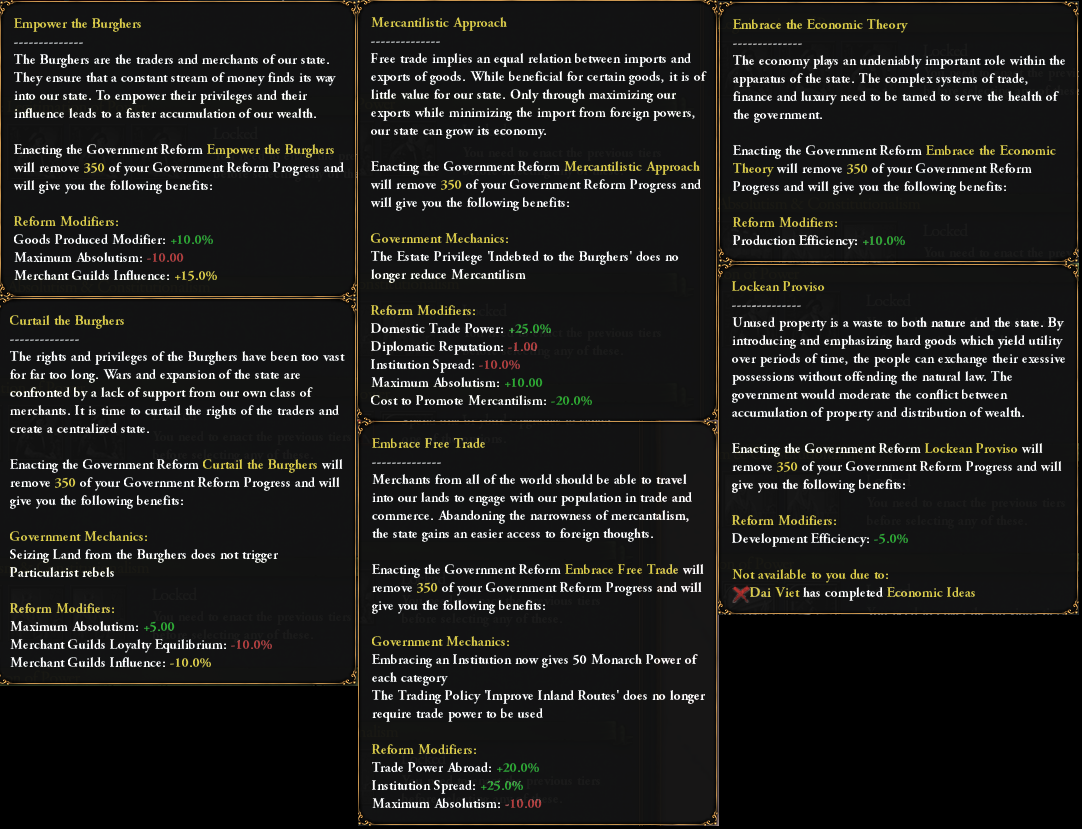
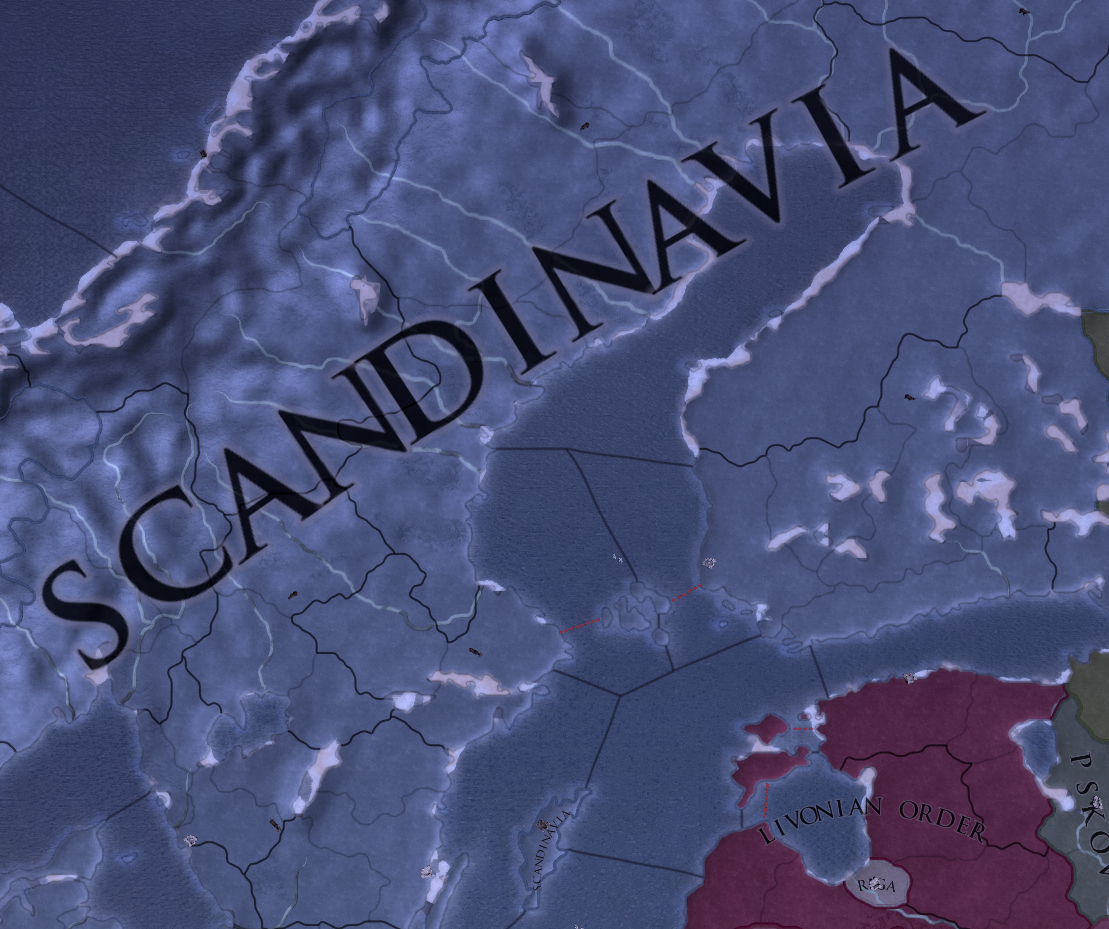

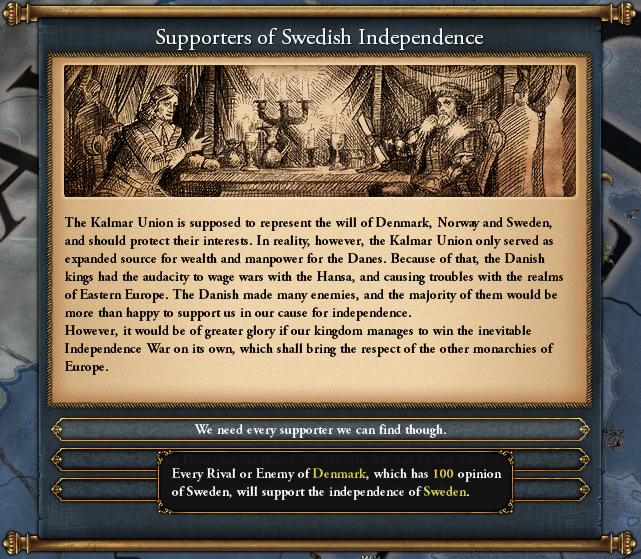
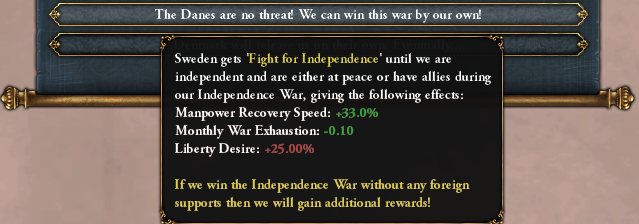
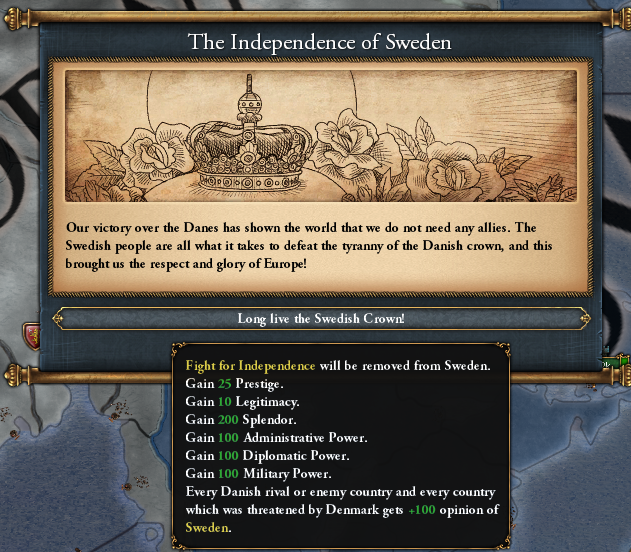
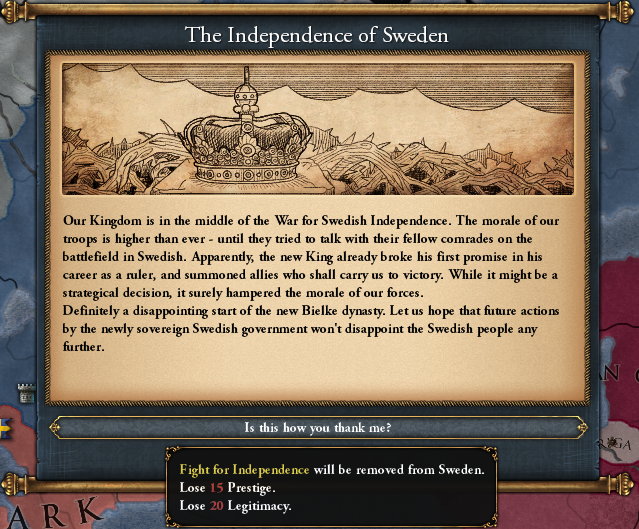
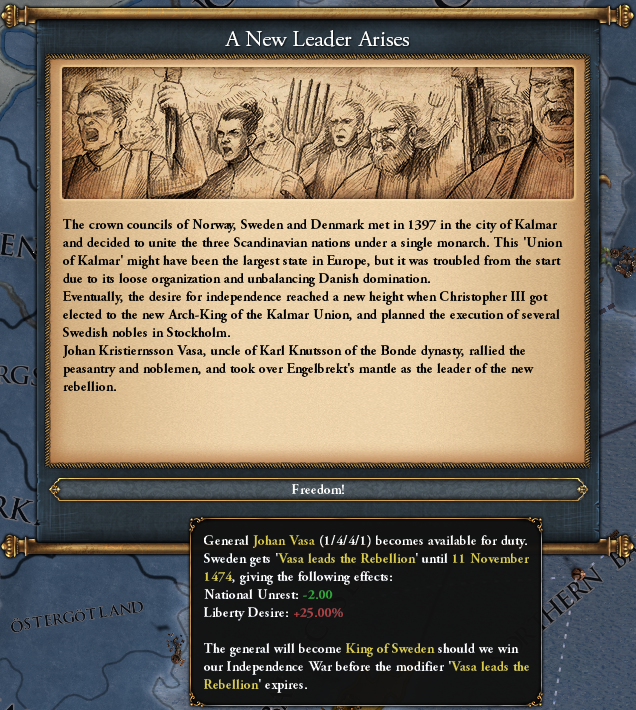
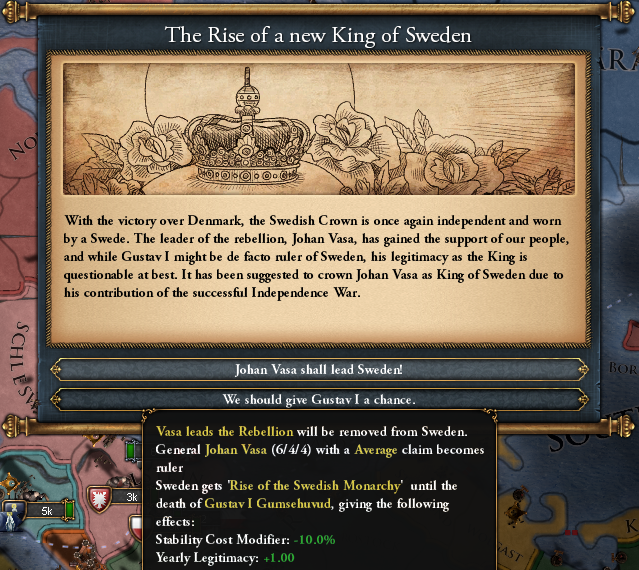
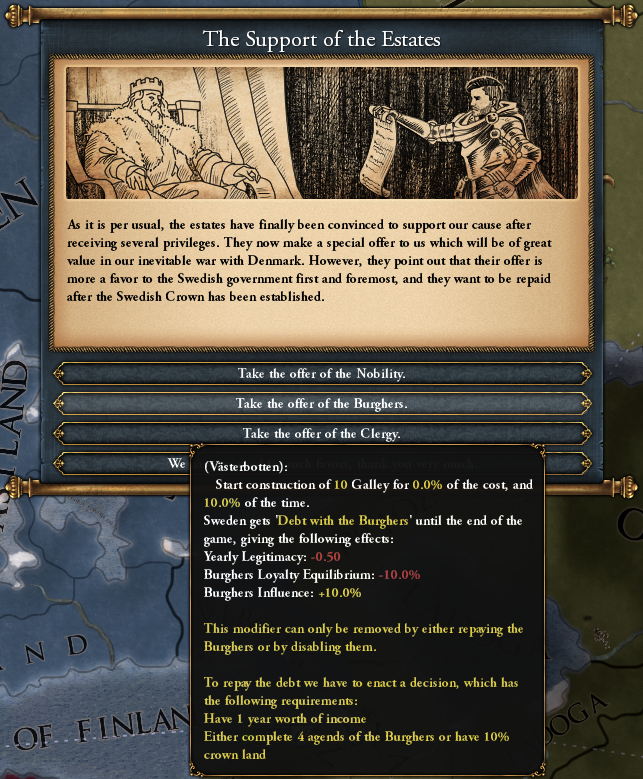
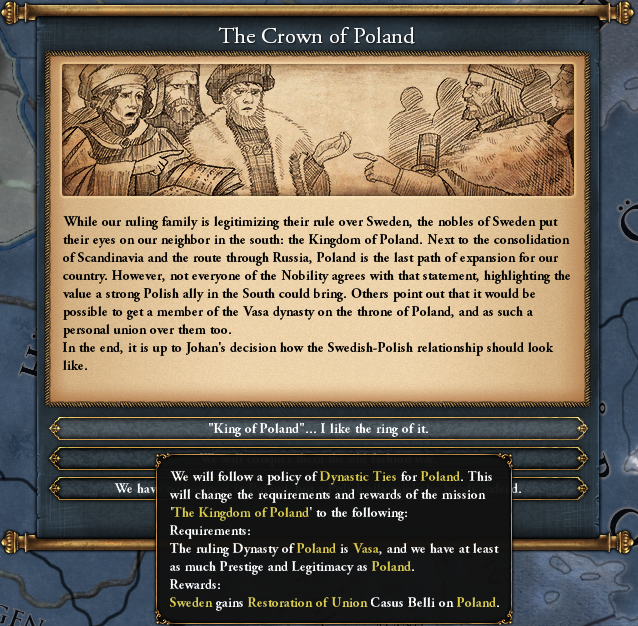
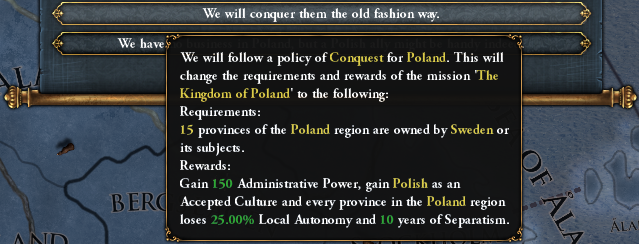
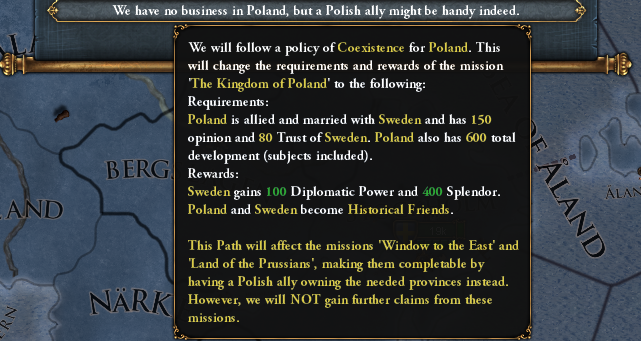
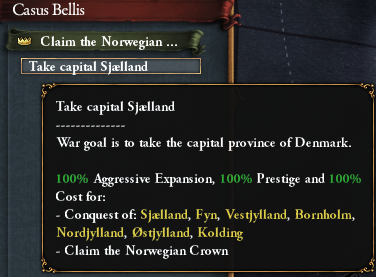


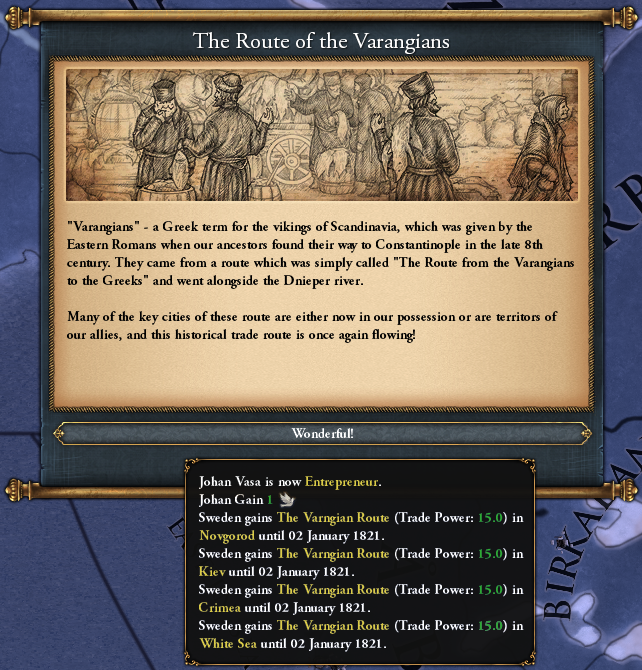

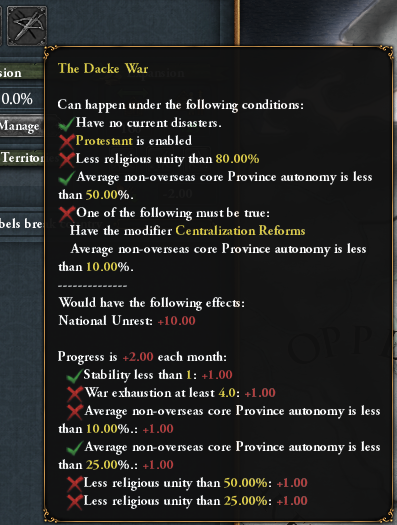
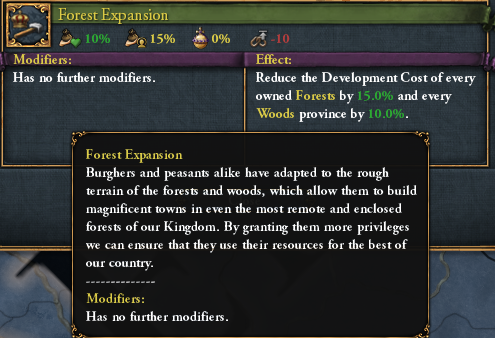
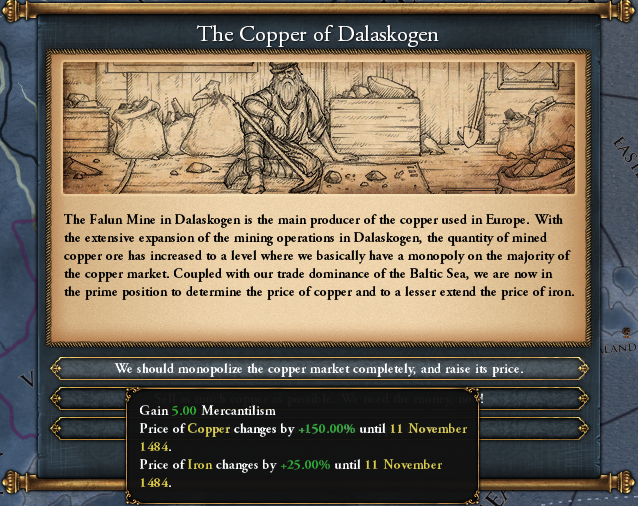


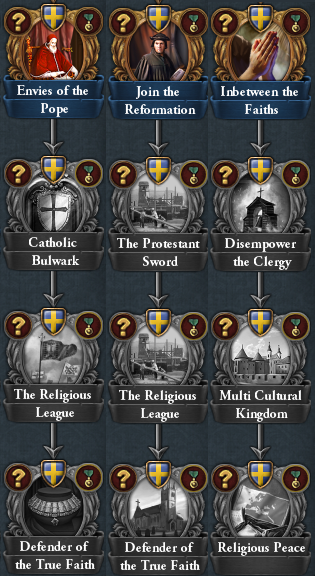
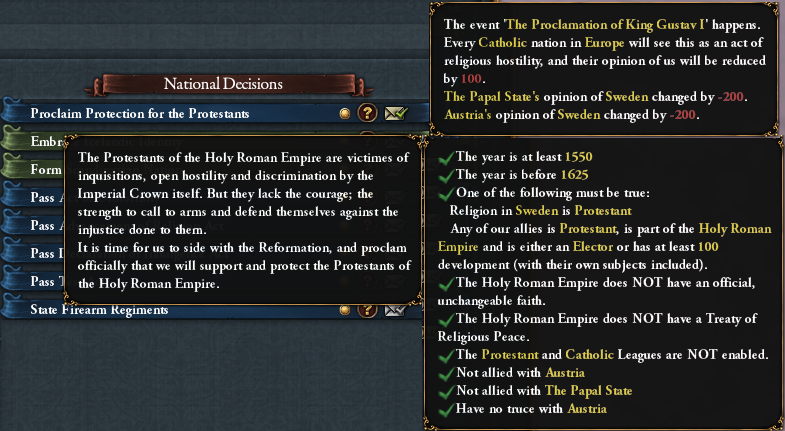
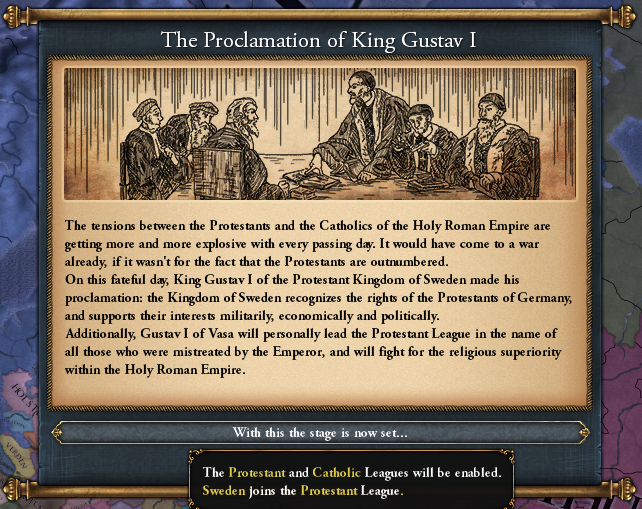

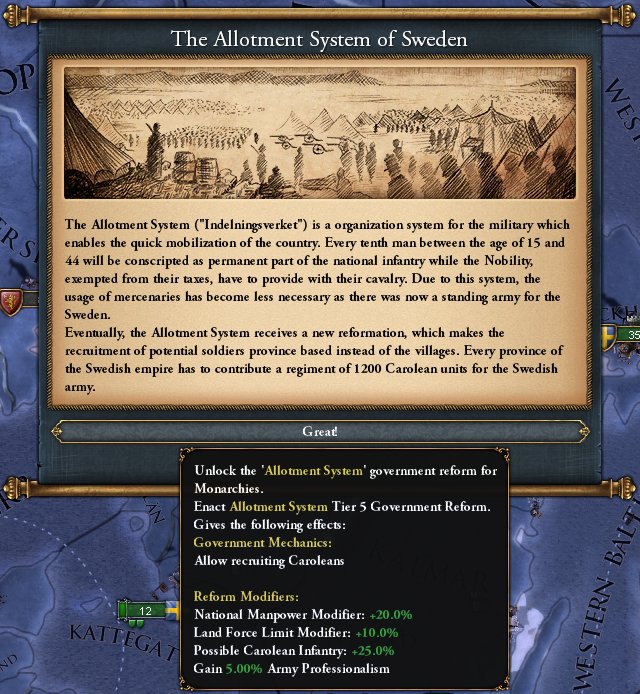
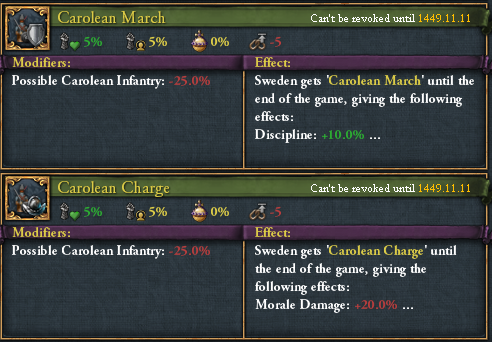
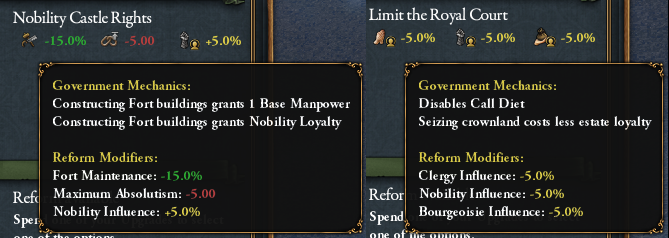


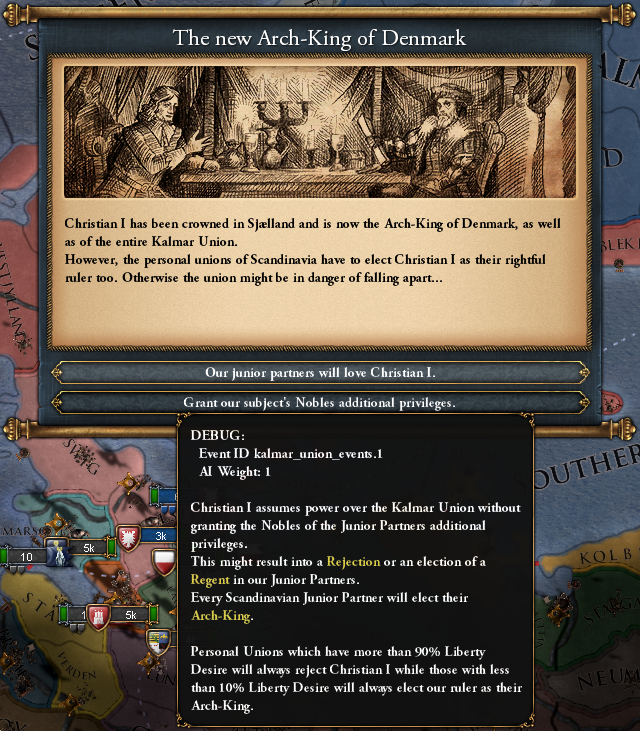
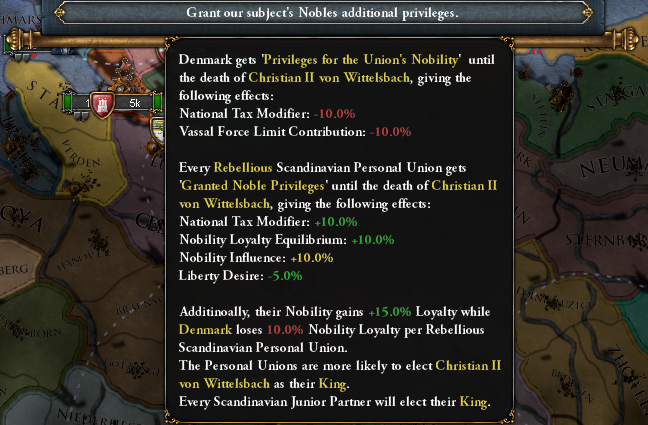
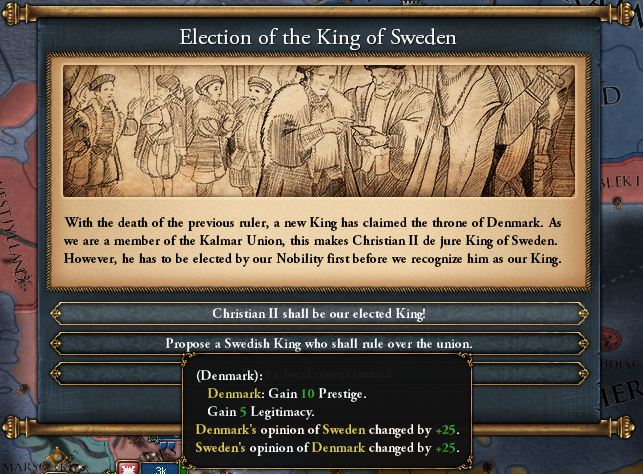
 alt="ele
alt="ele
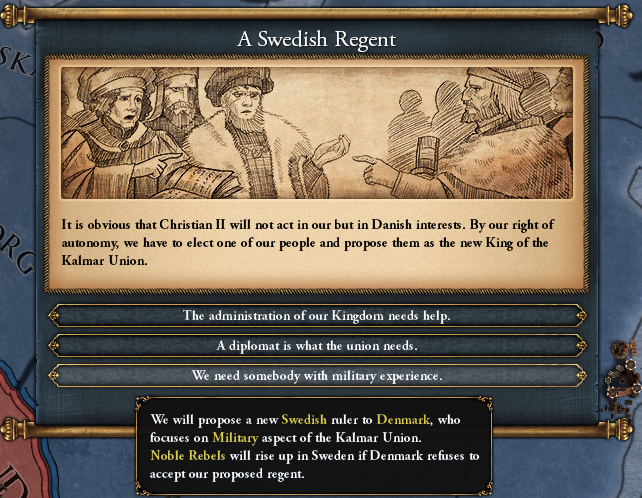
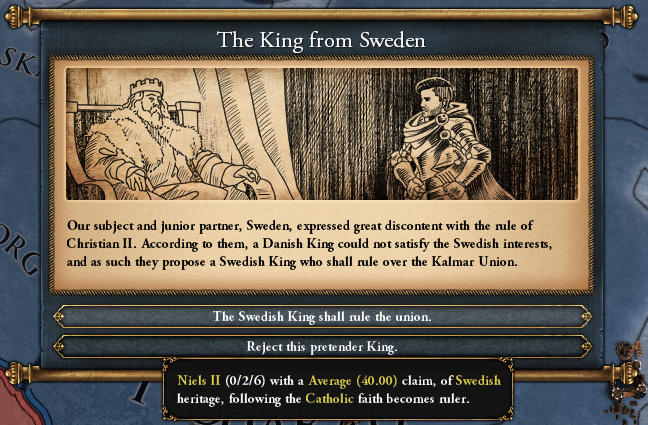

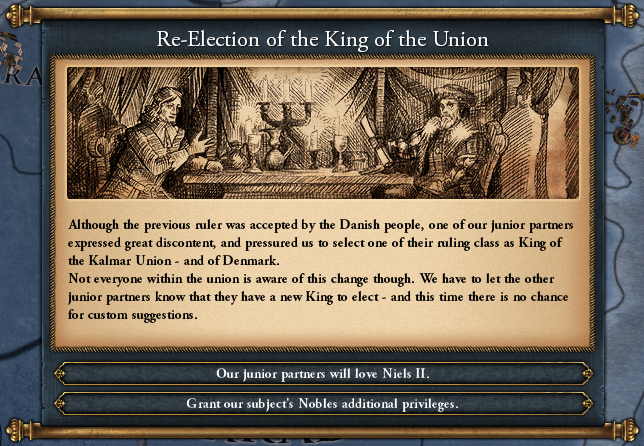
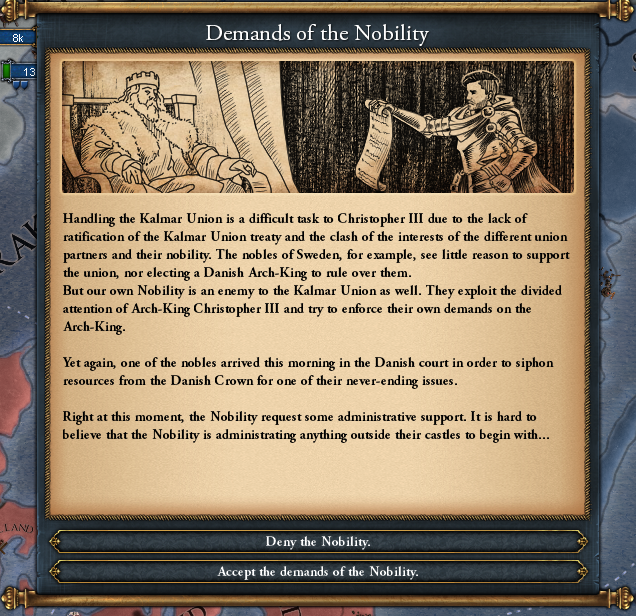
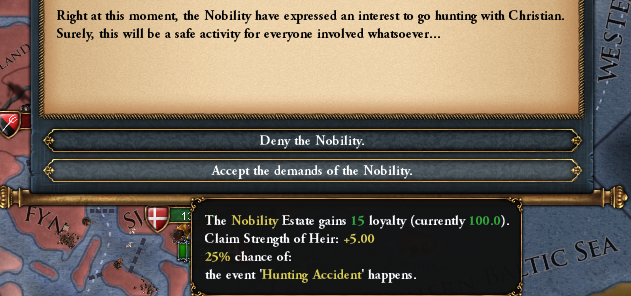
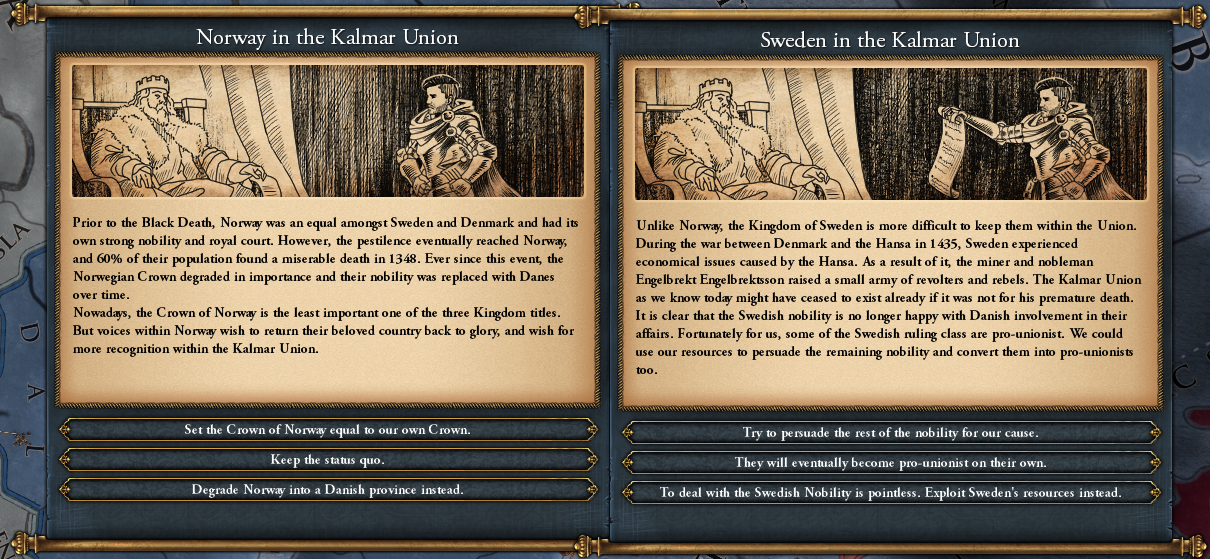

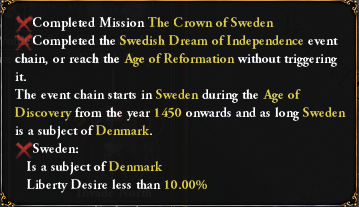
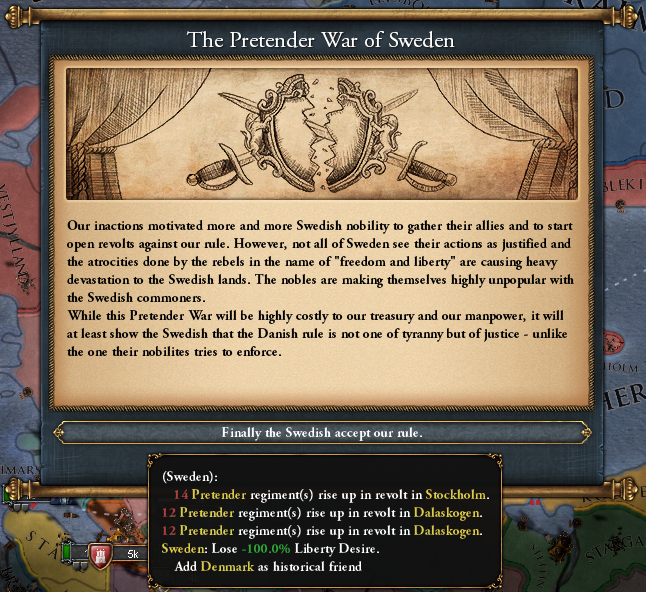
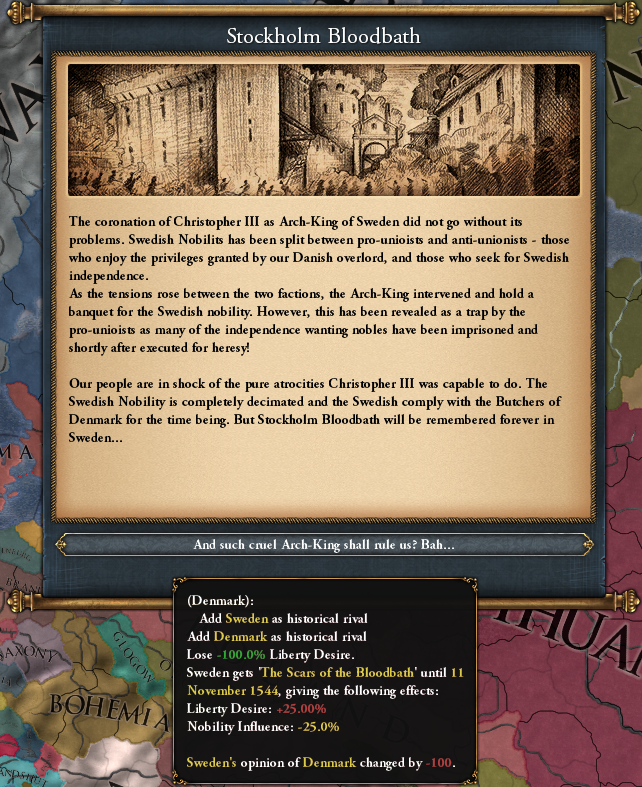
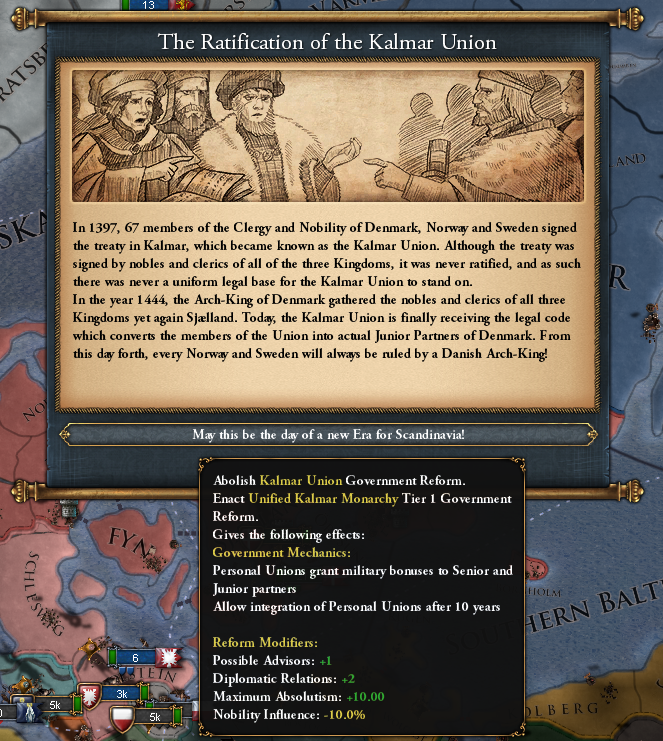


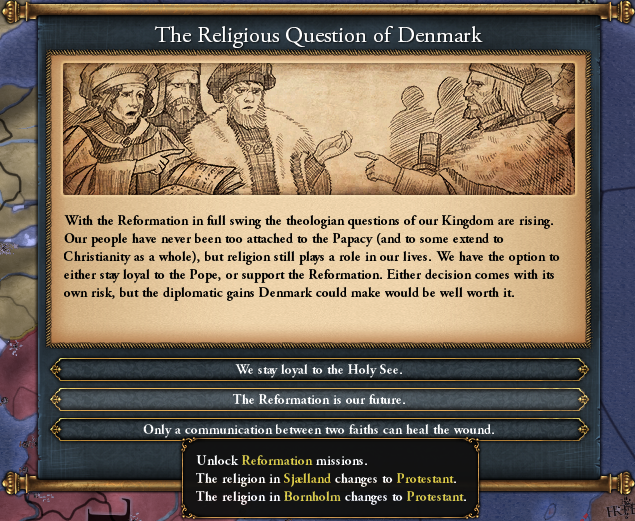
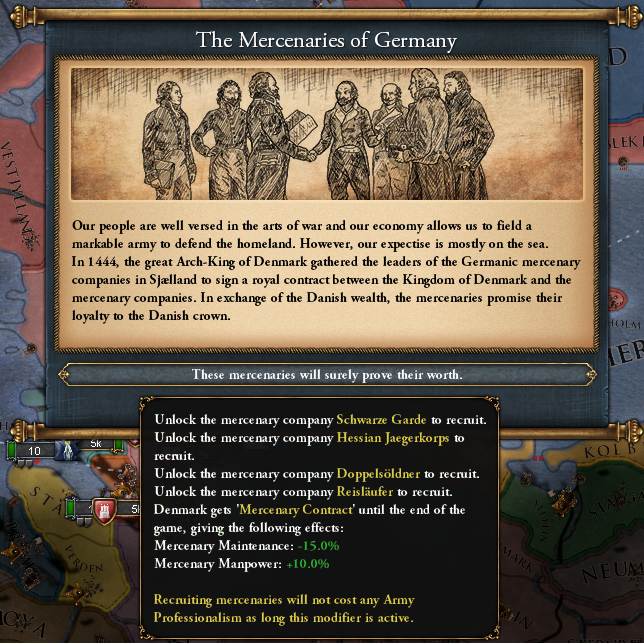
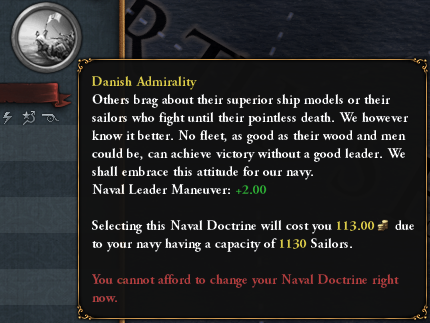 For Norwegian countries:
For Norwegian countries: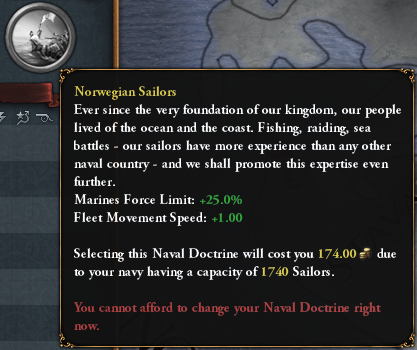 For Dutch / Flemish countries:
For Dutch / Flemish countries: